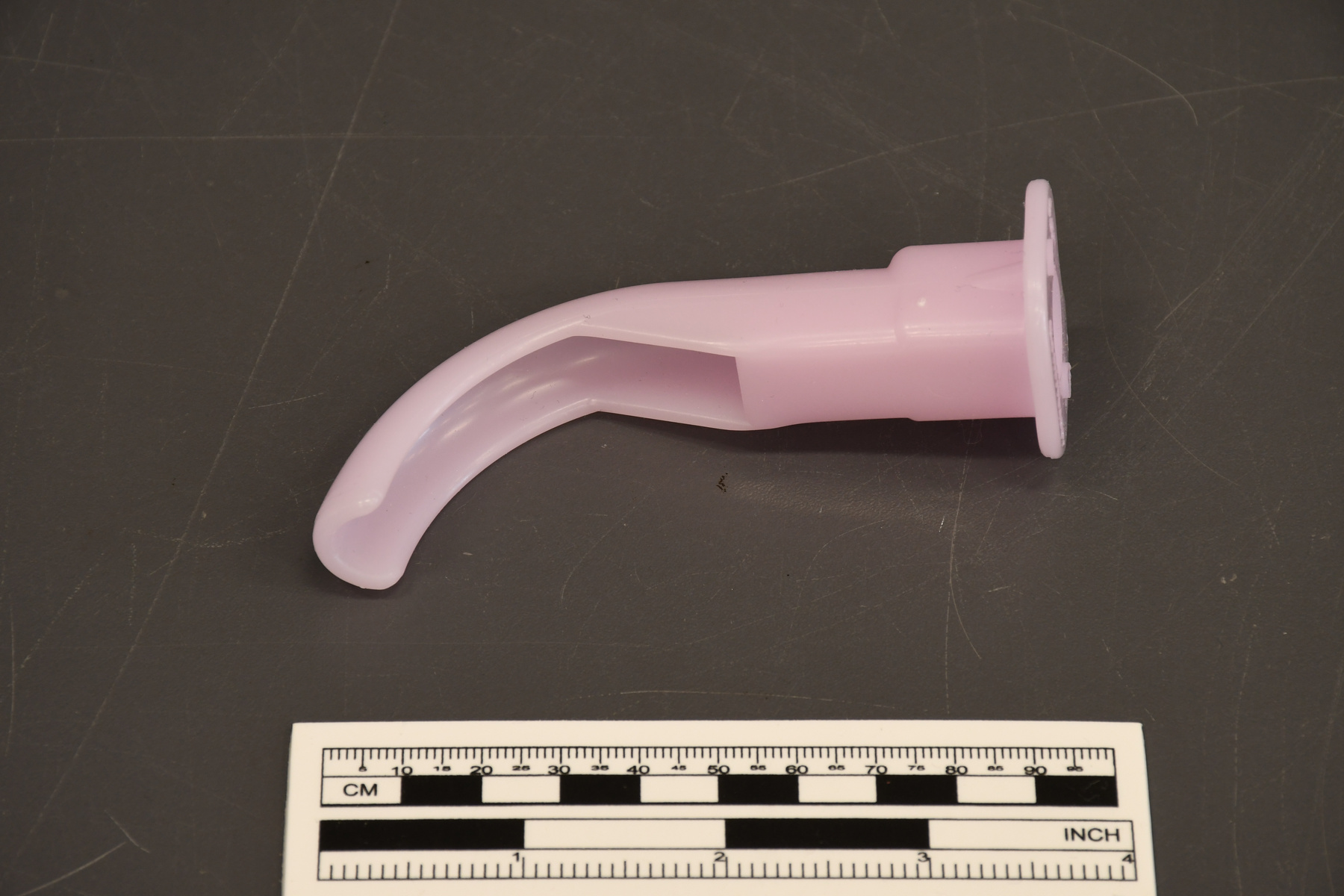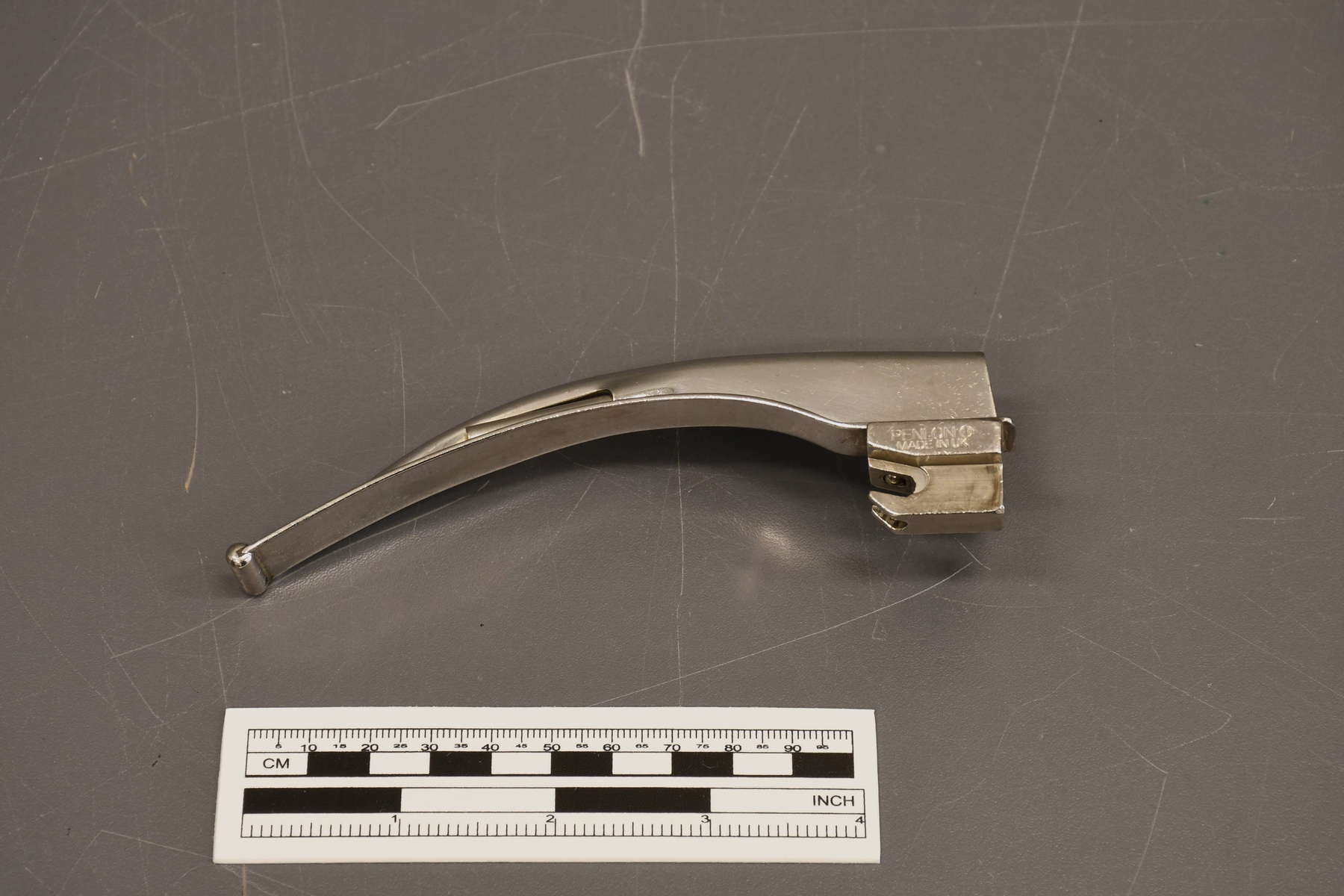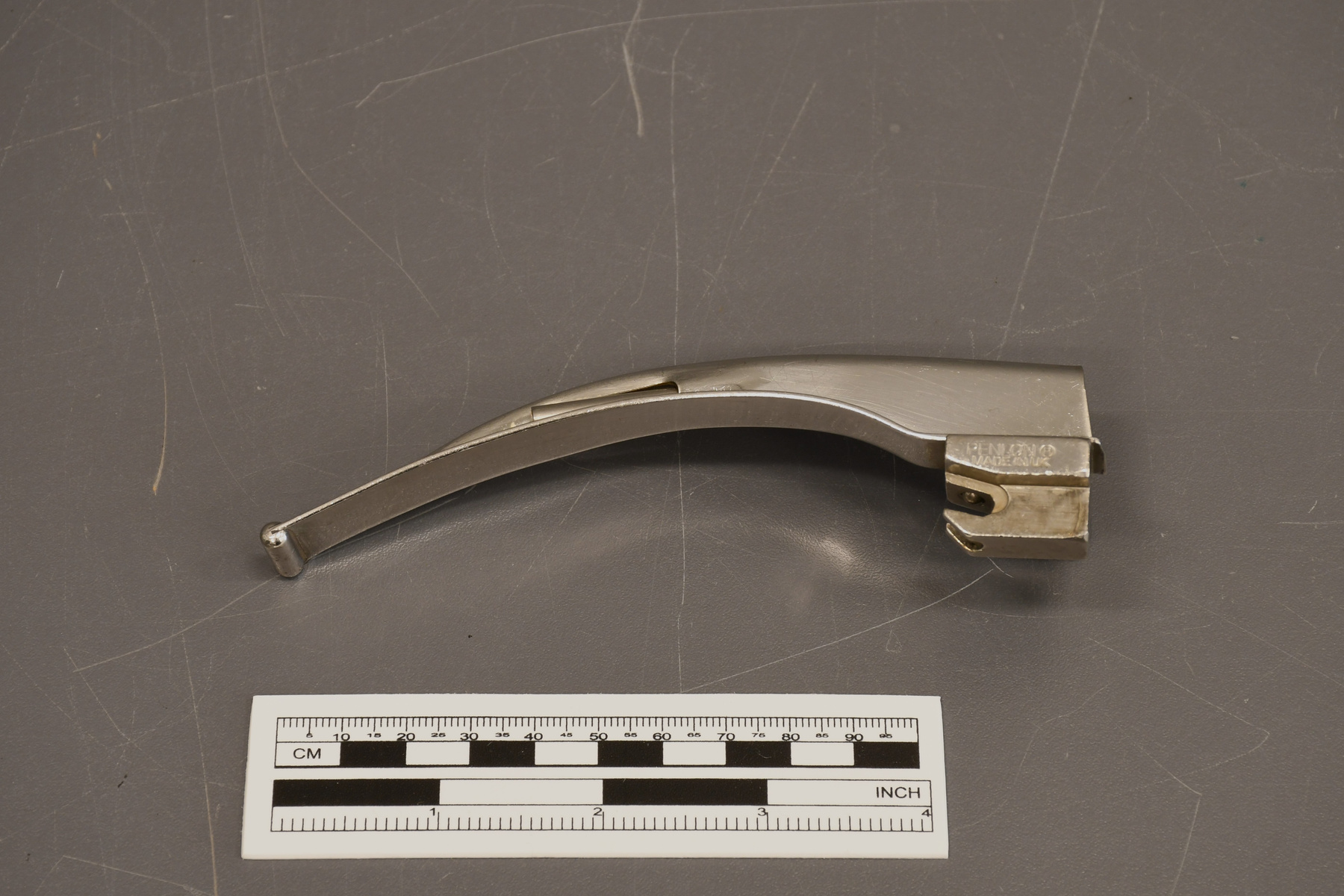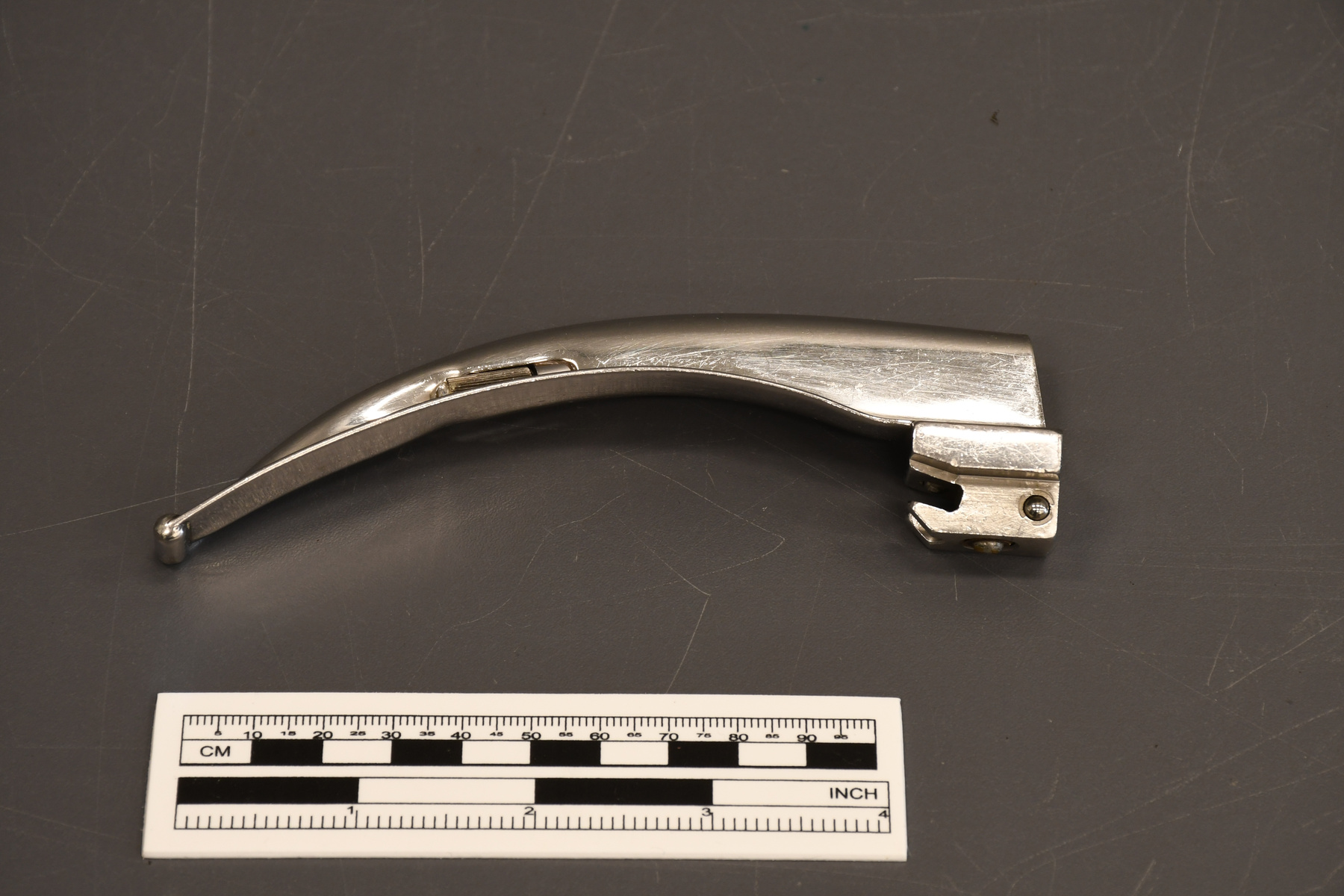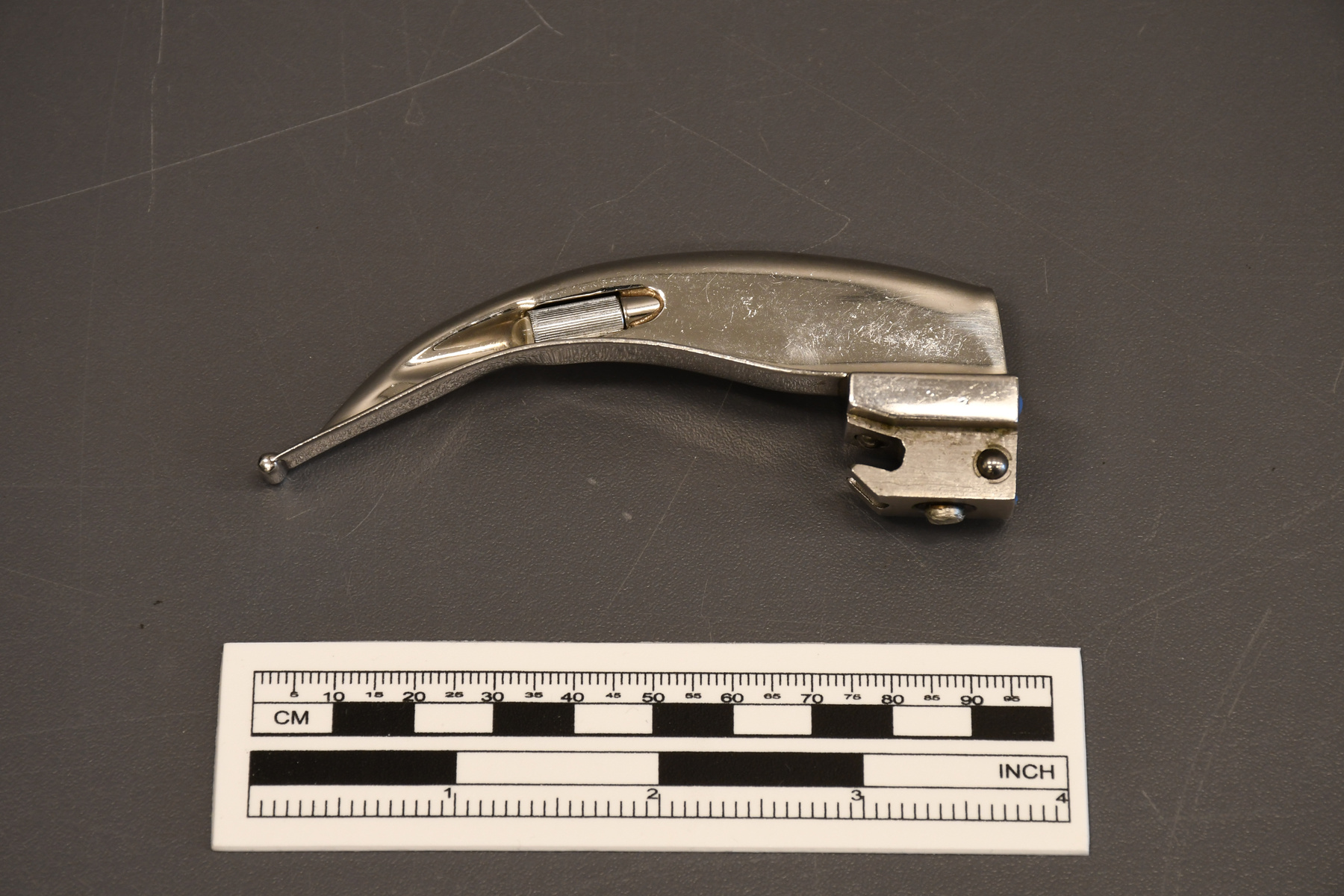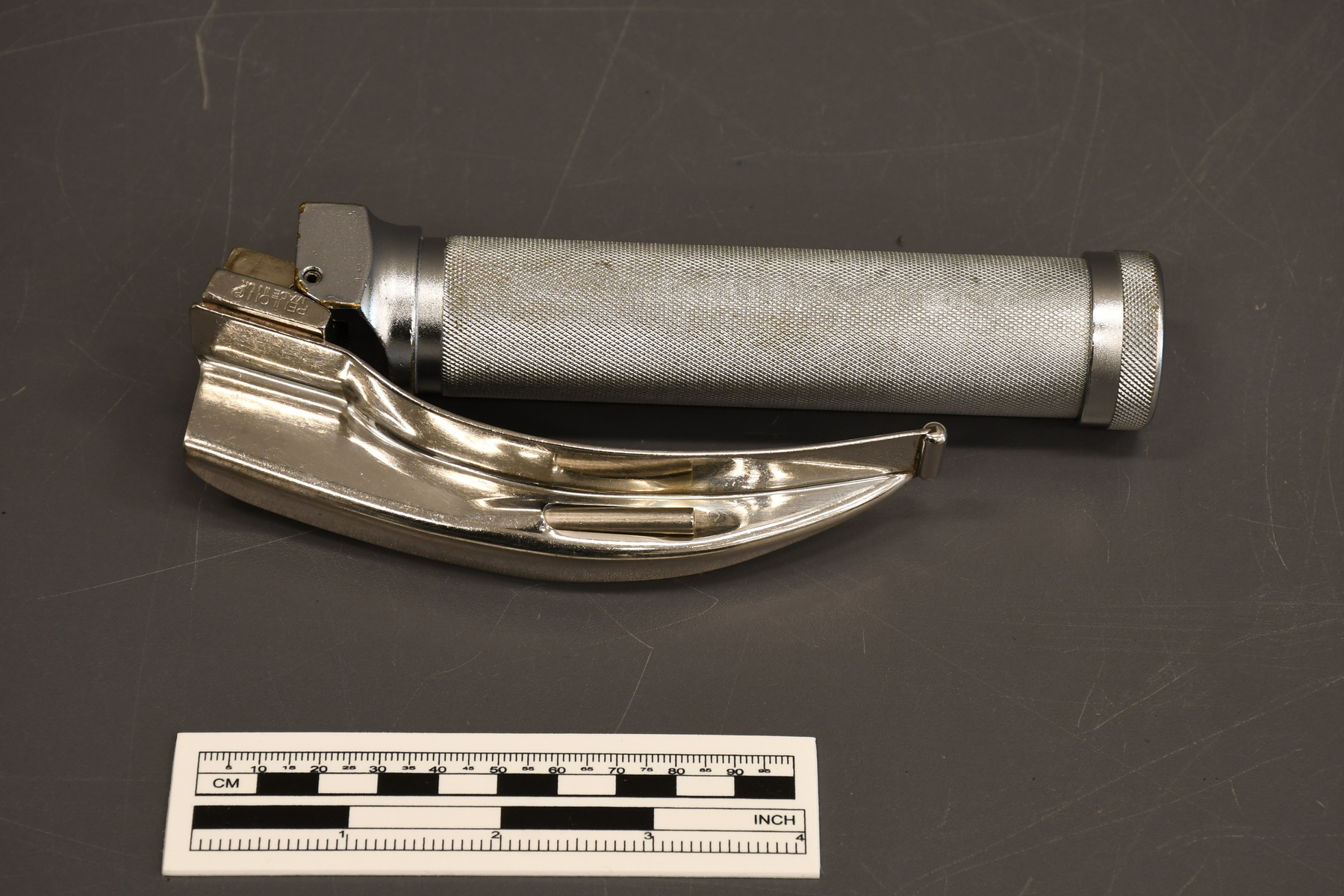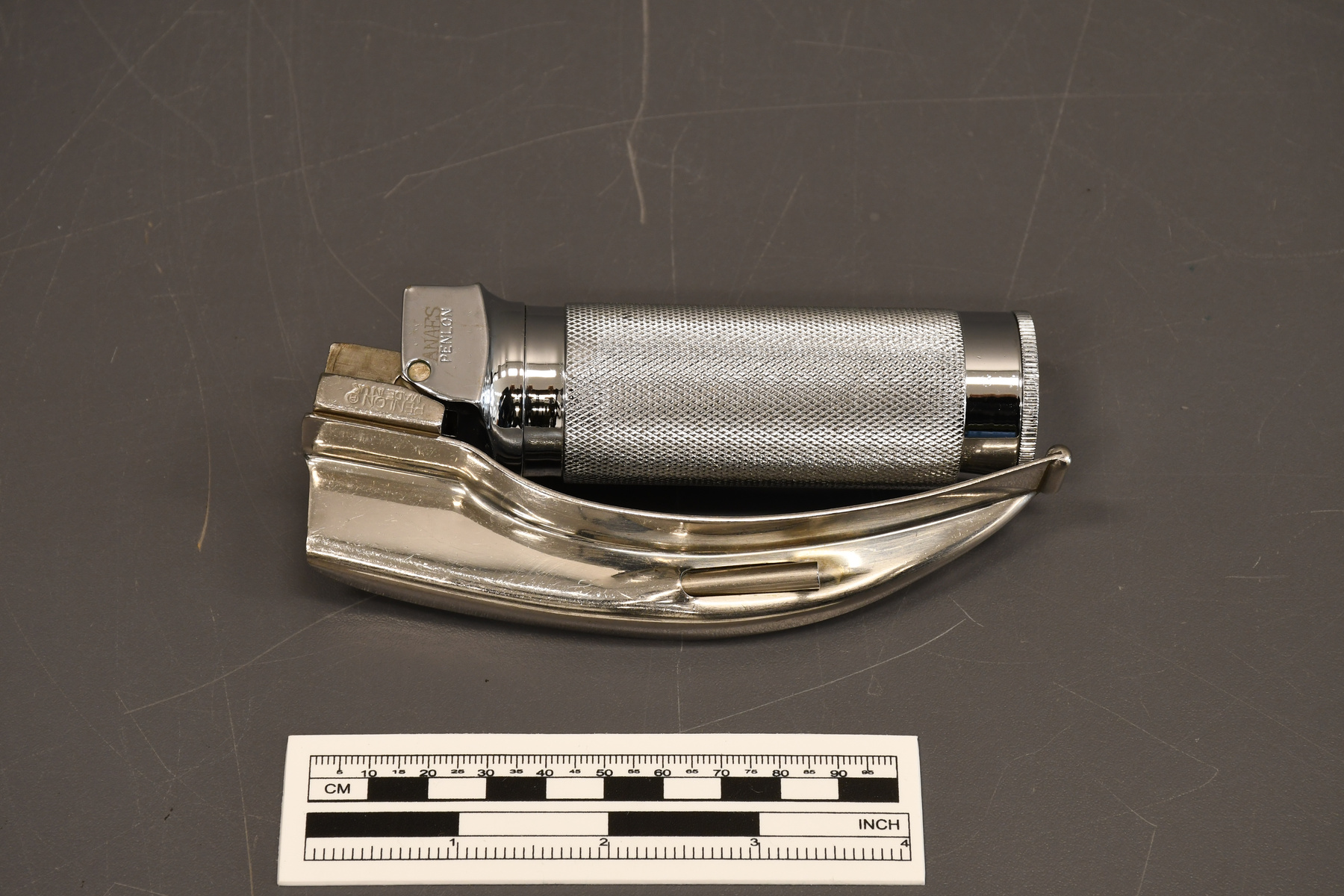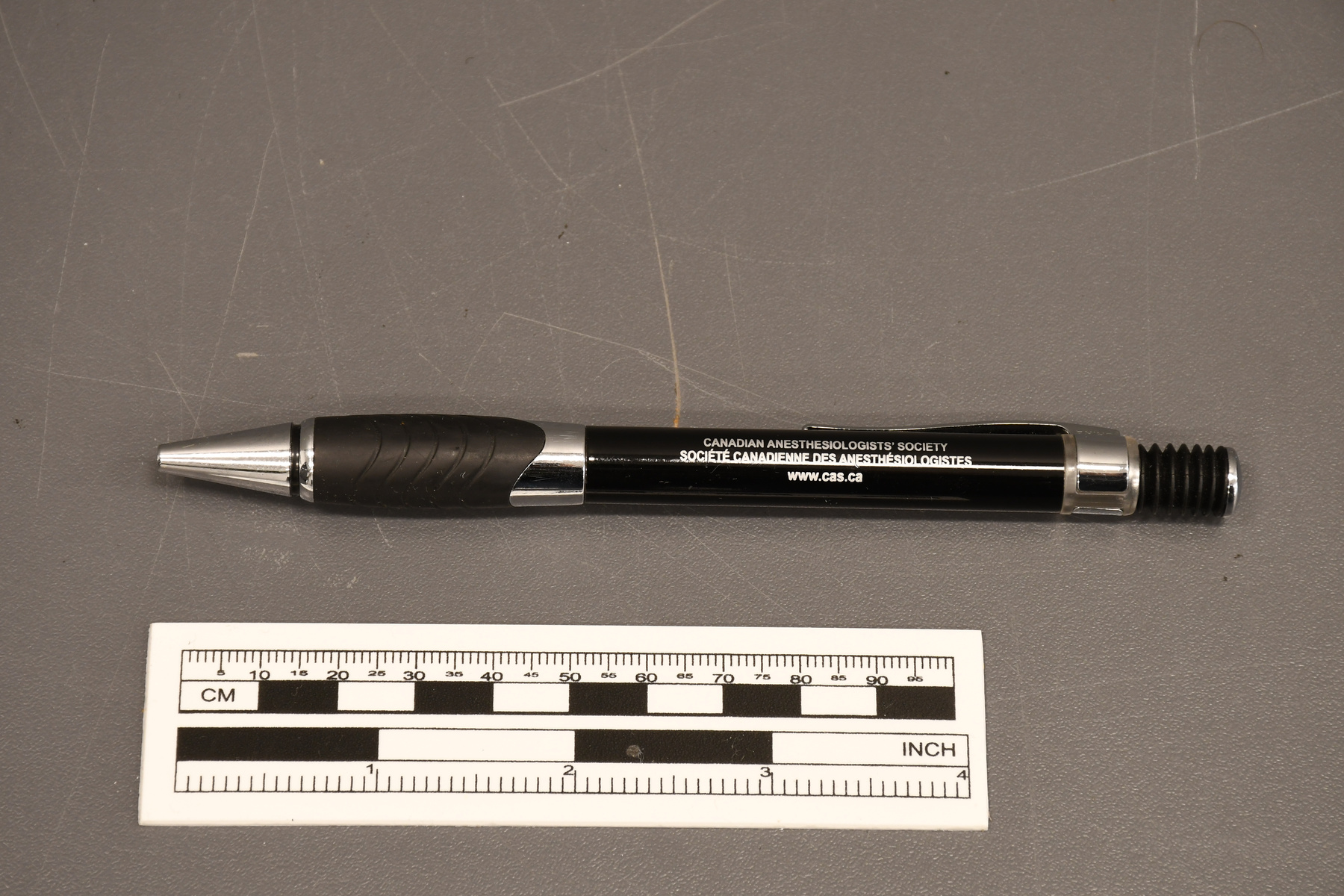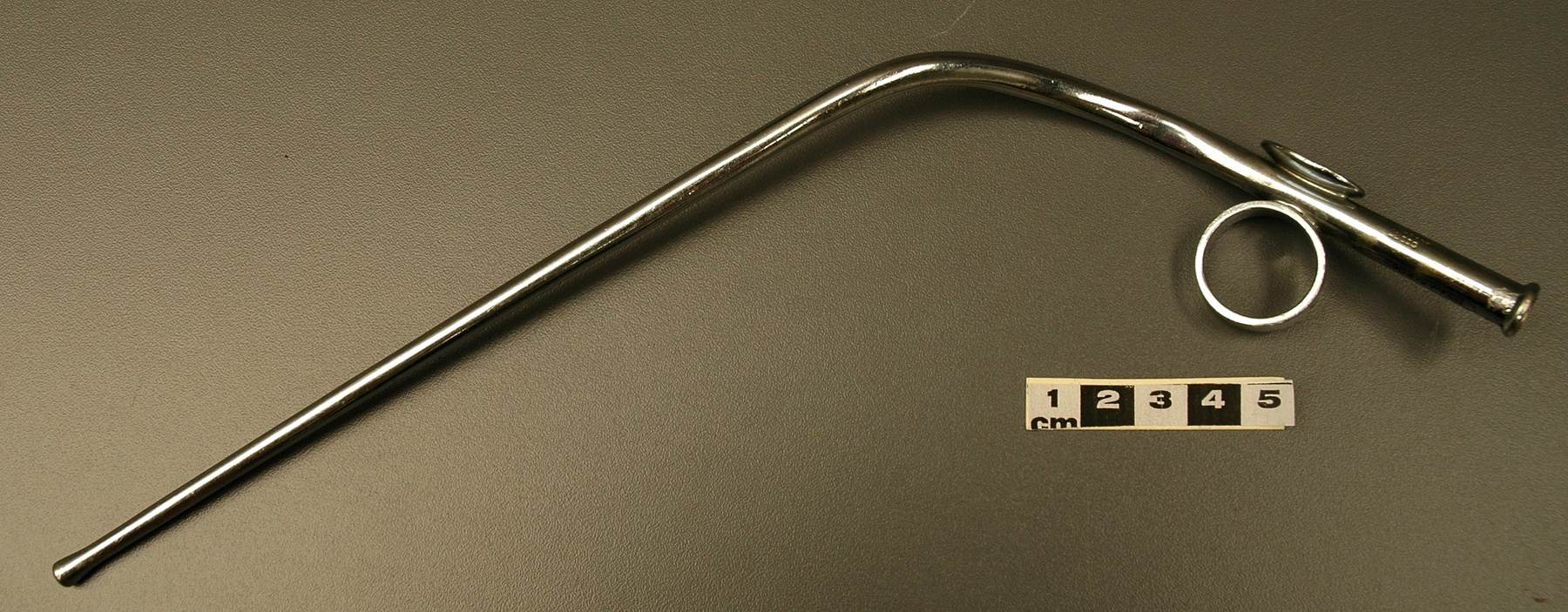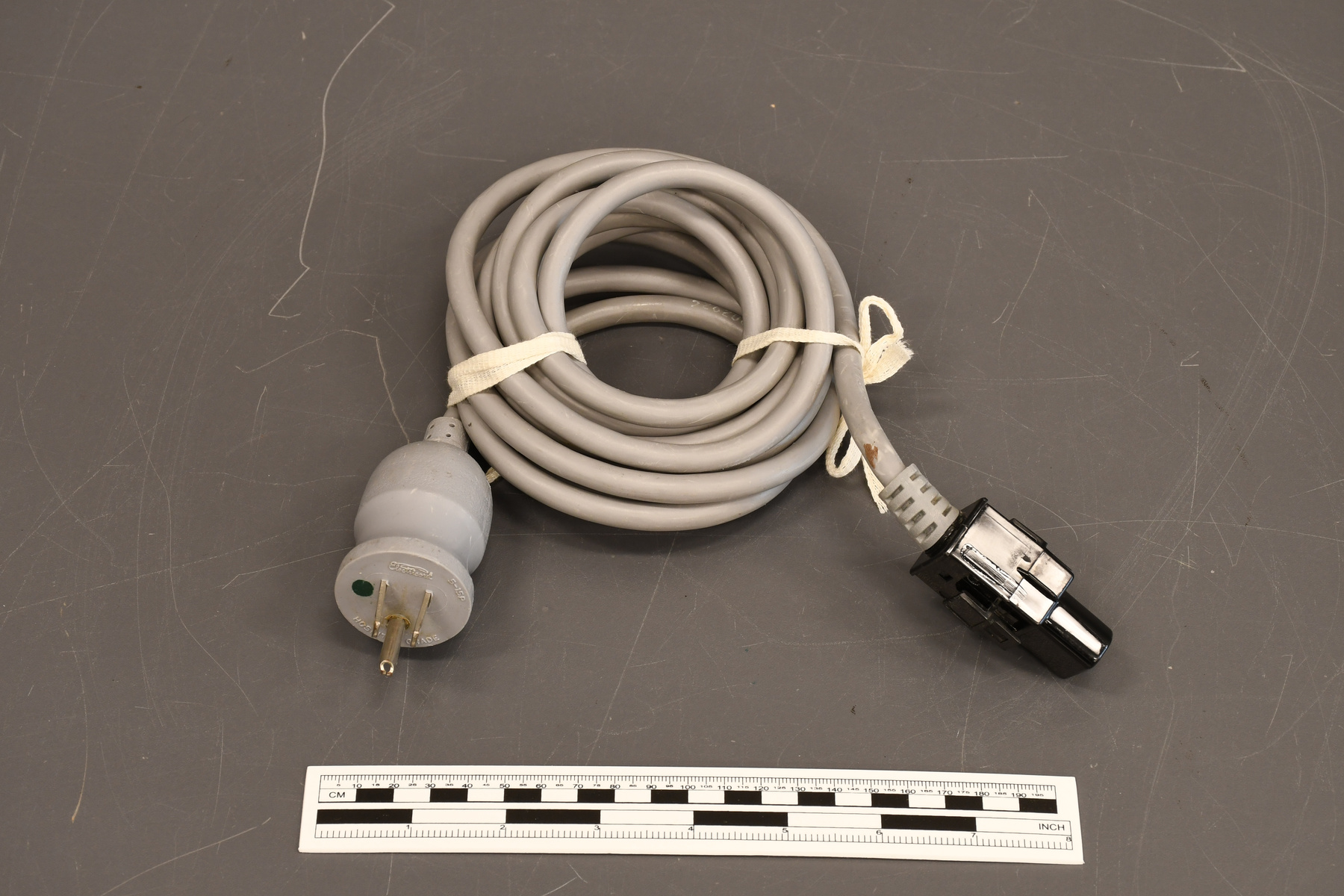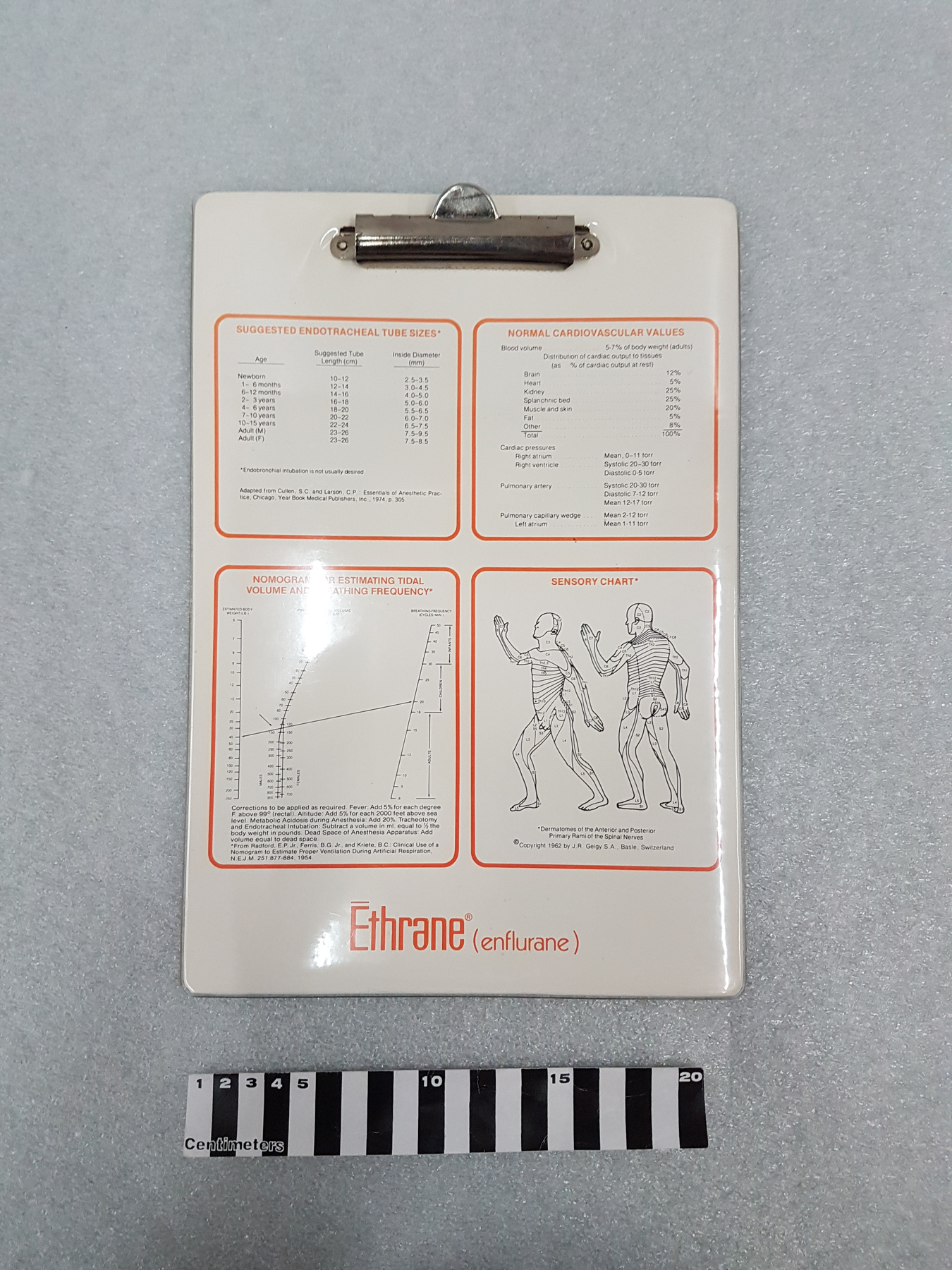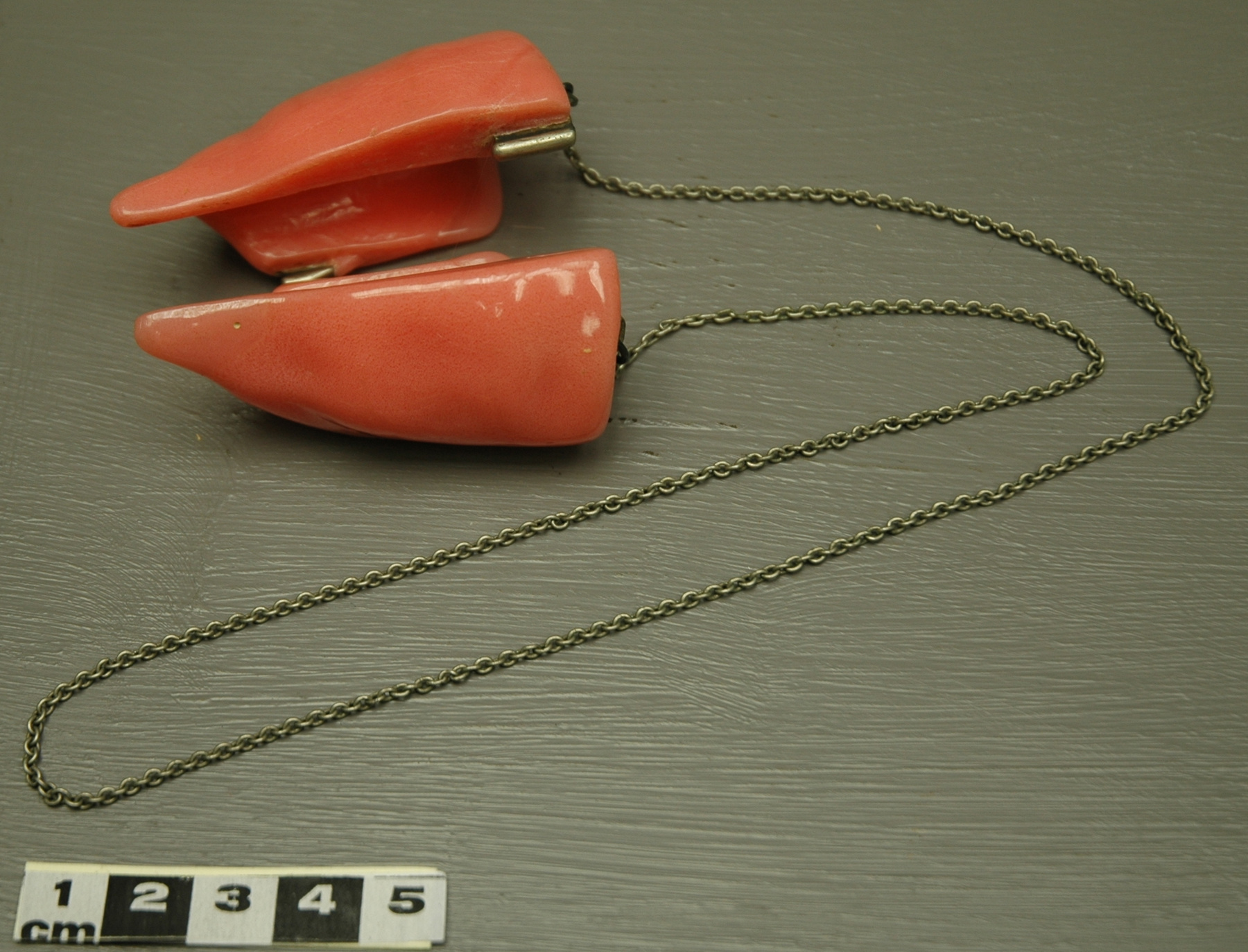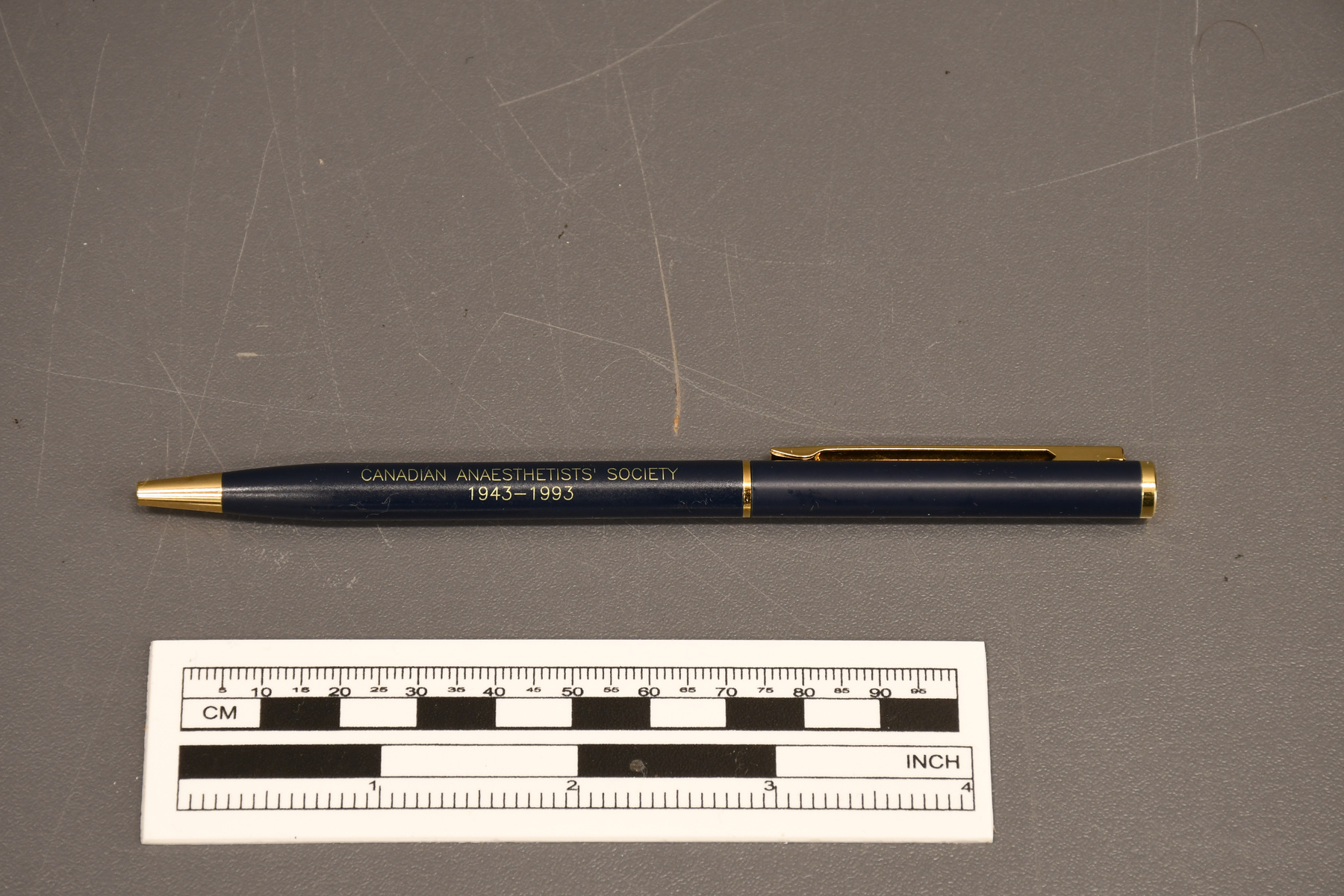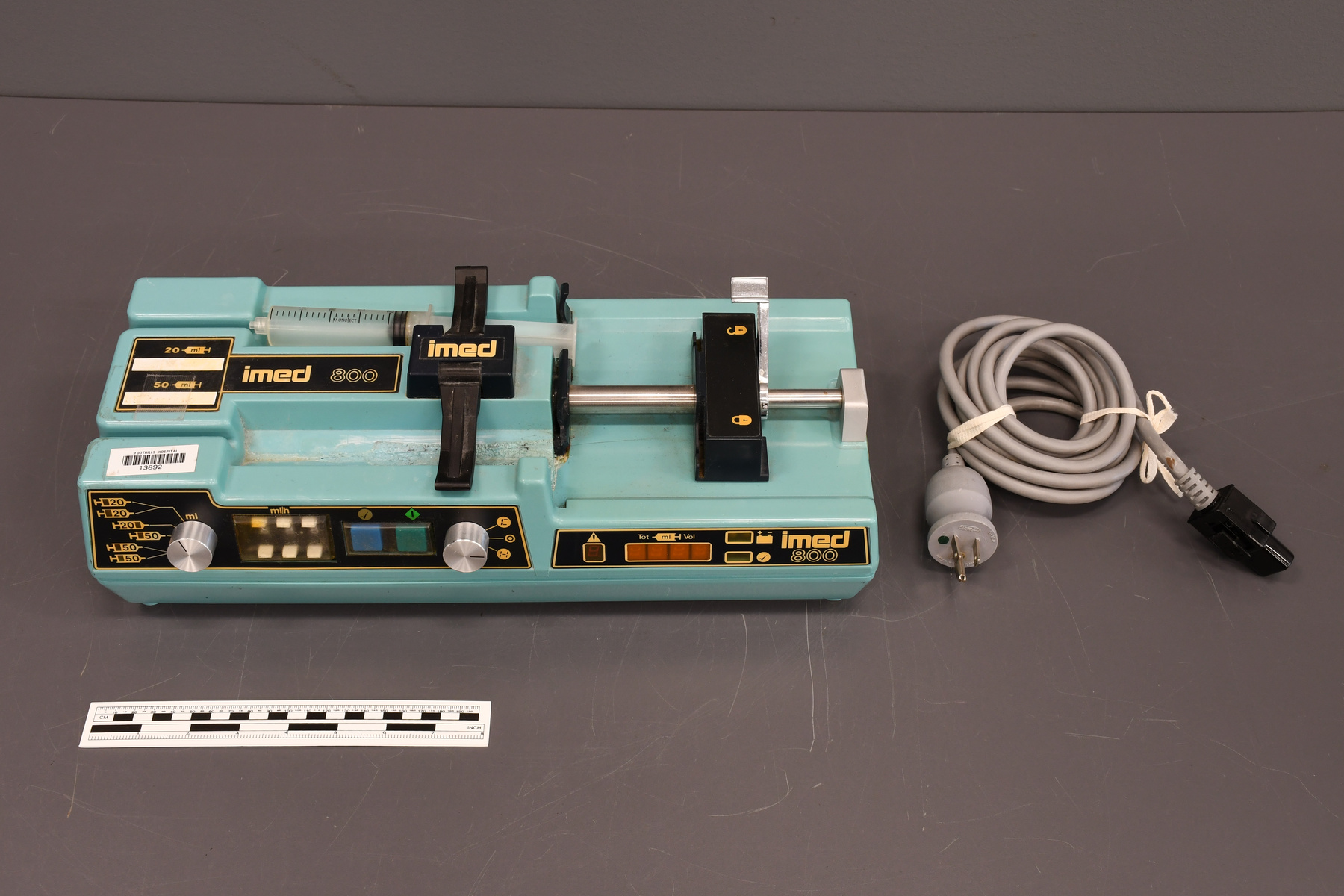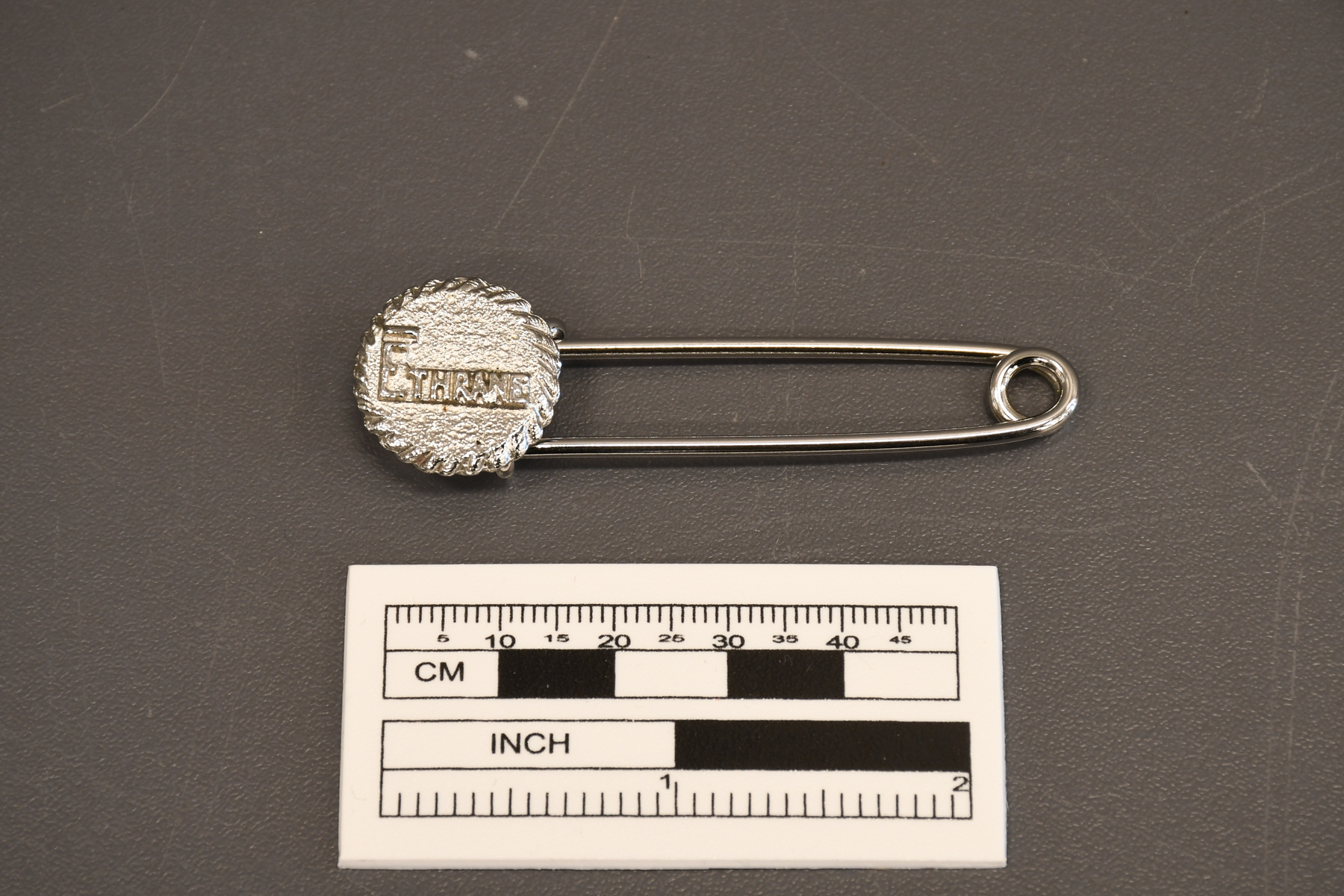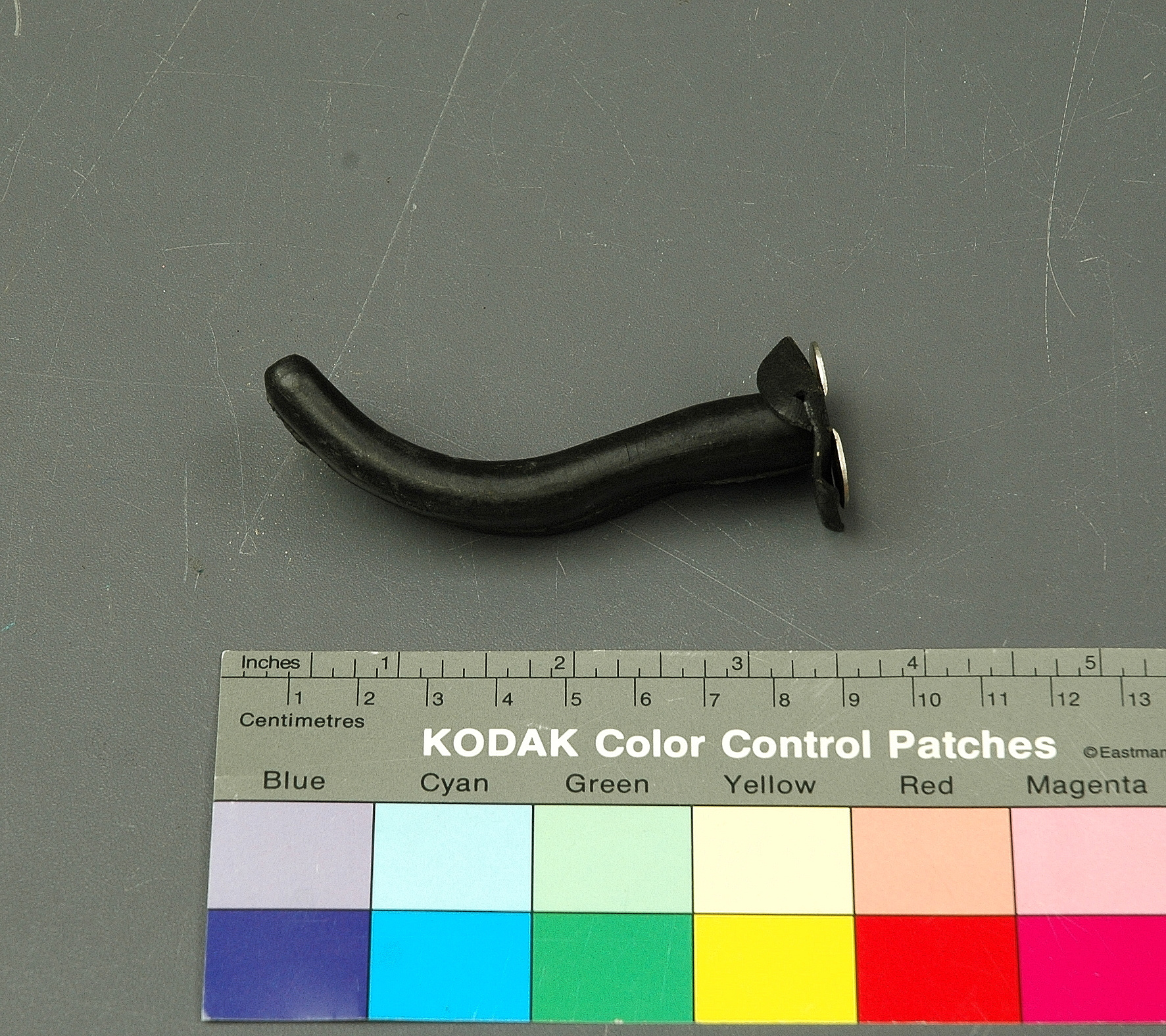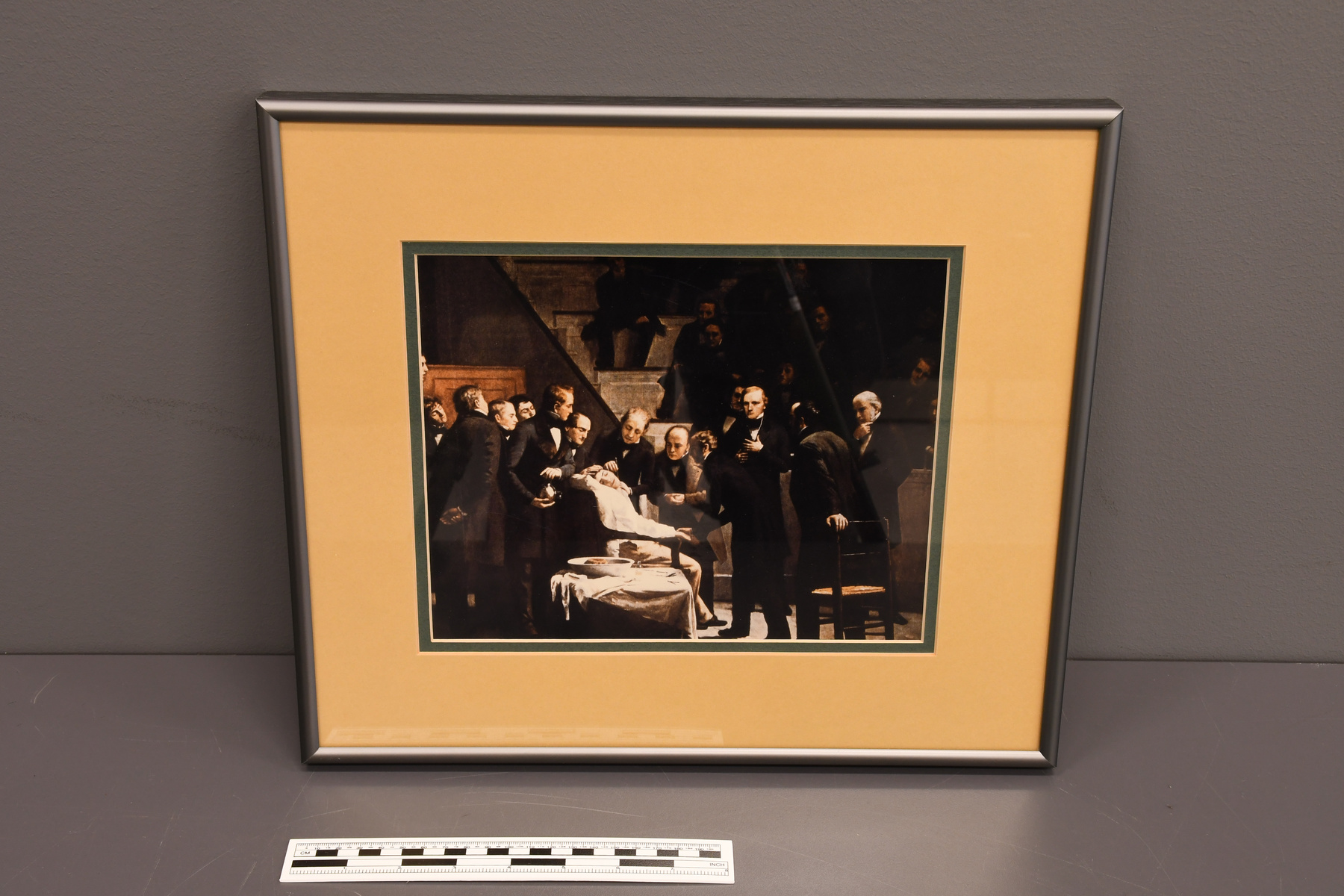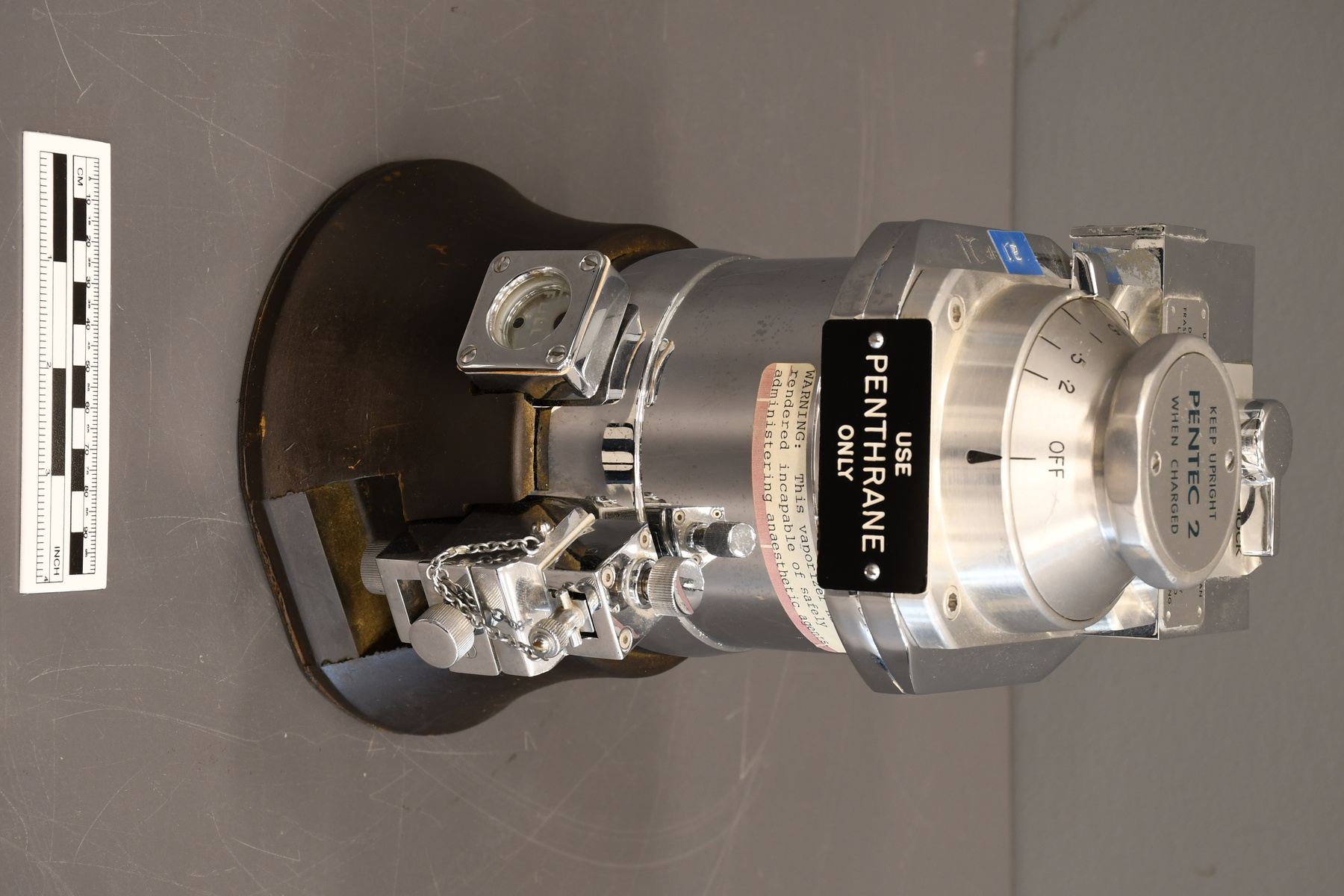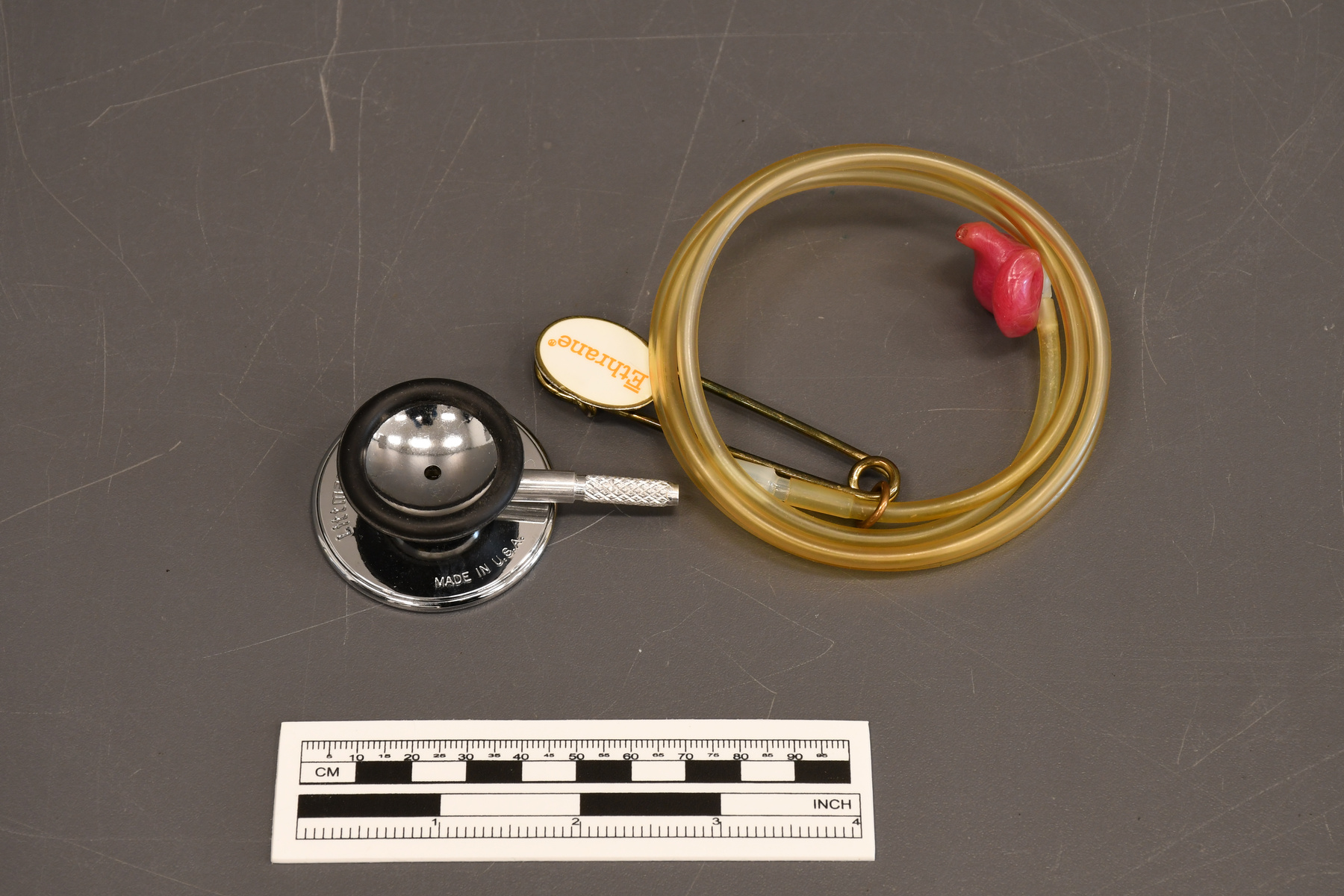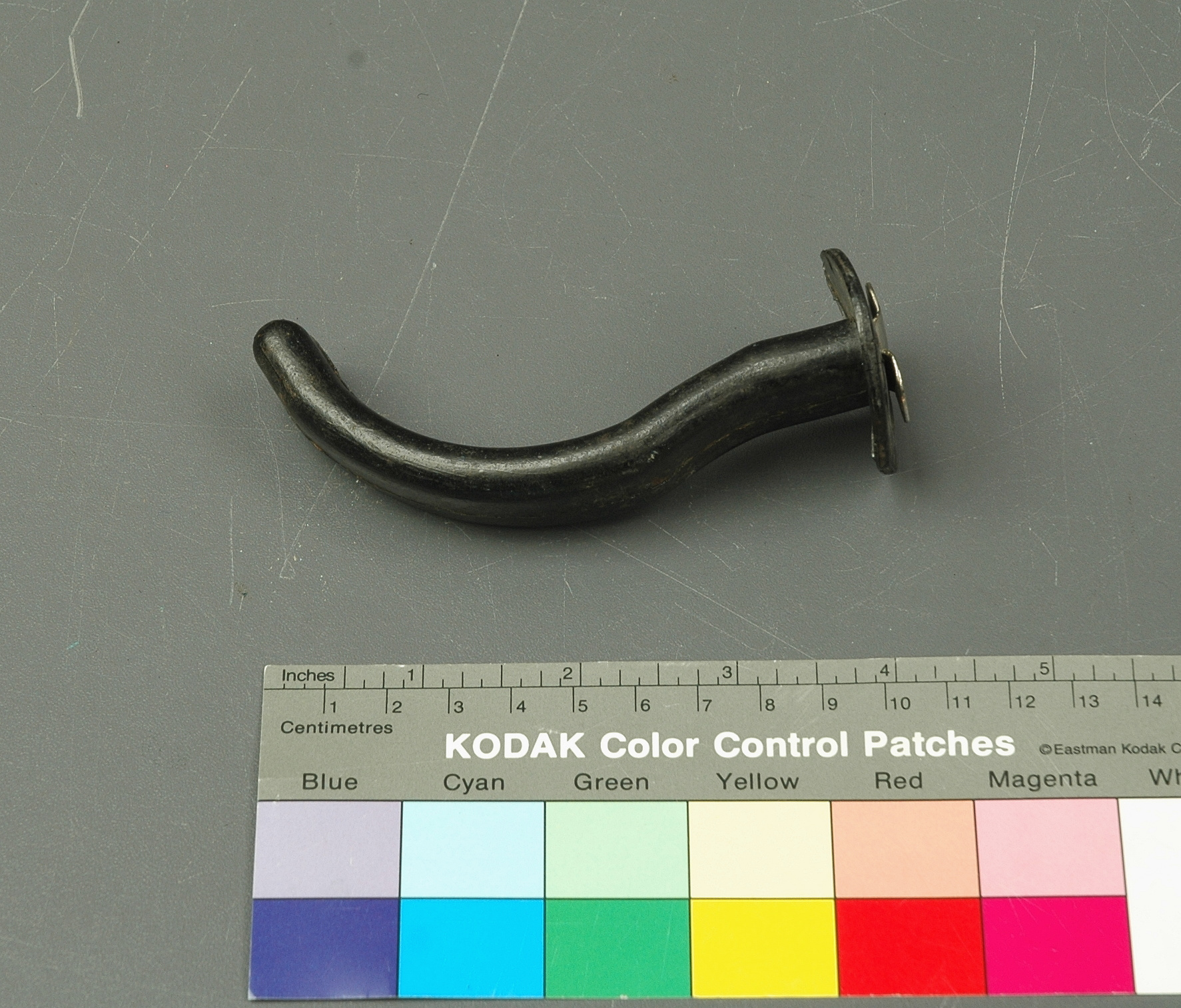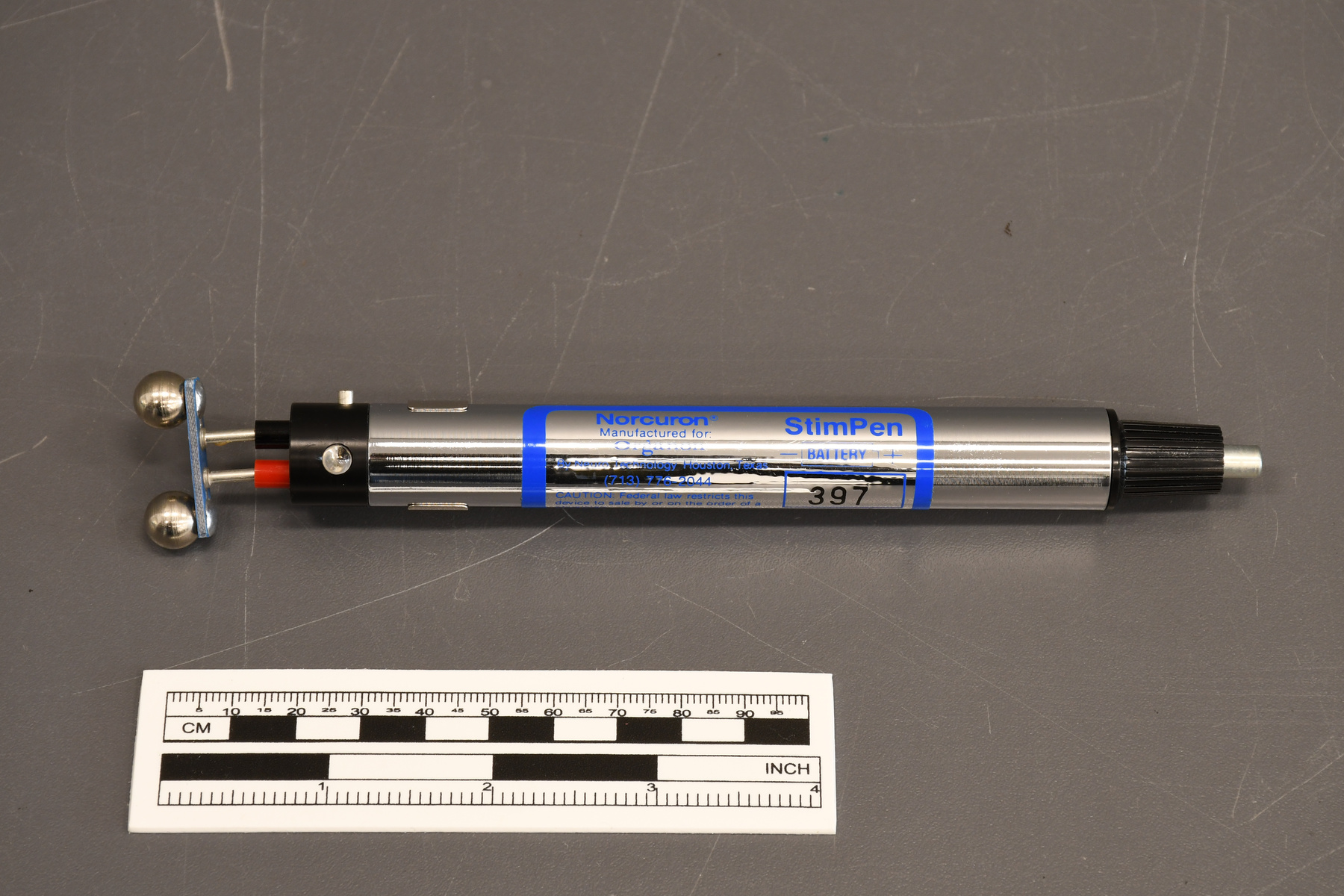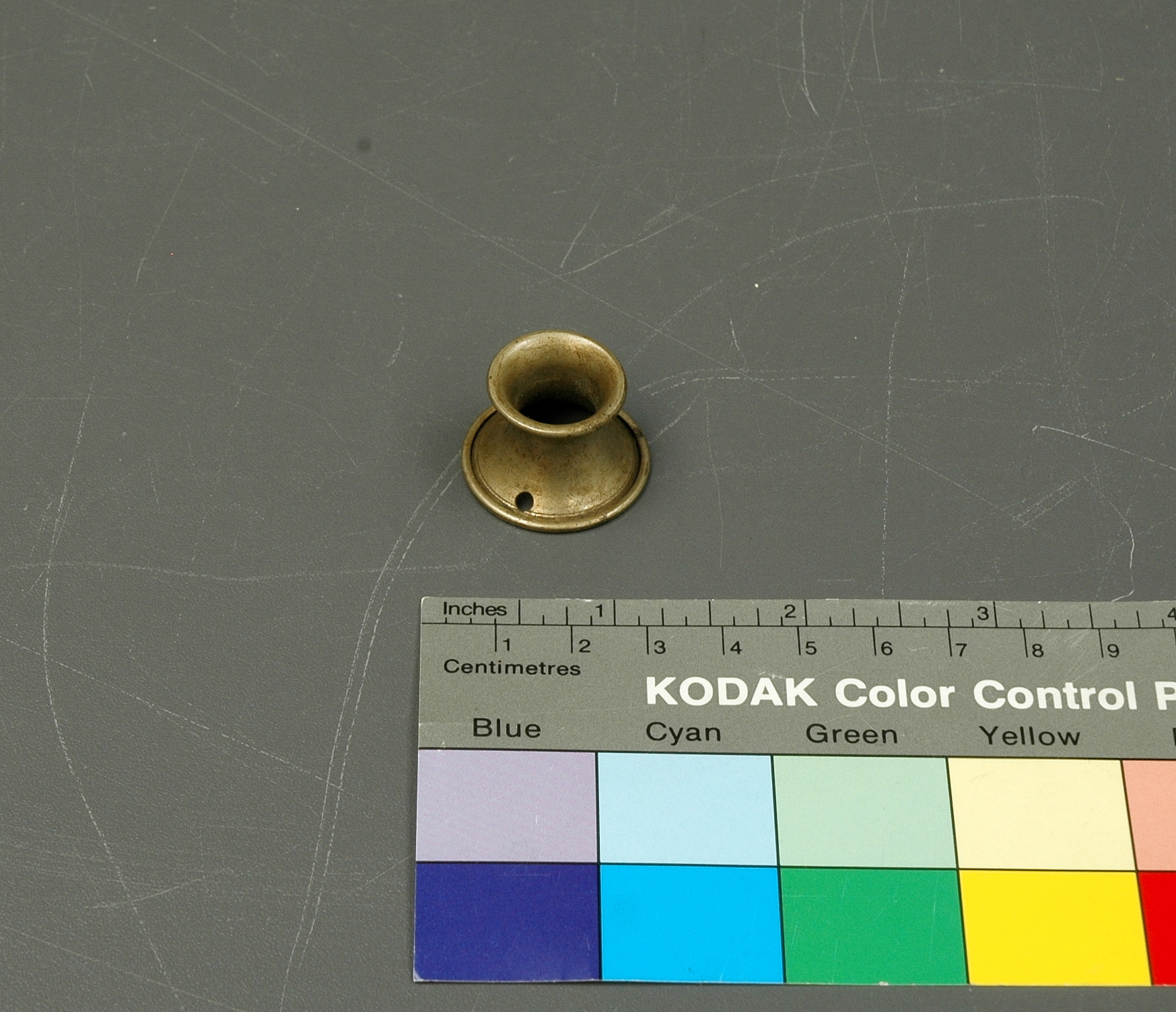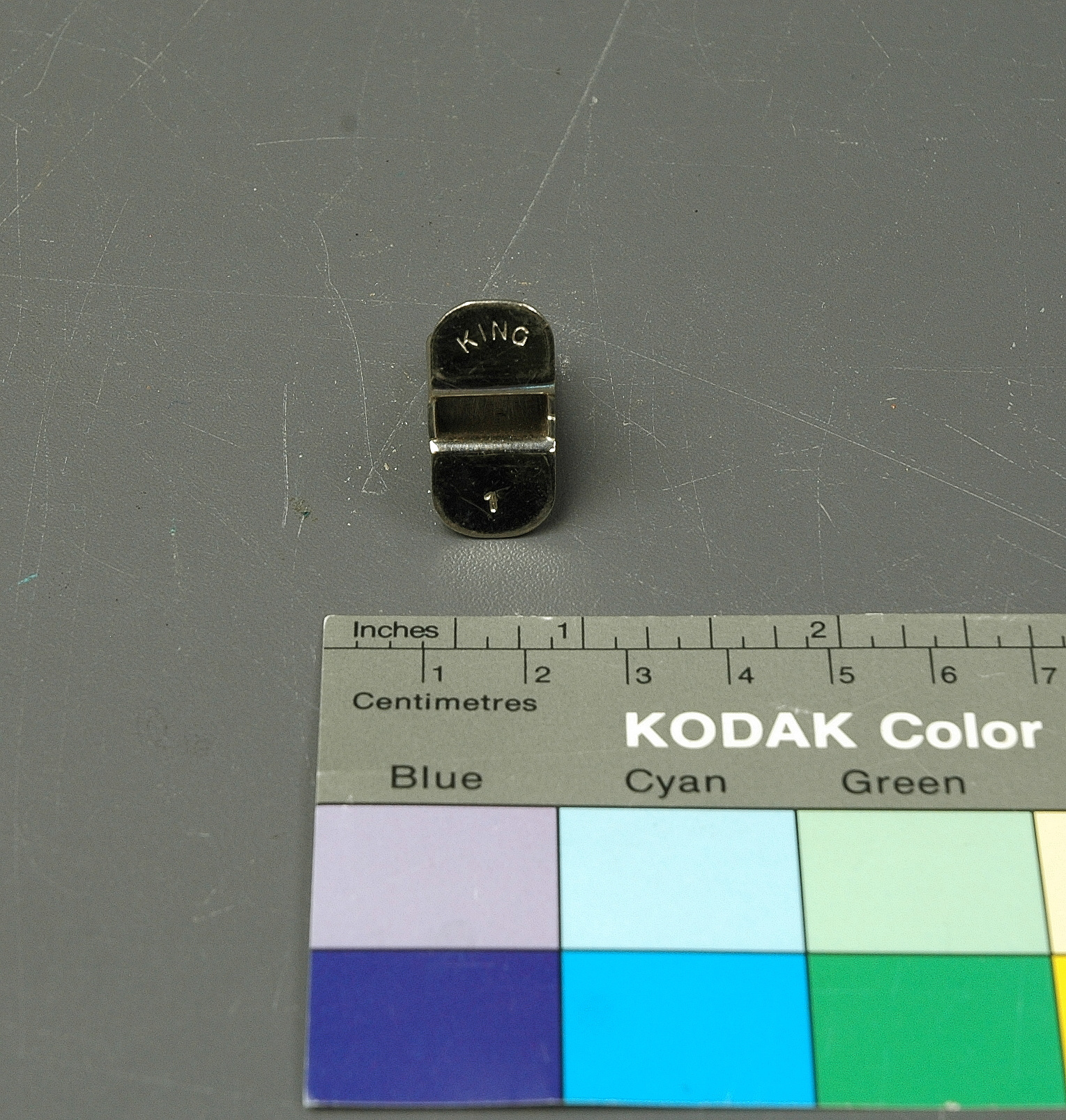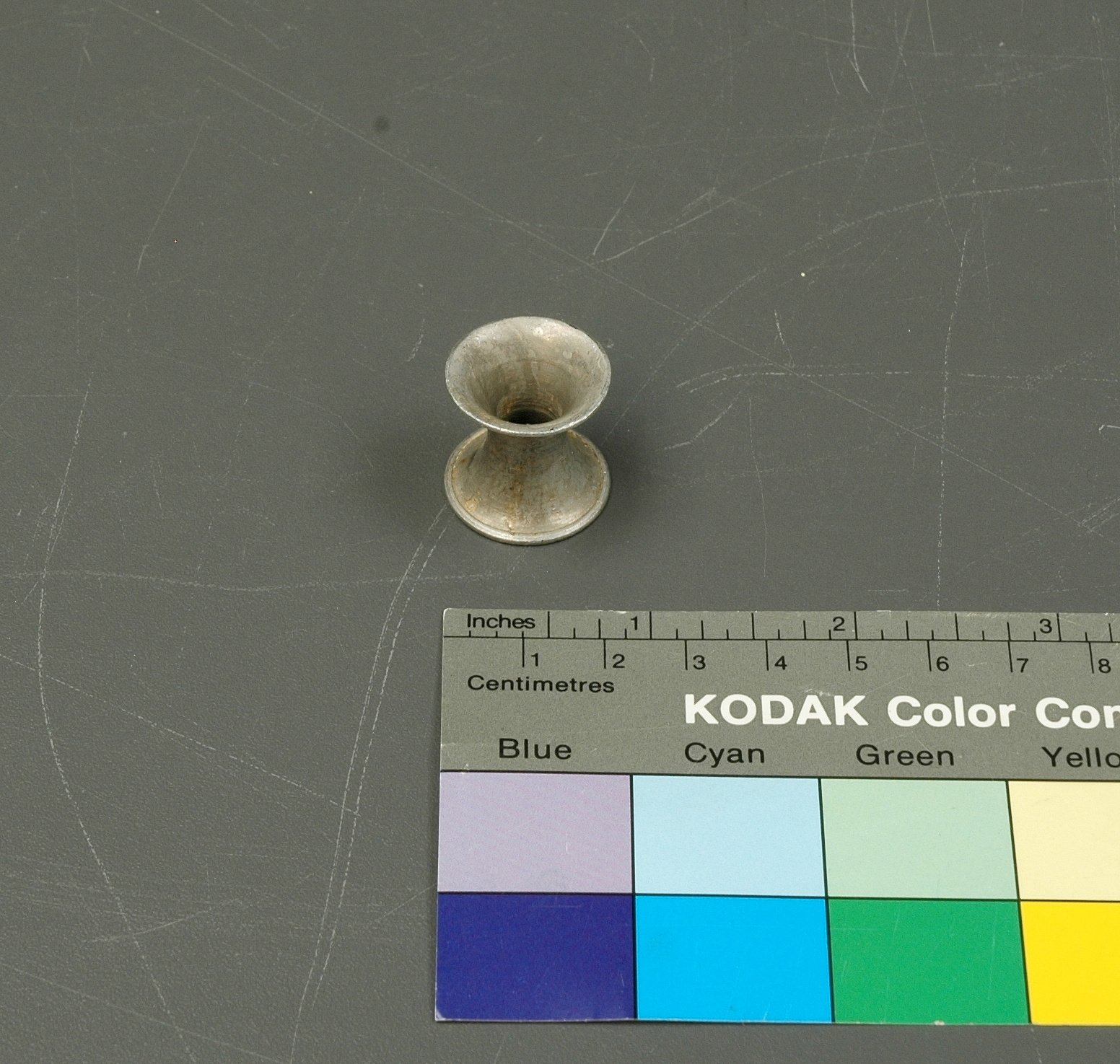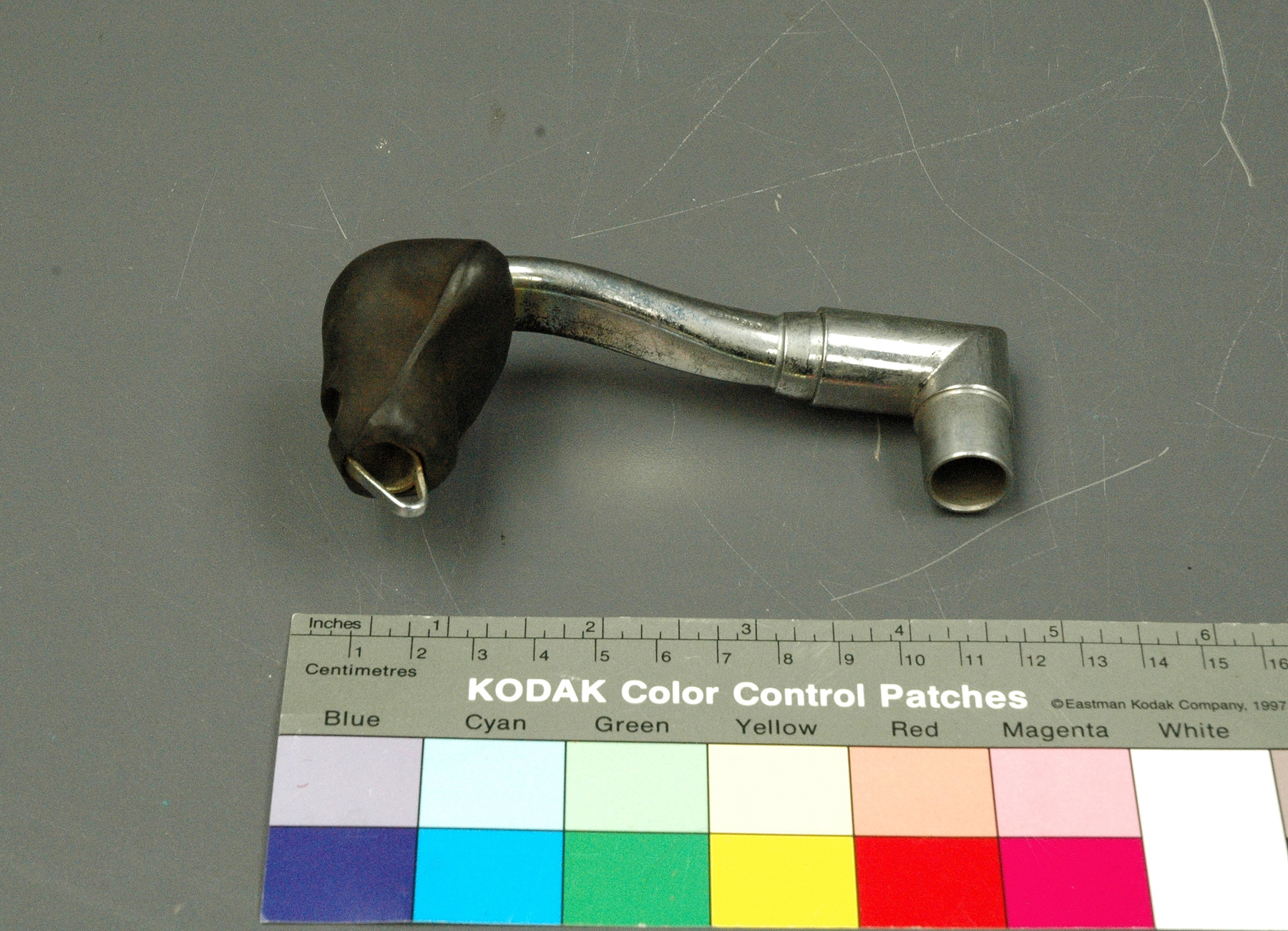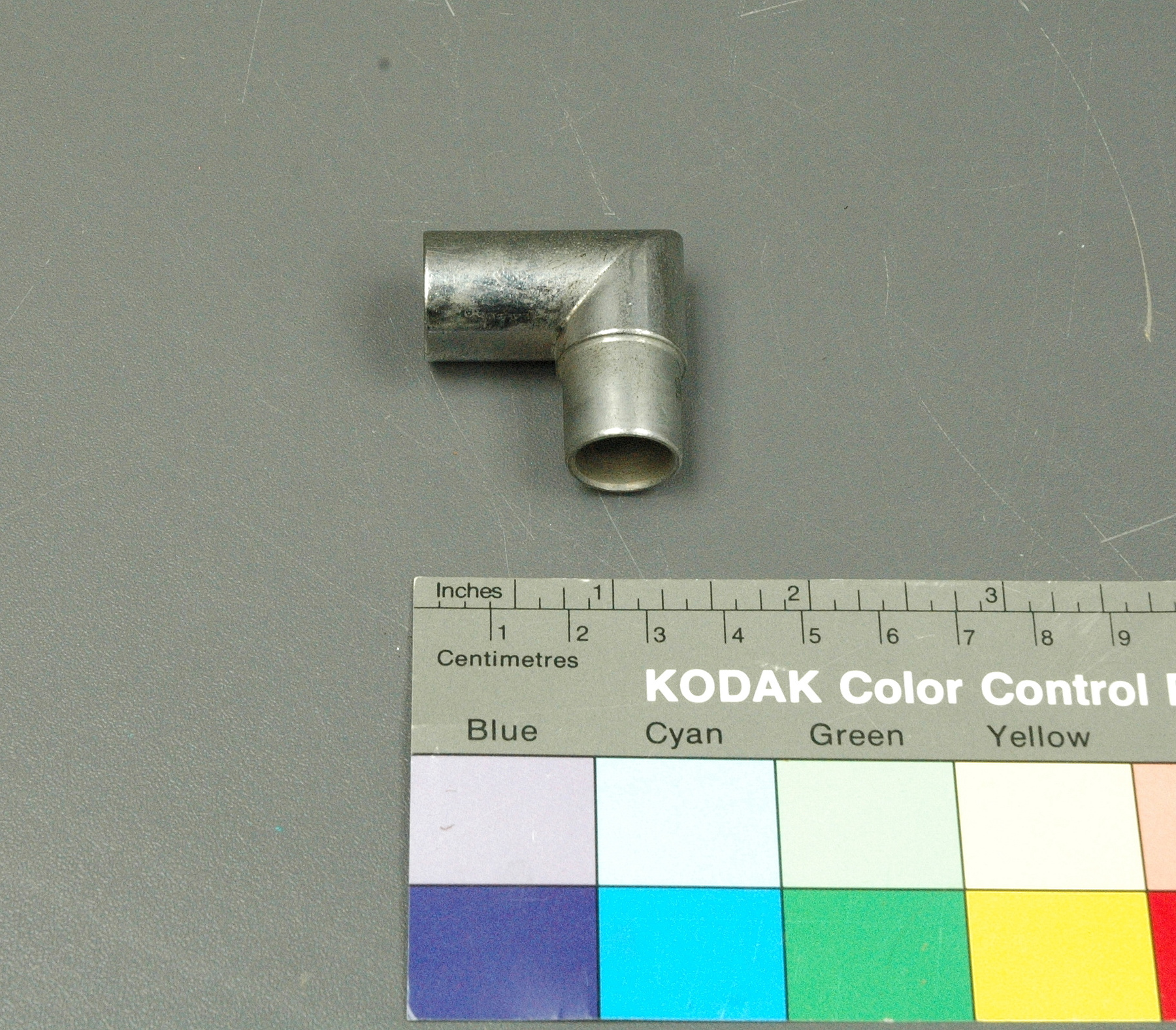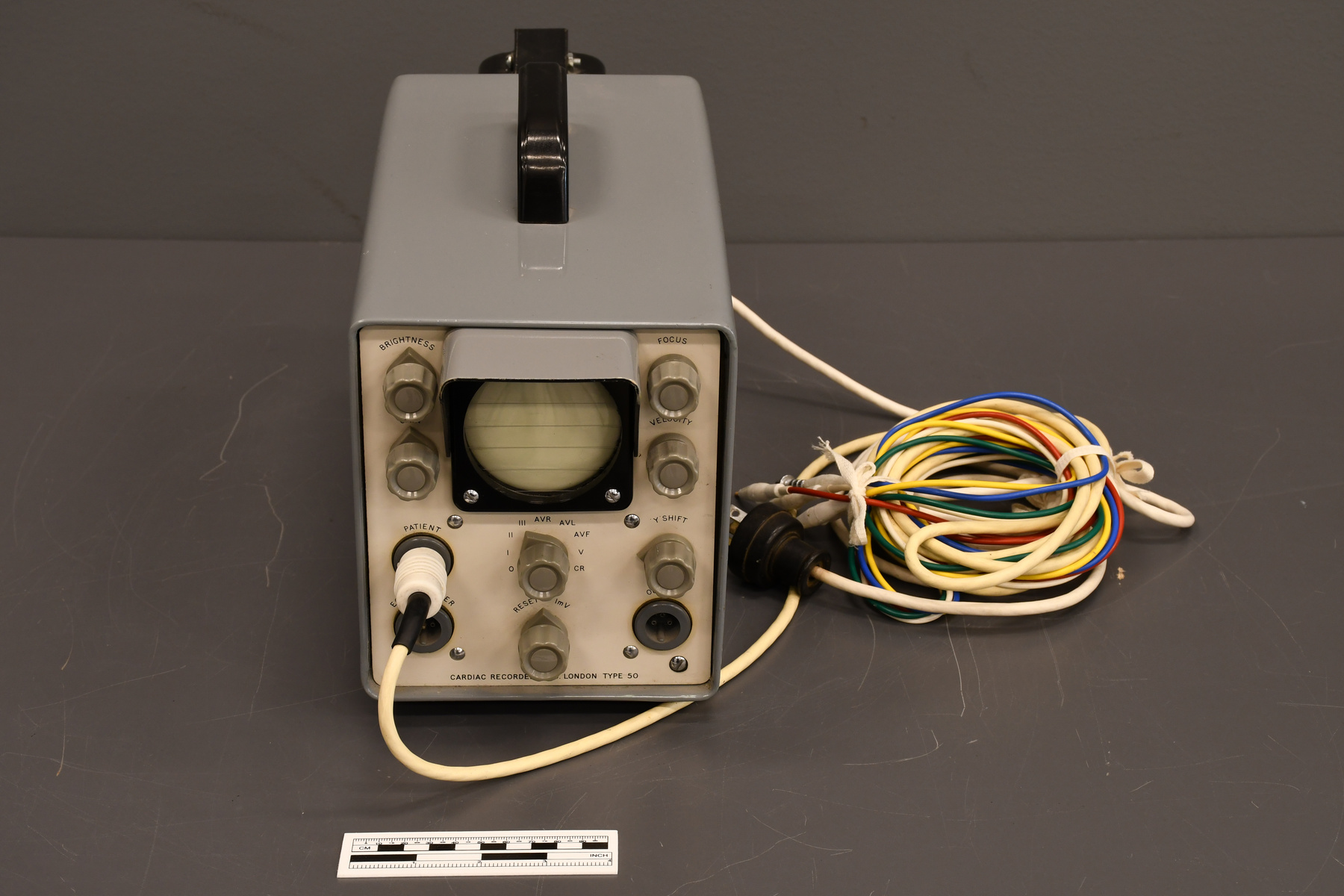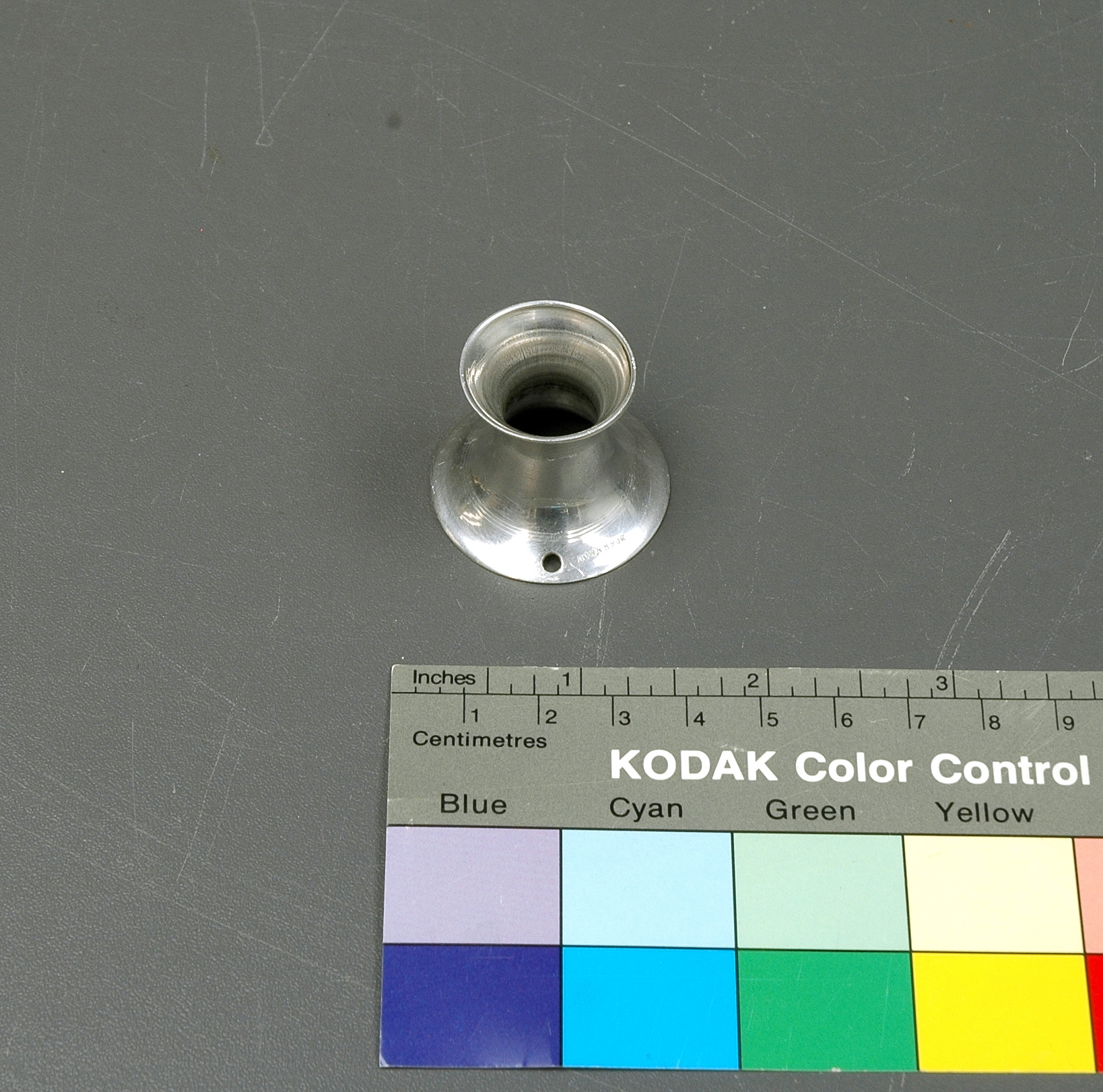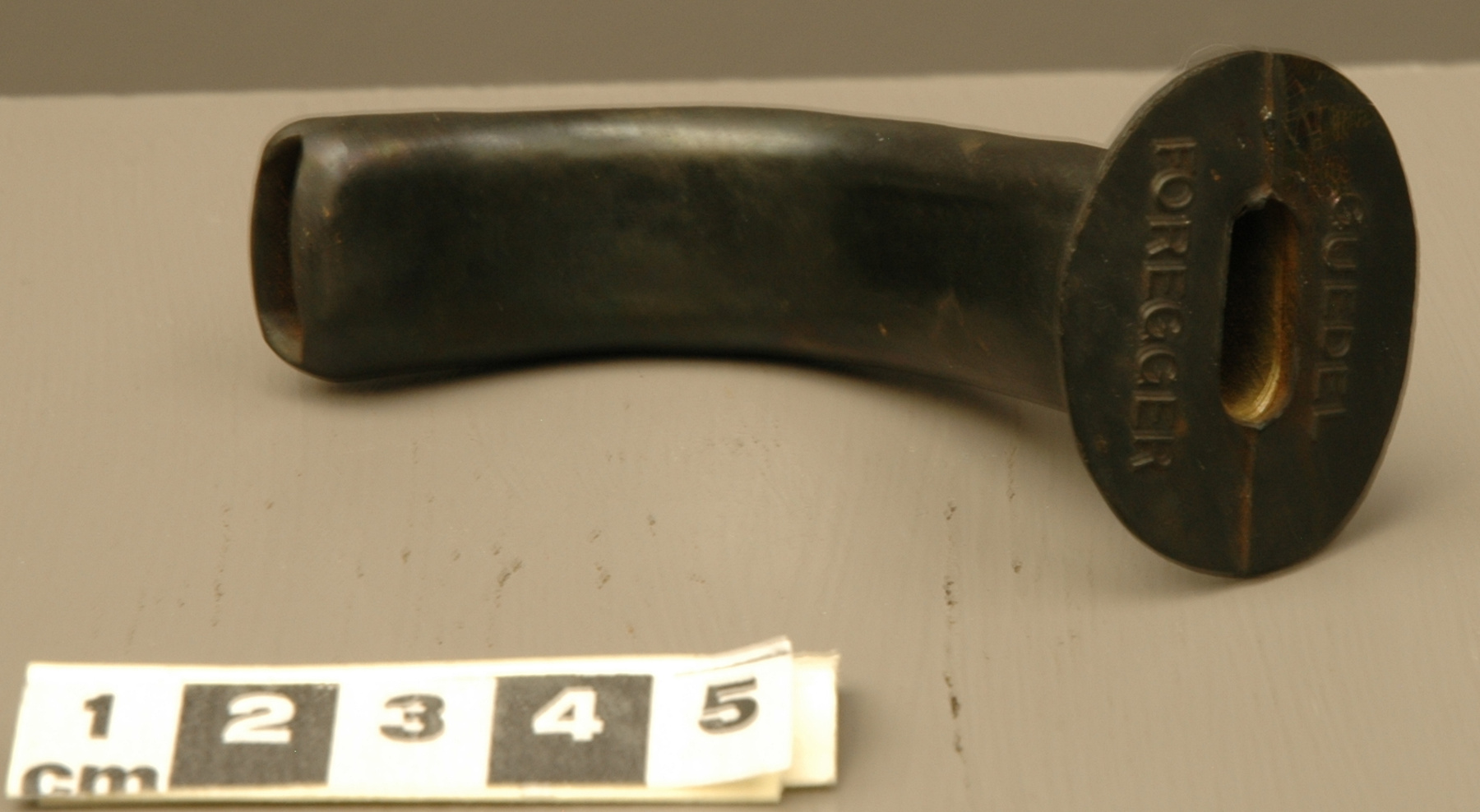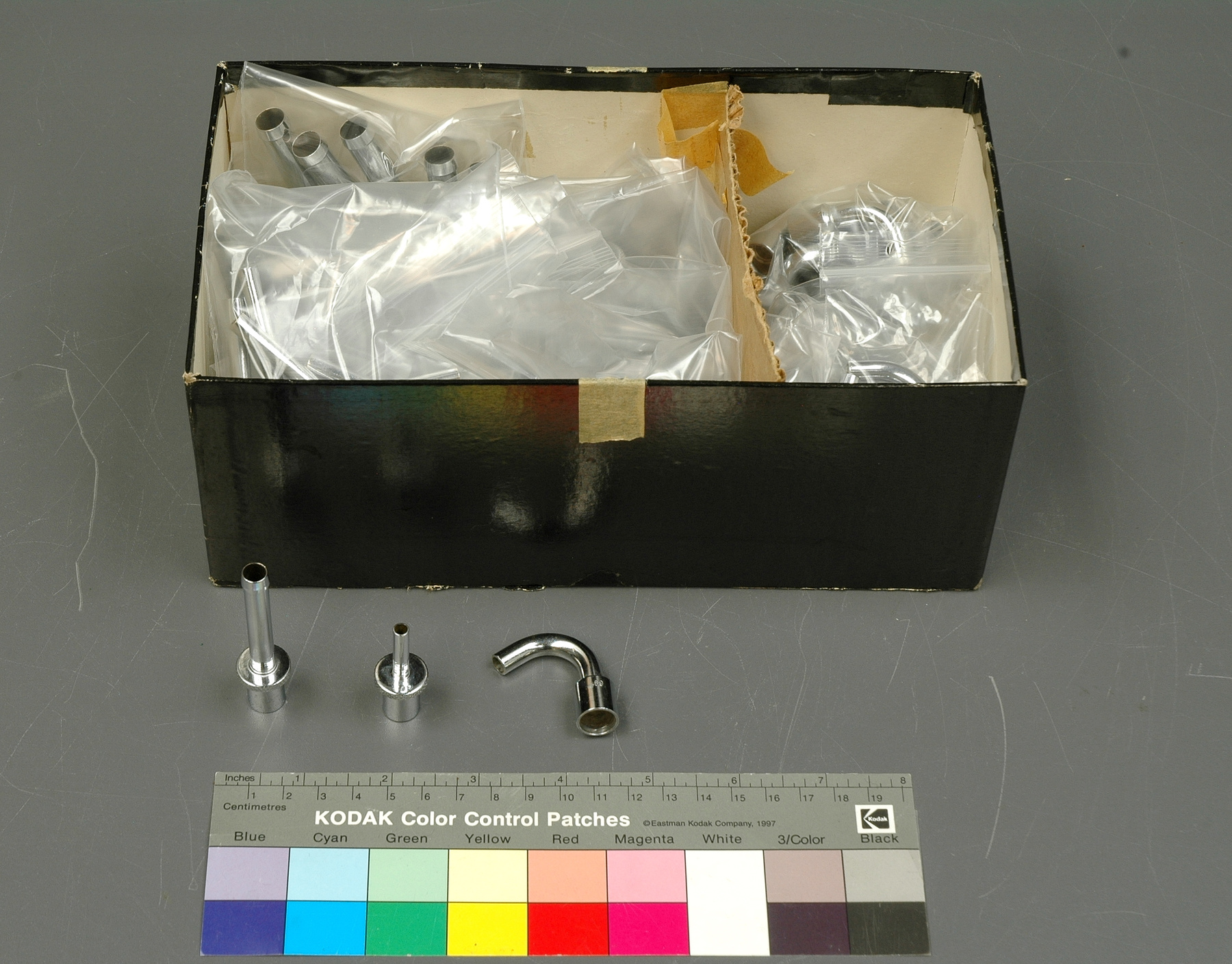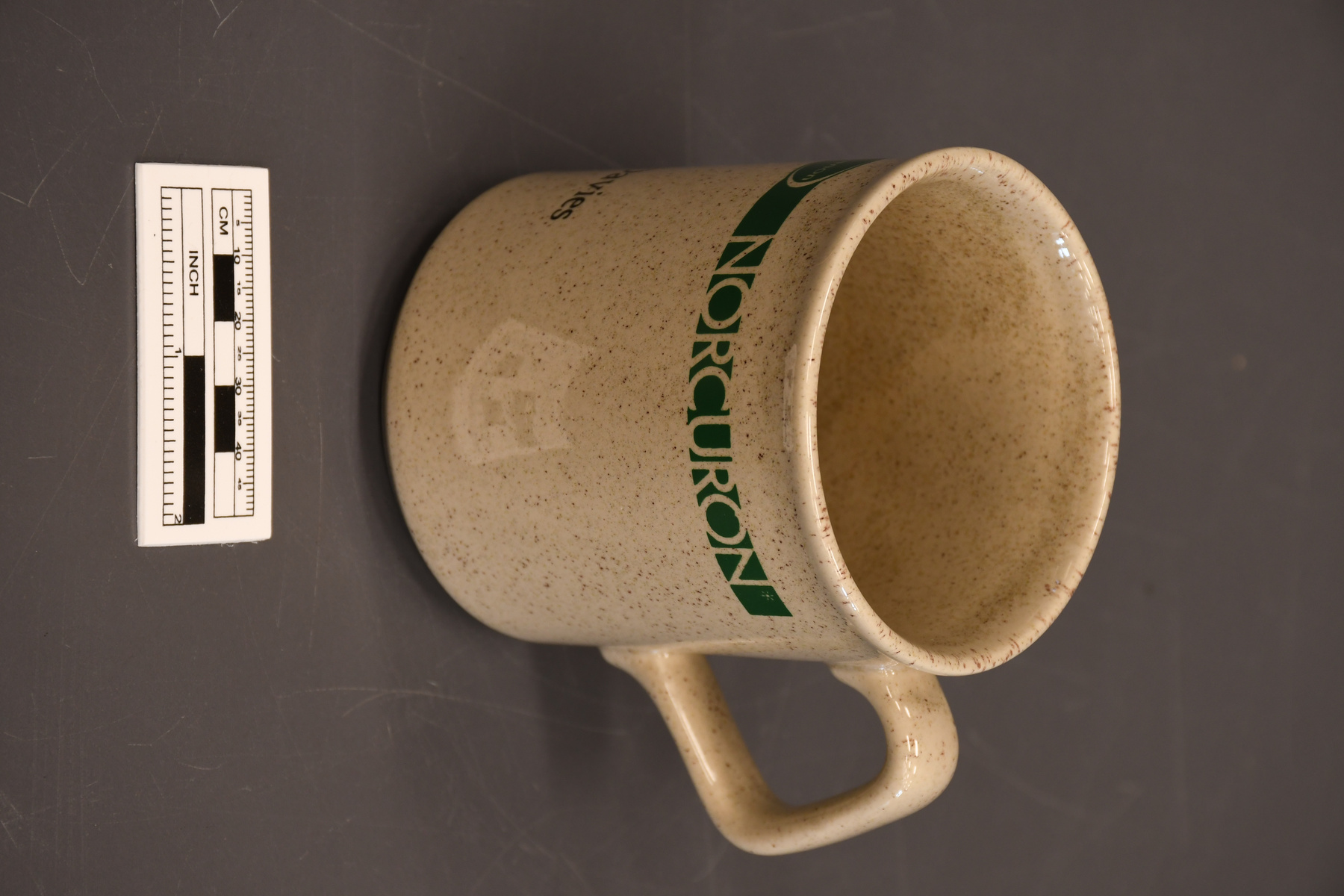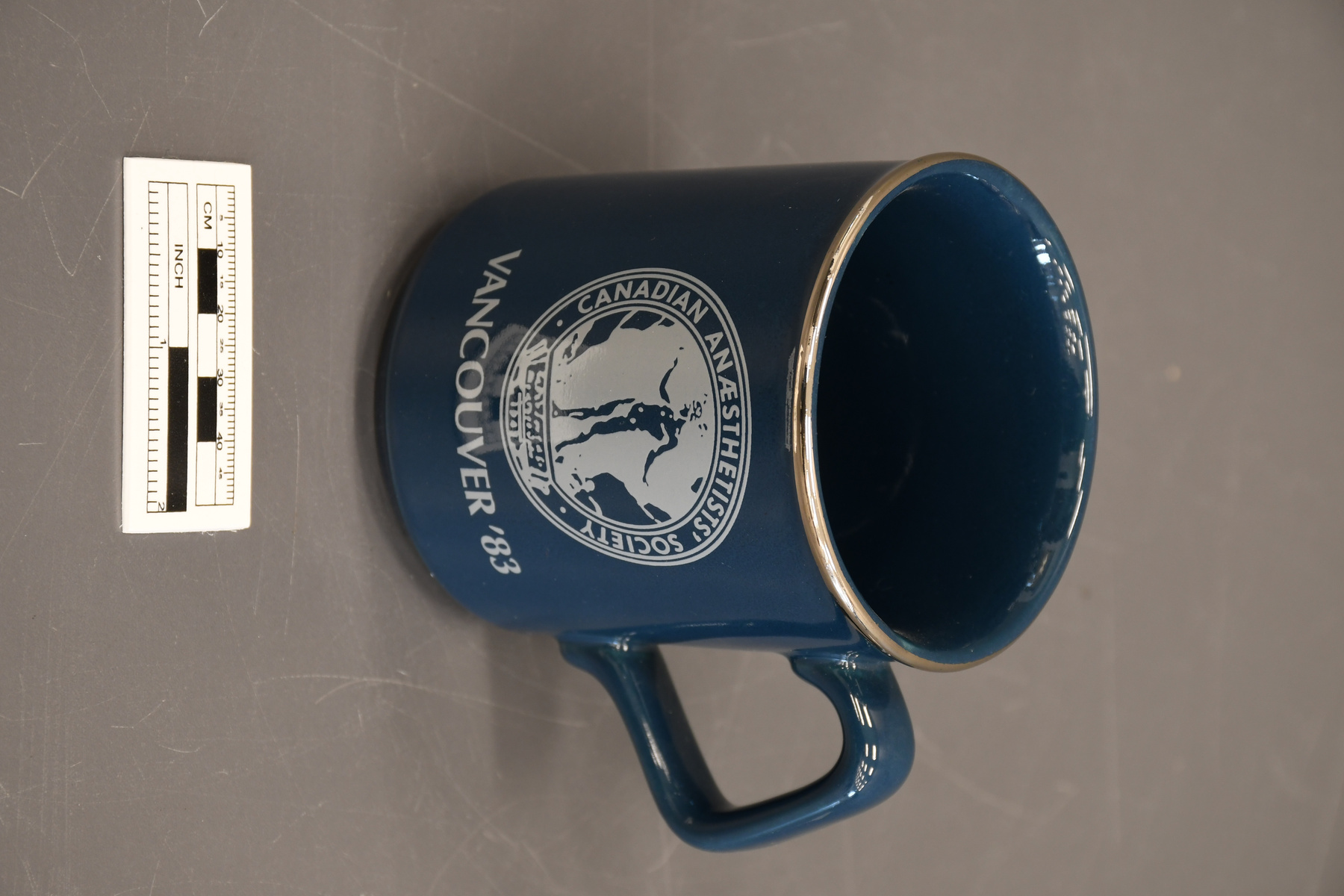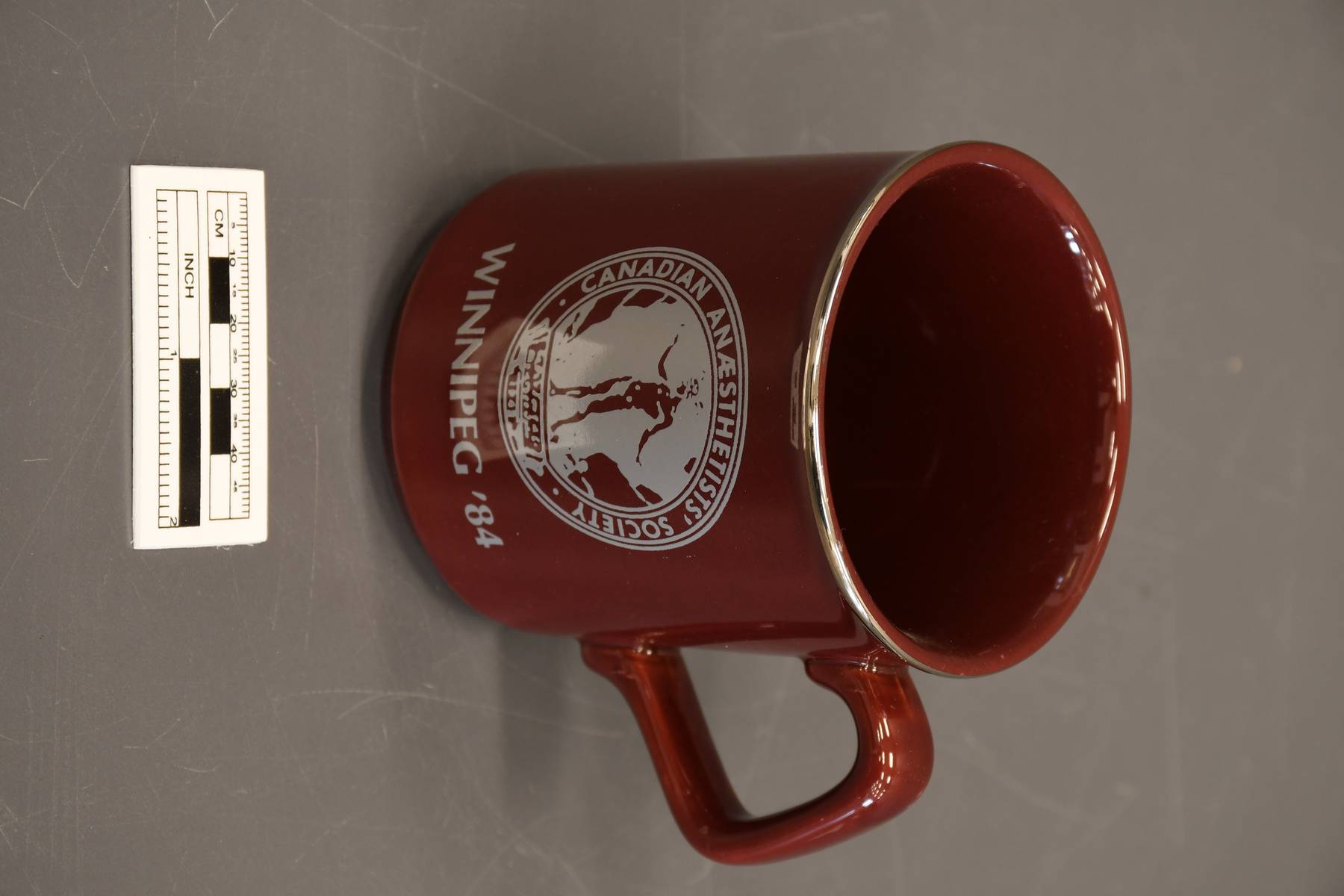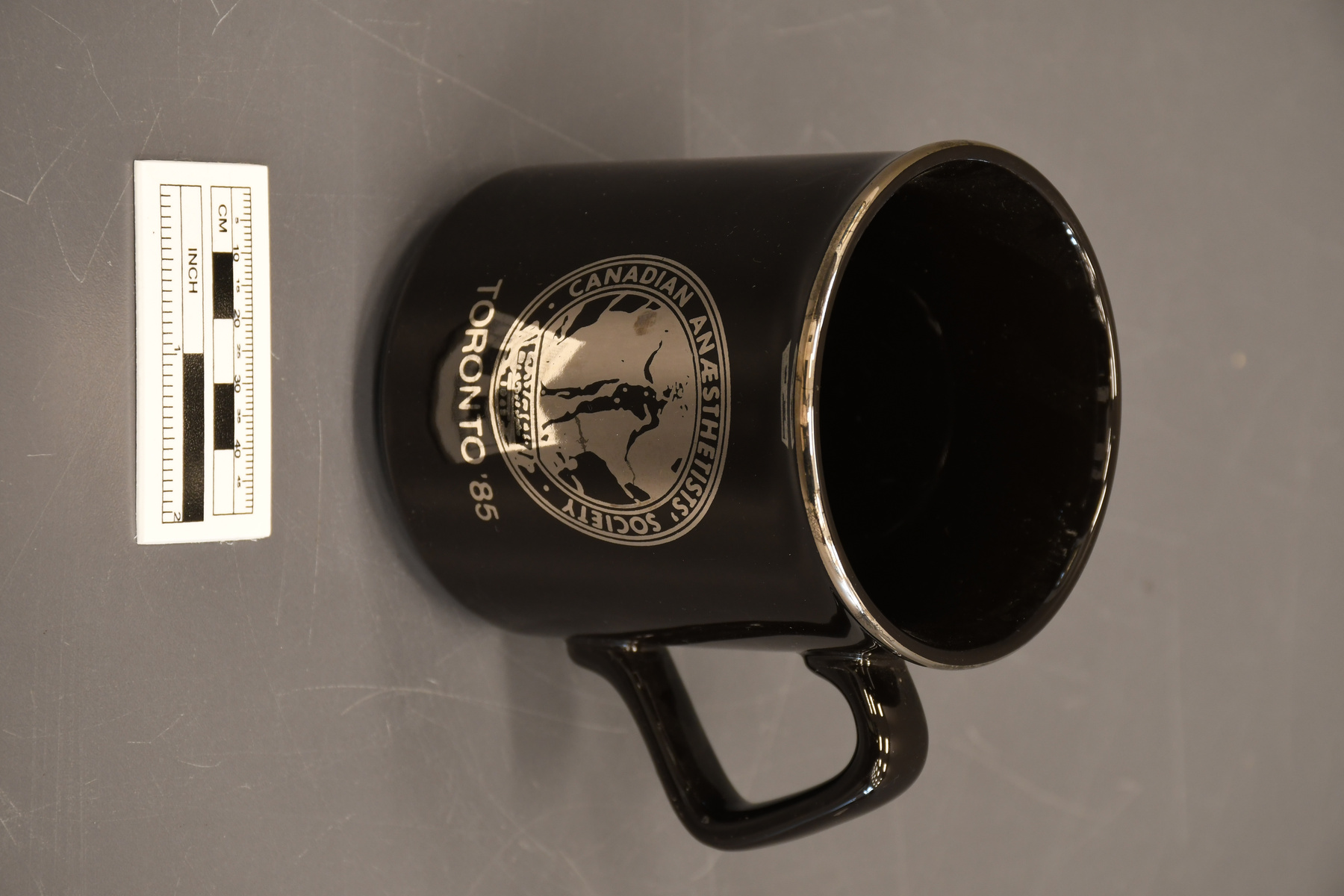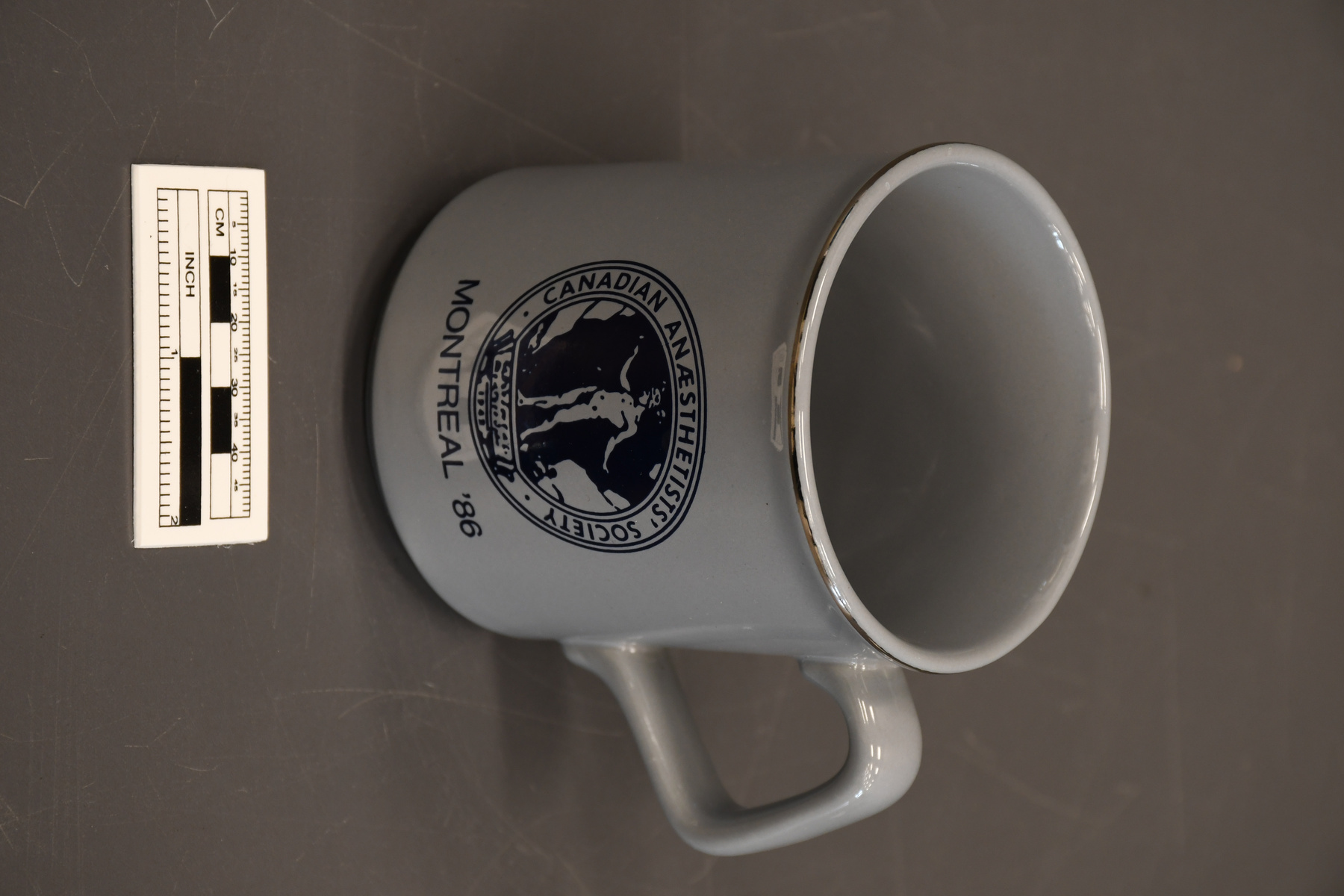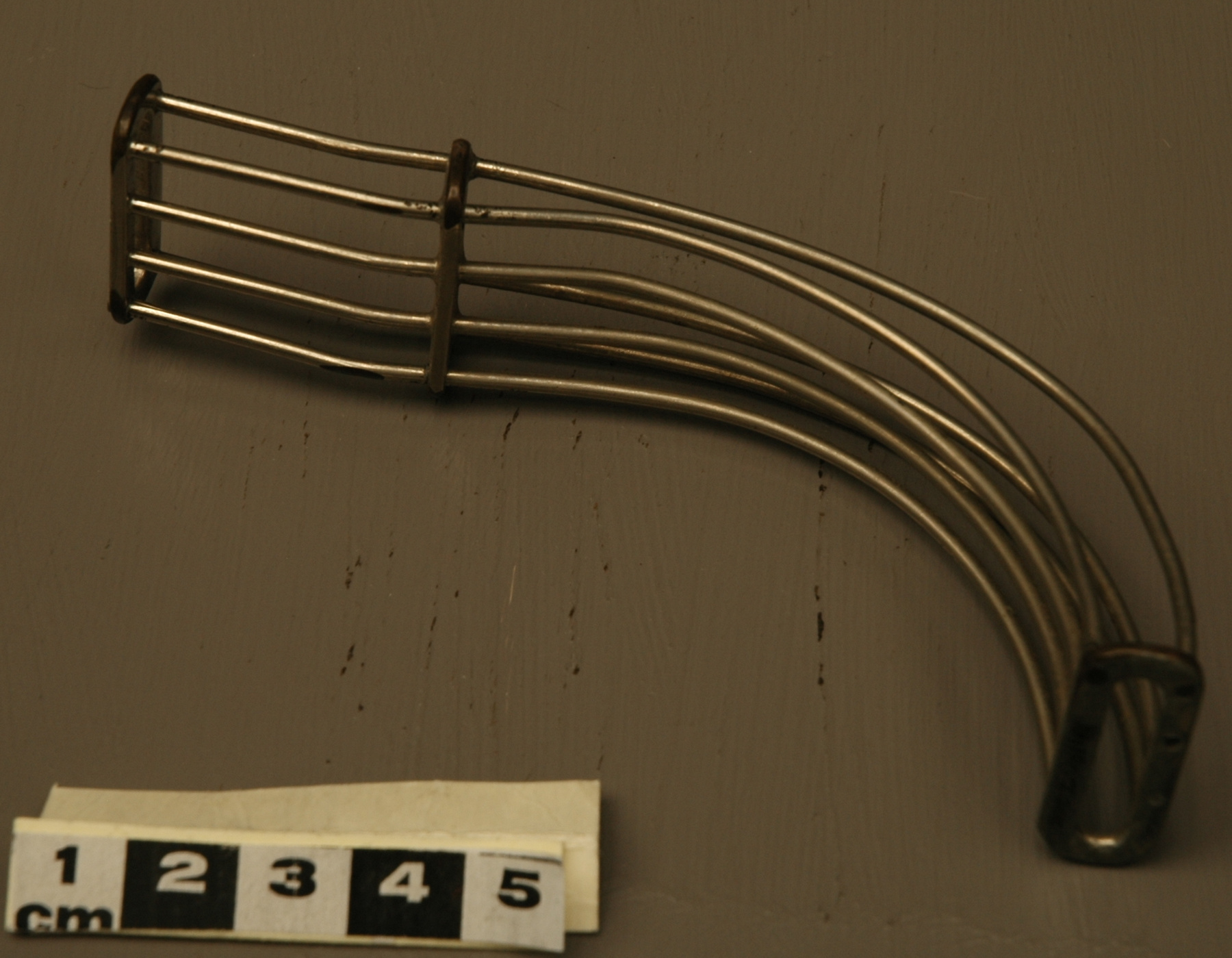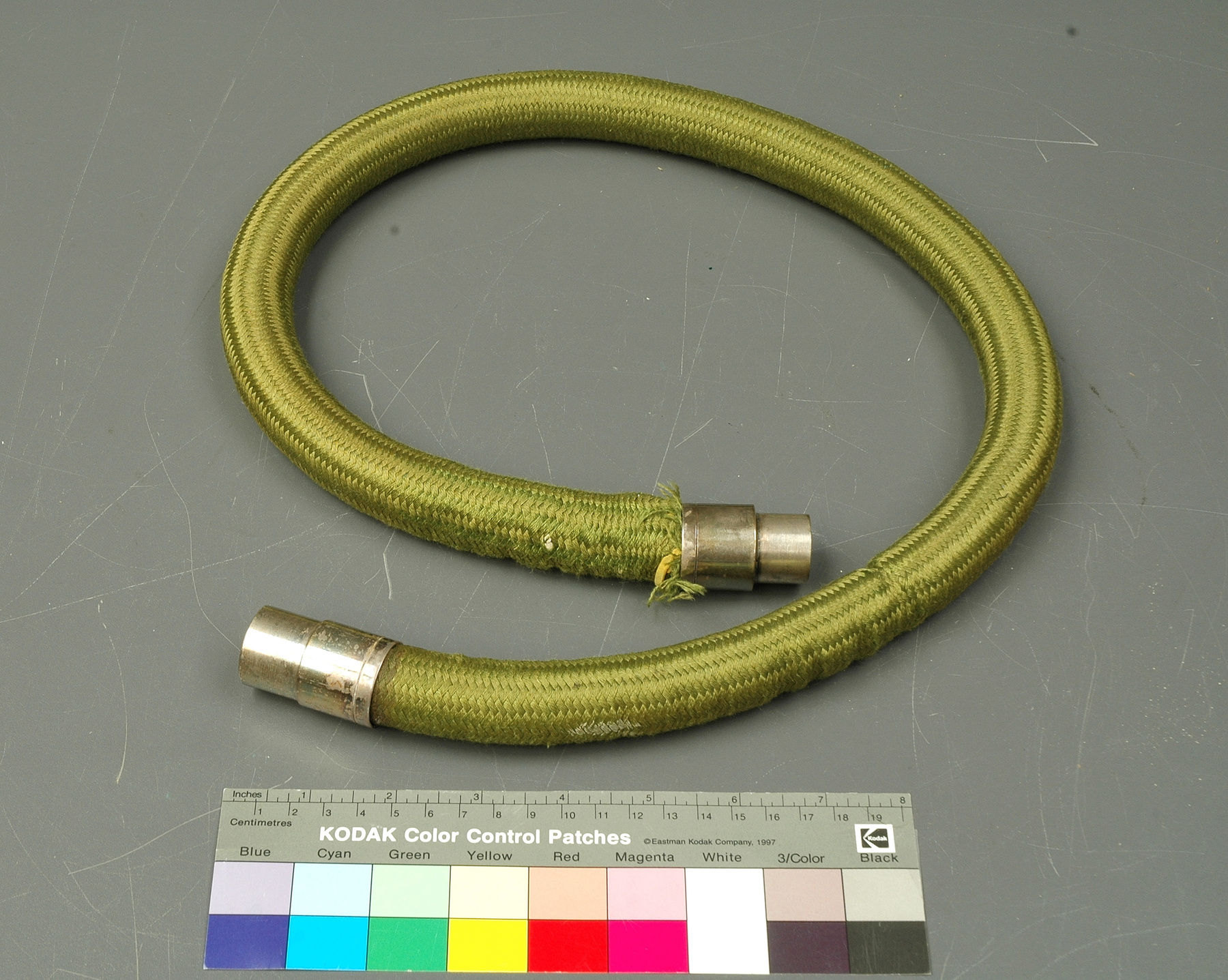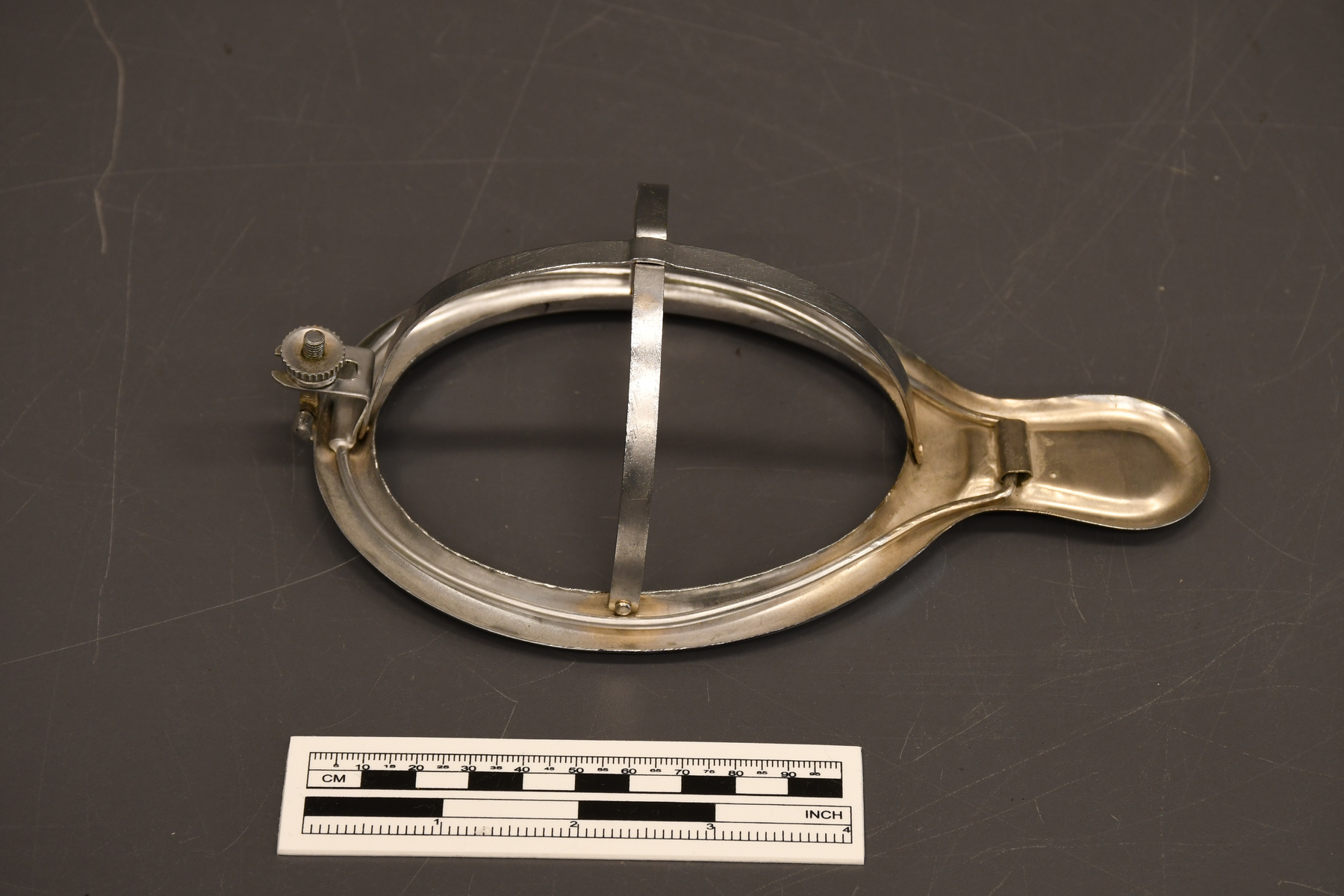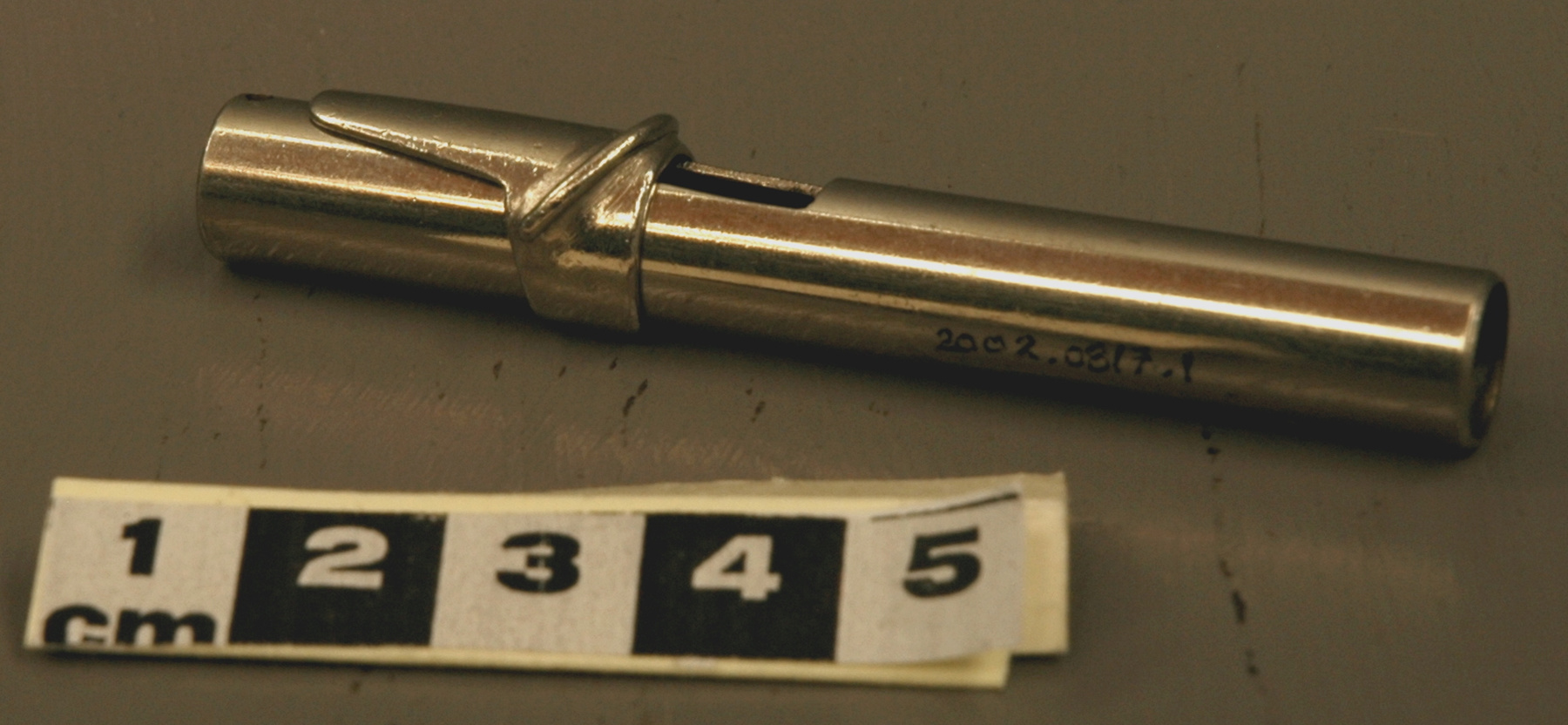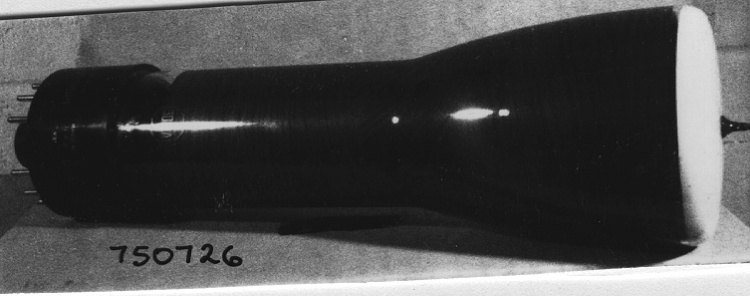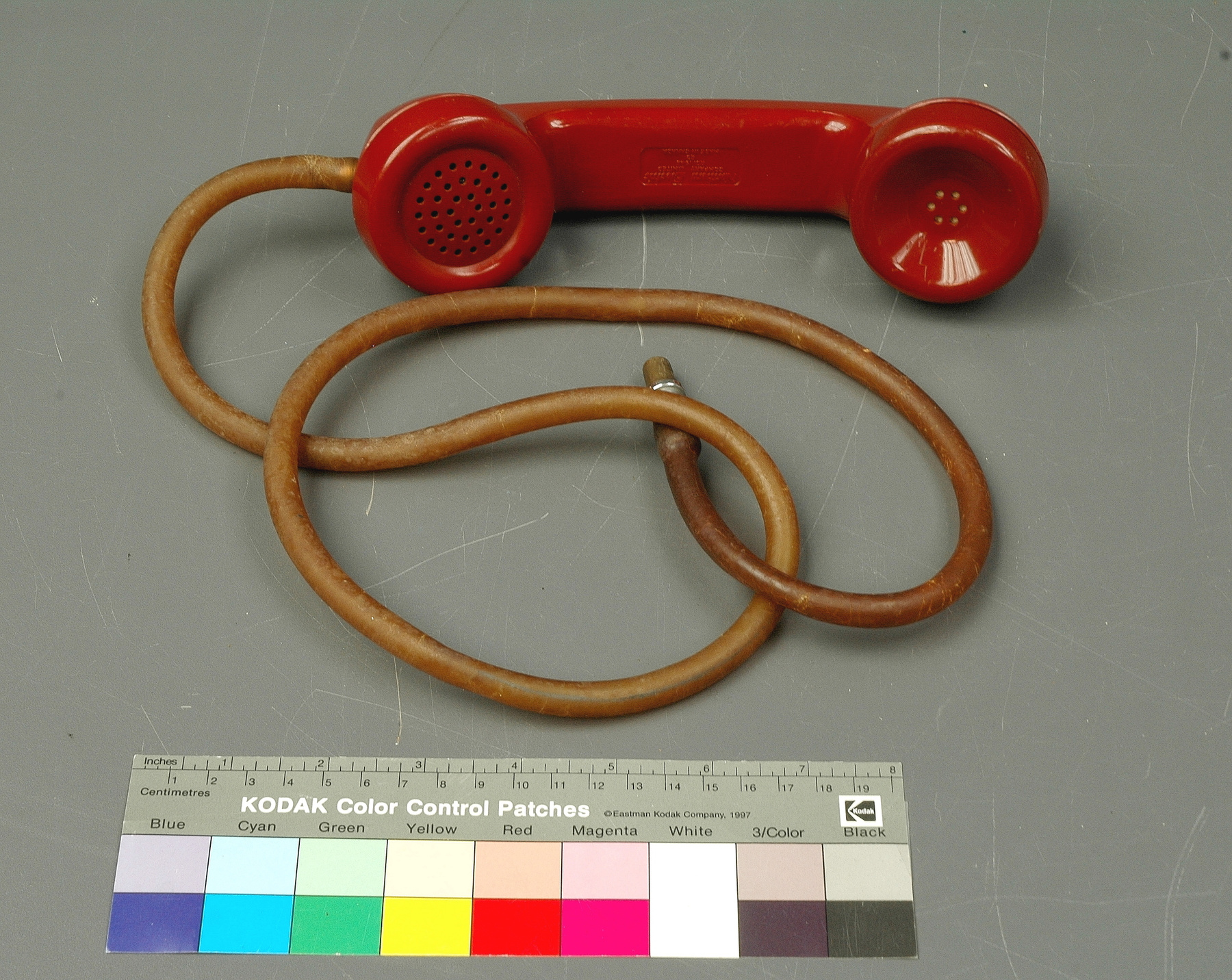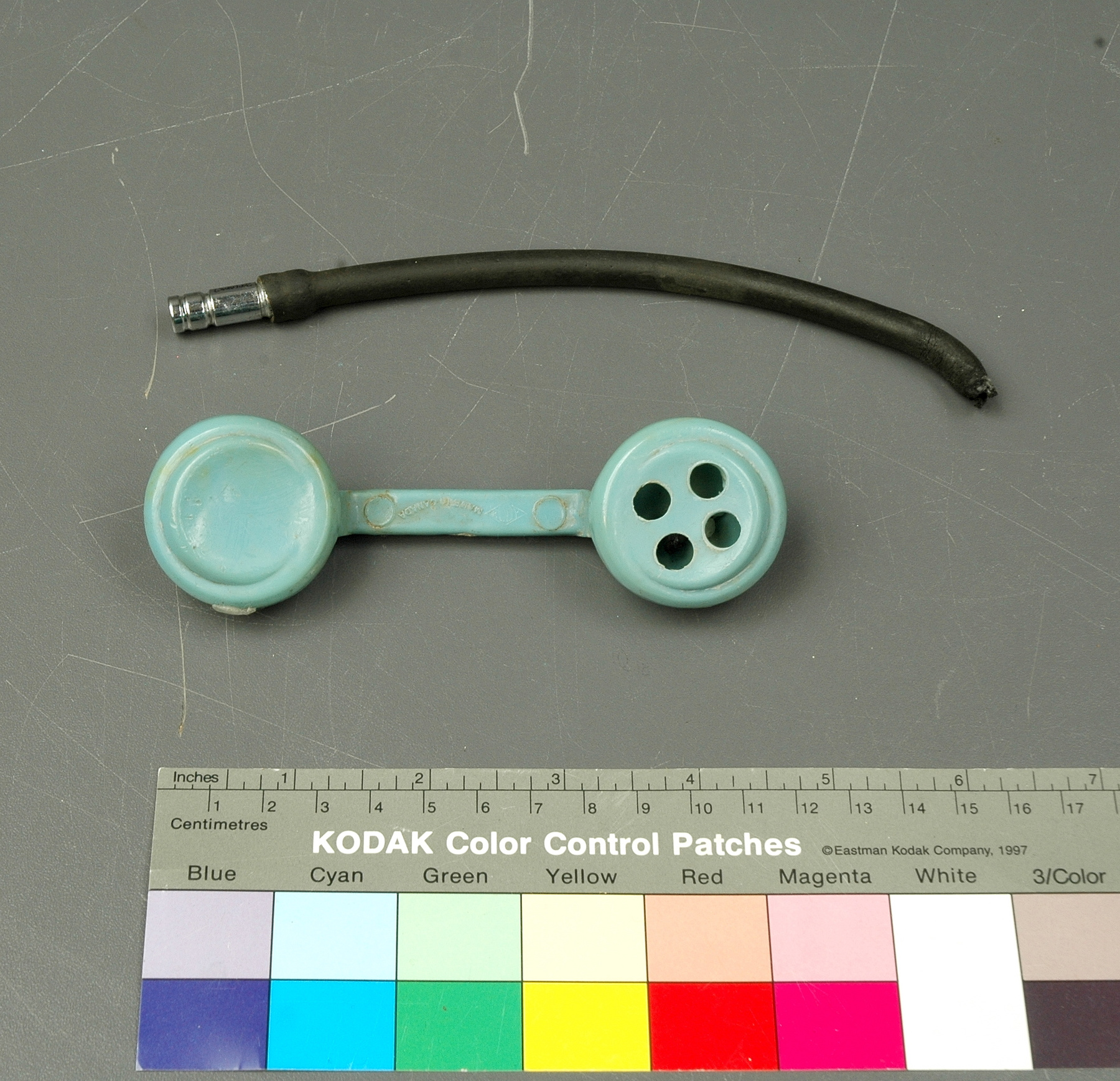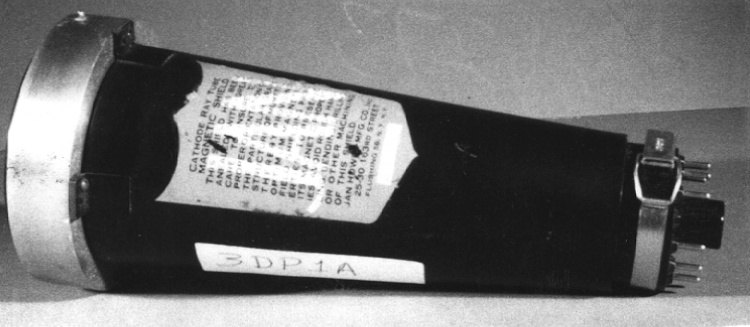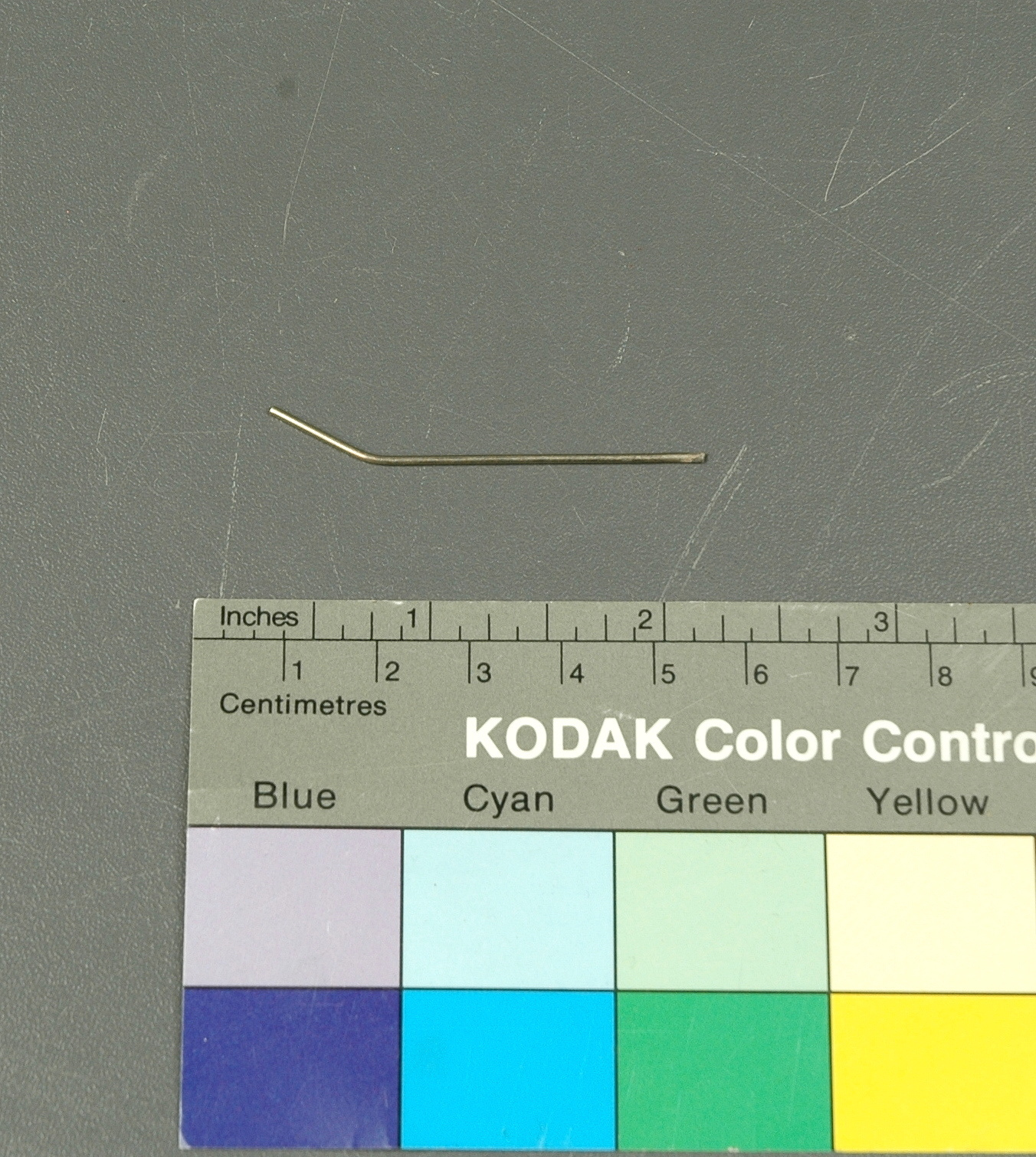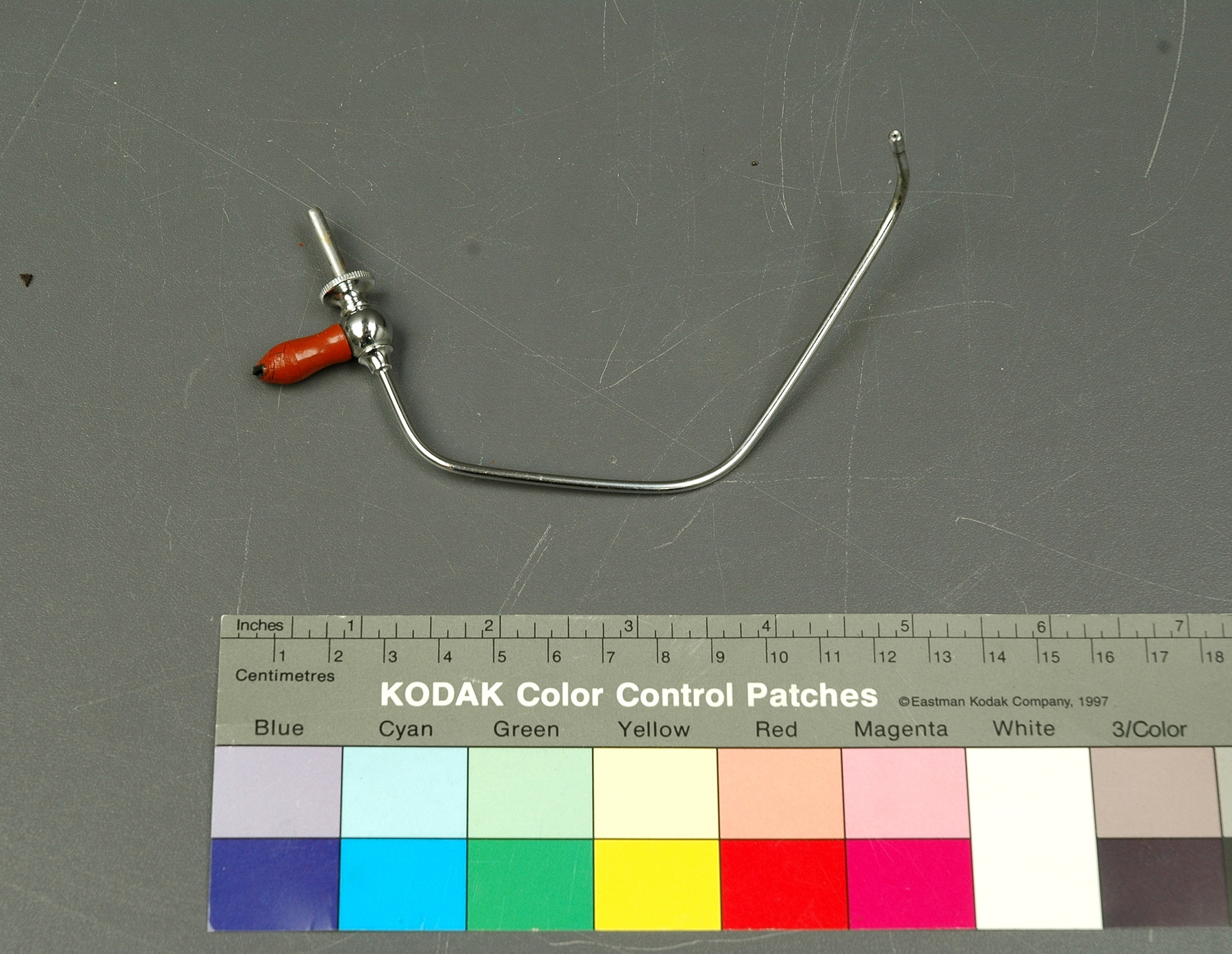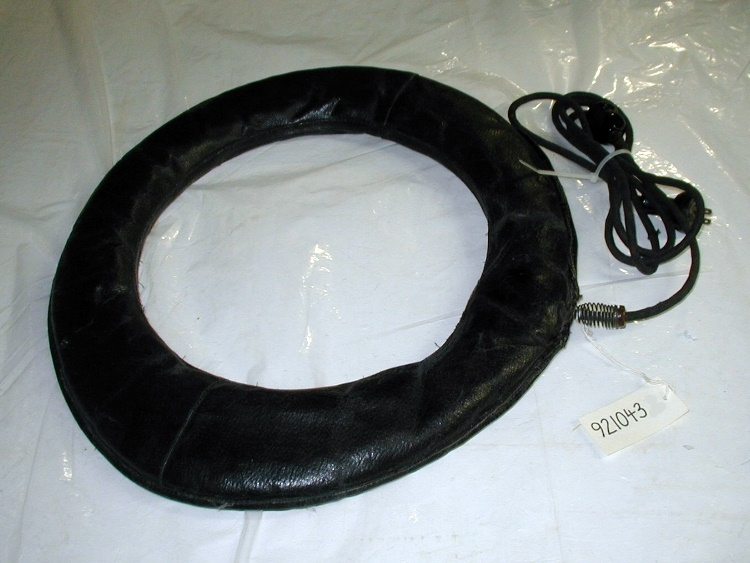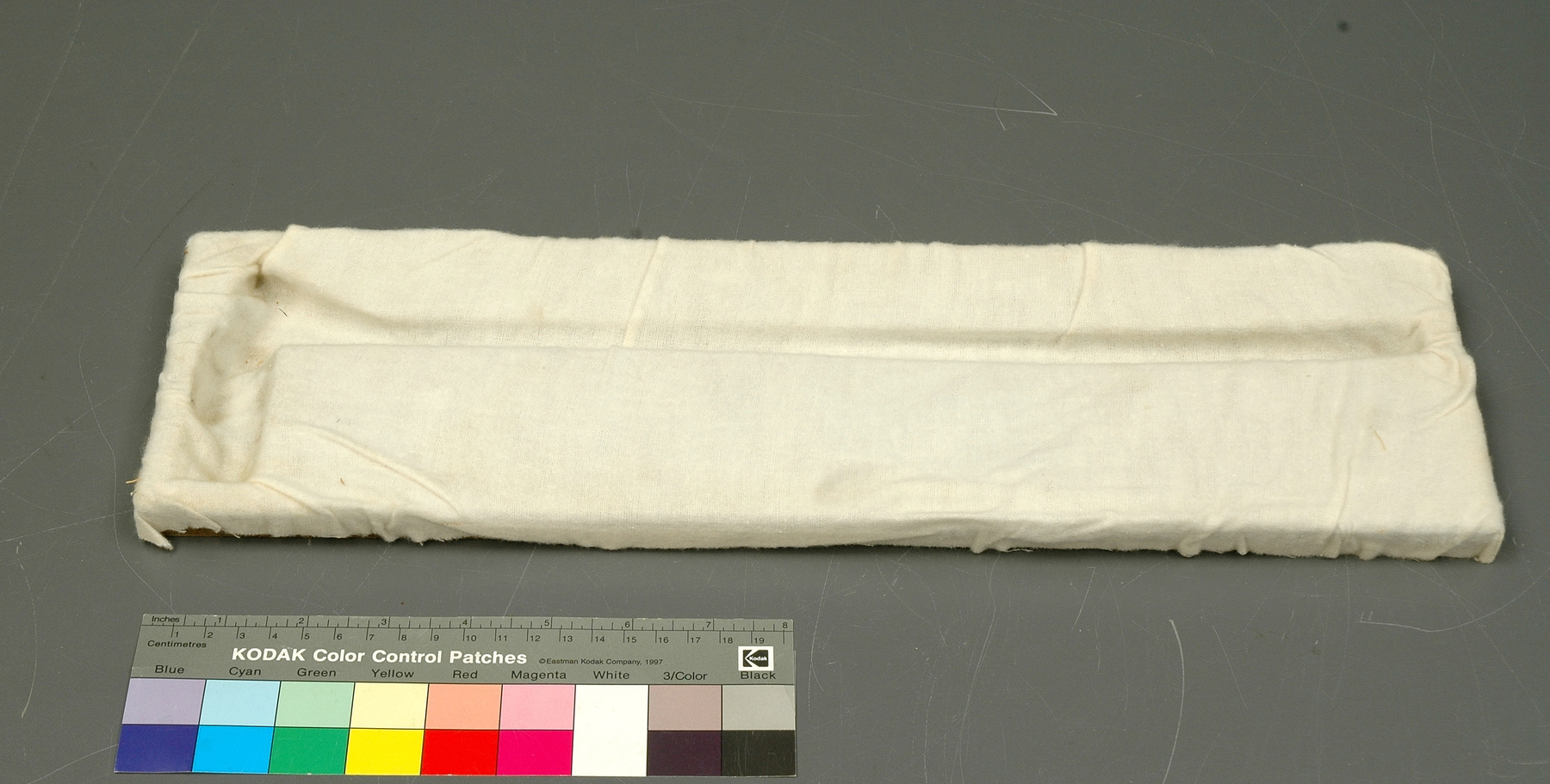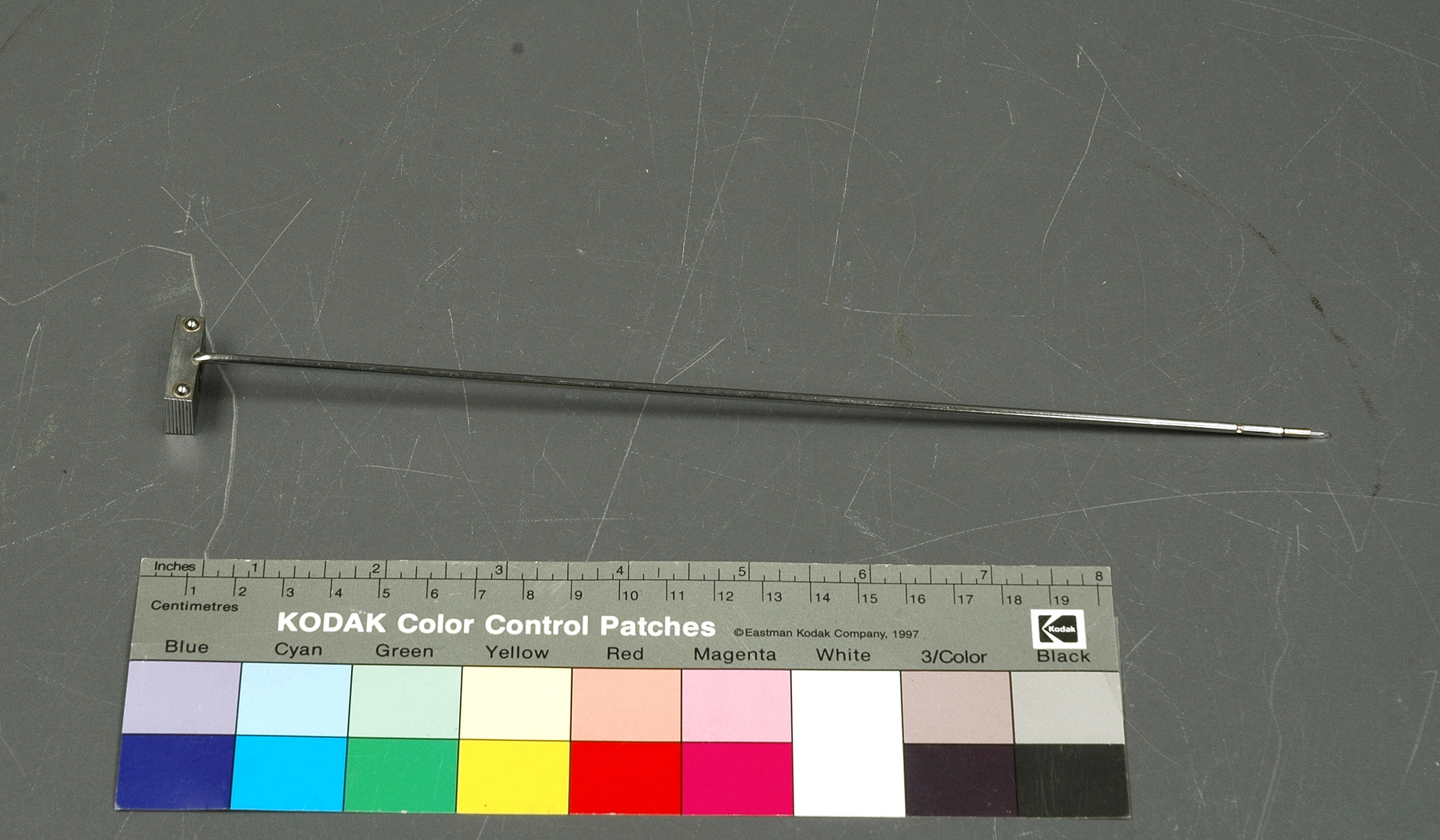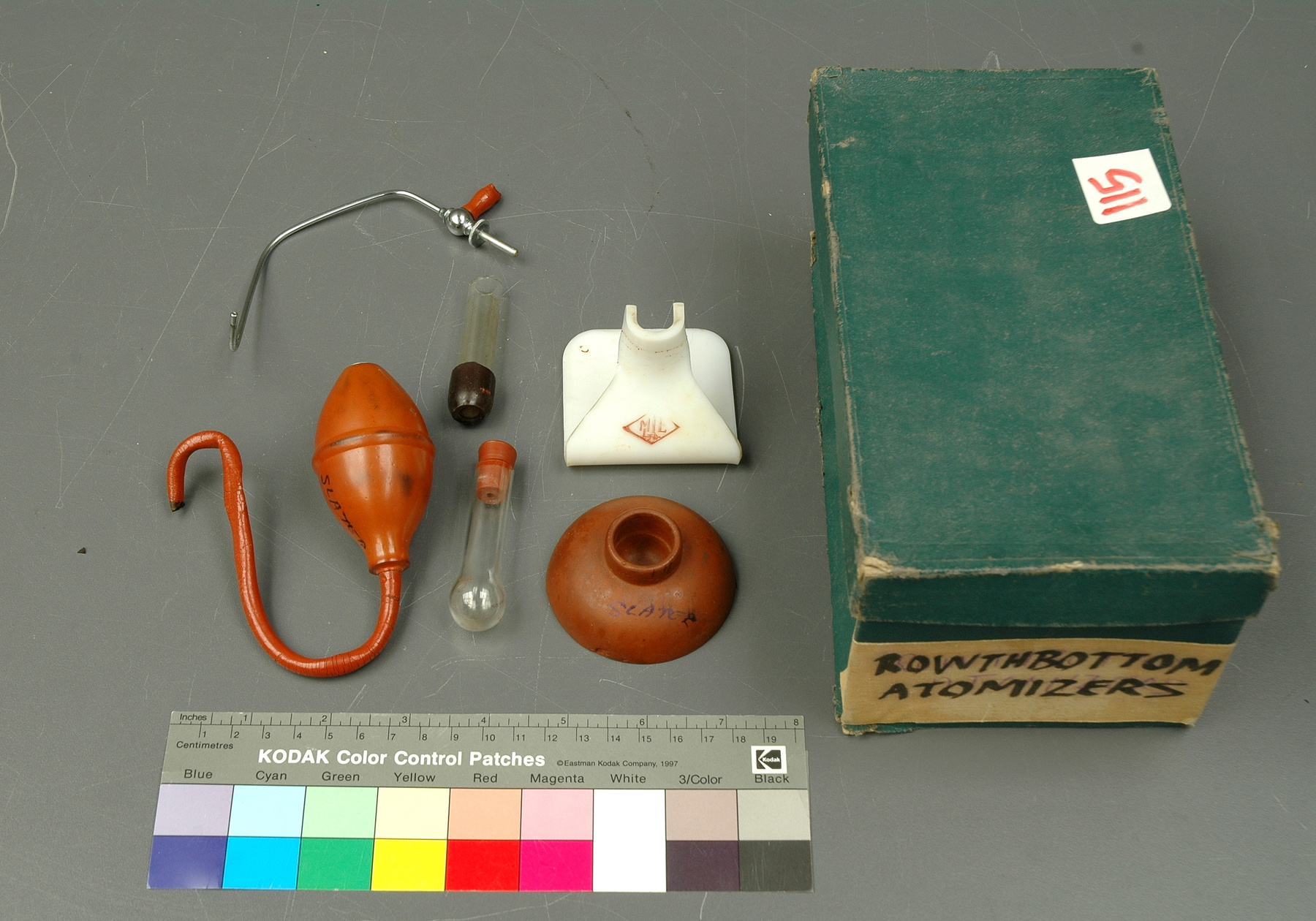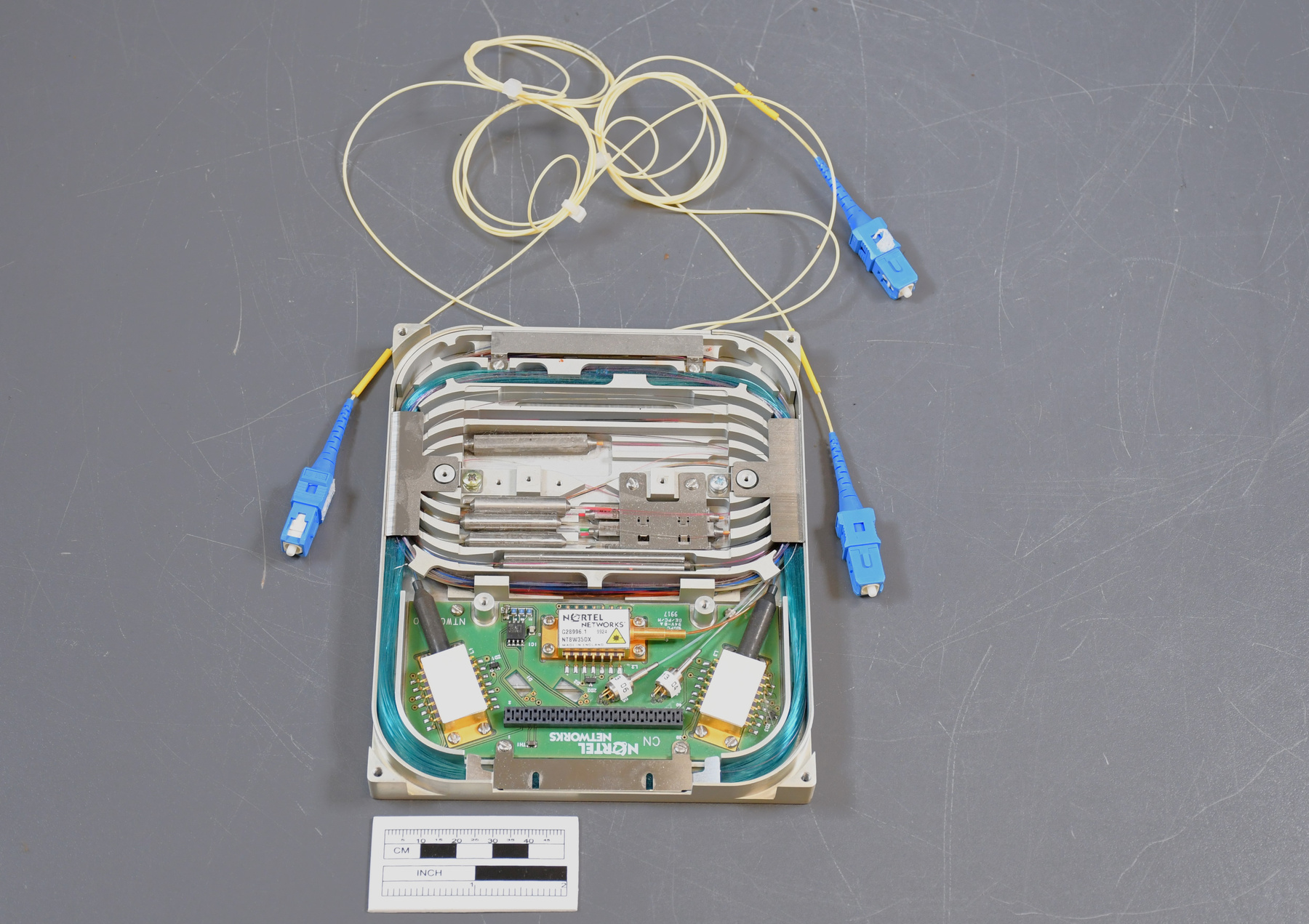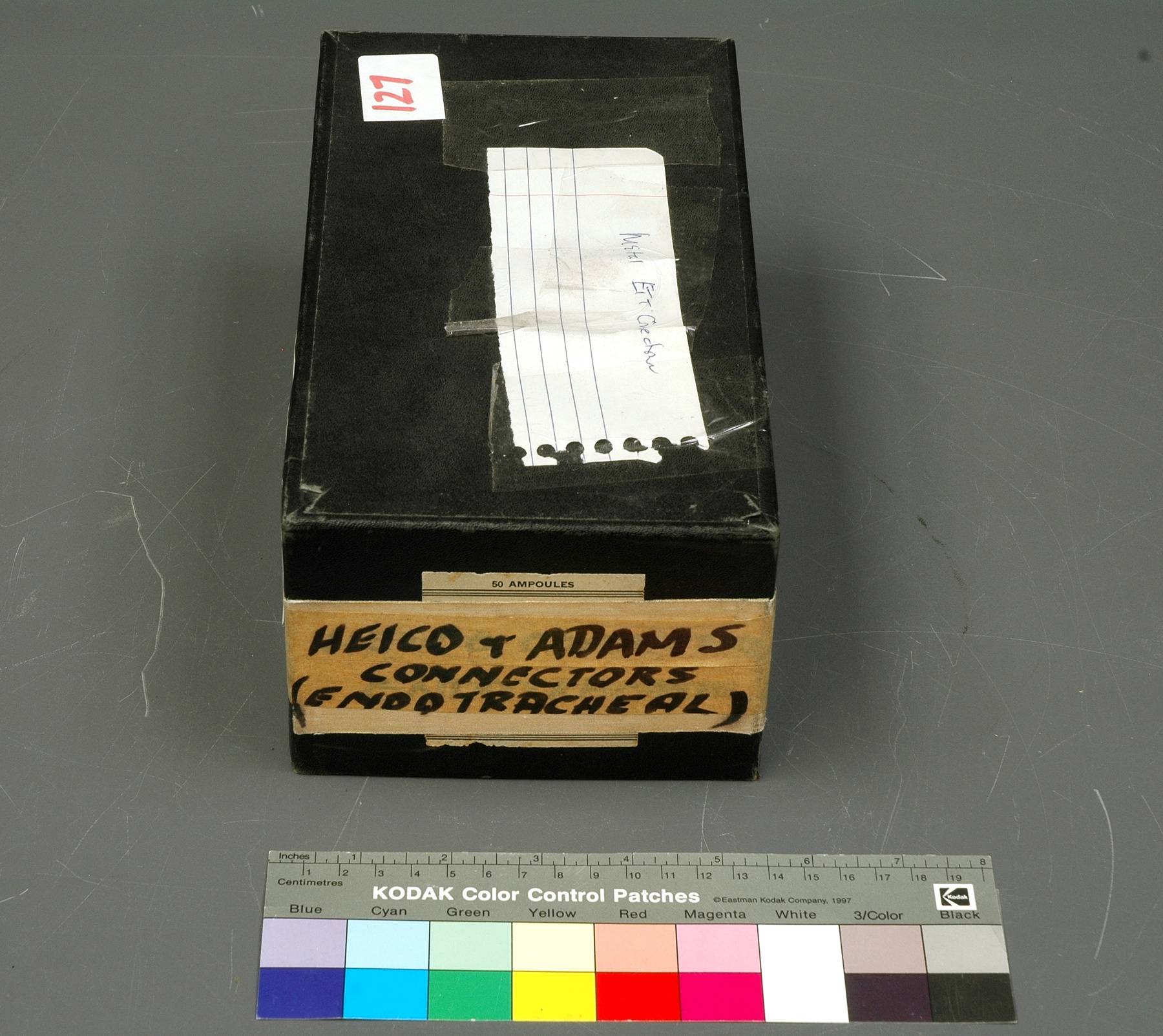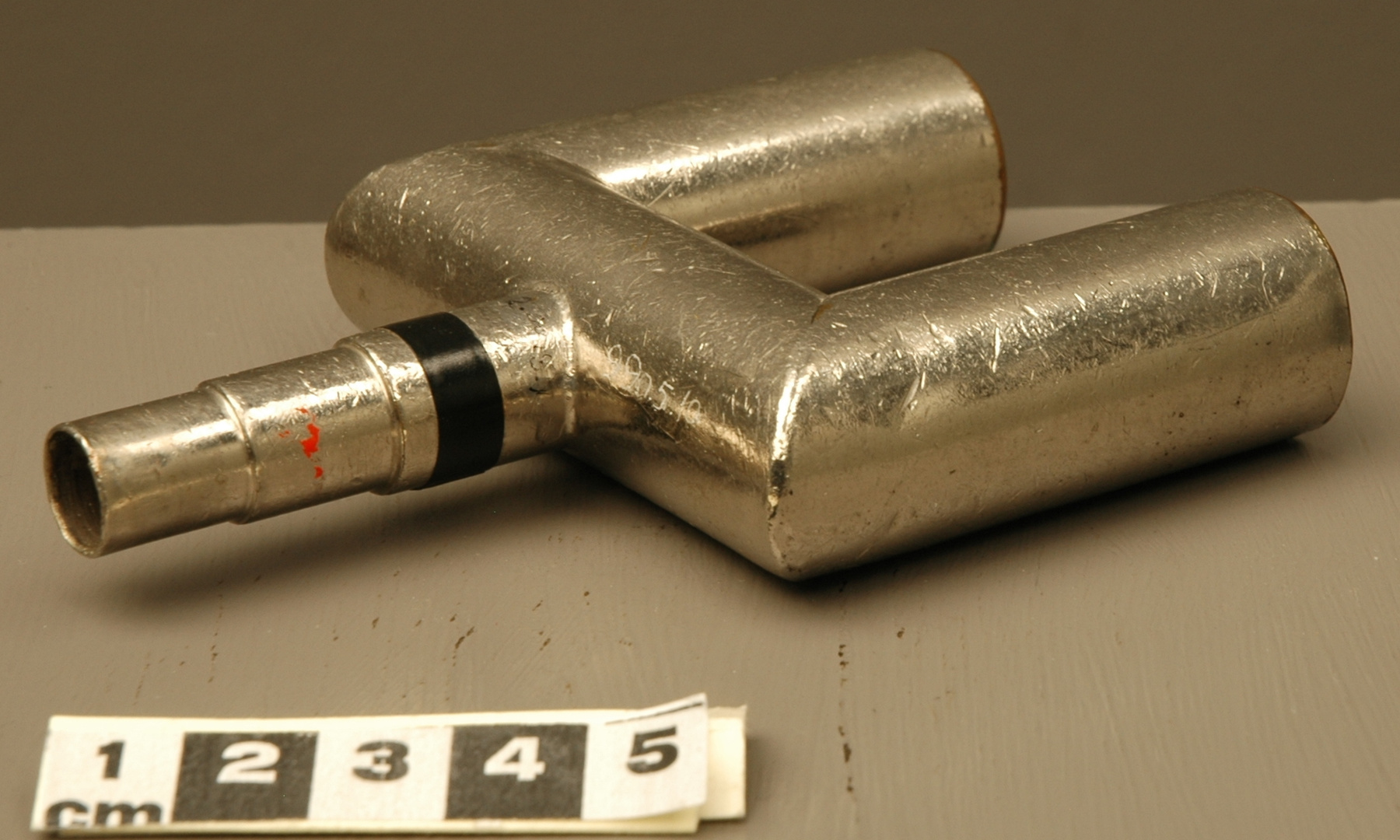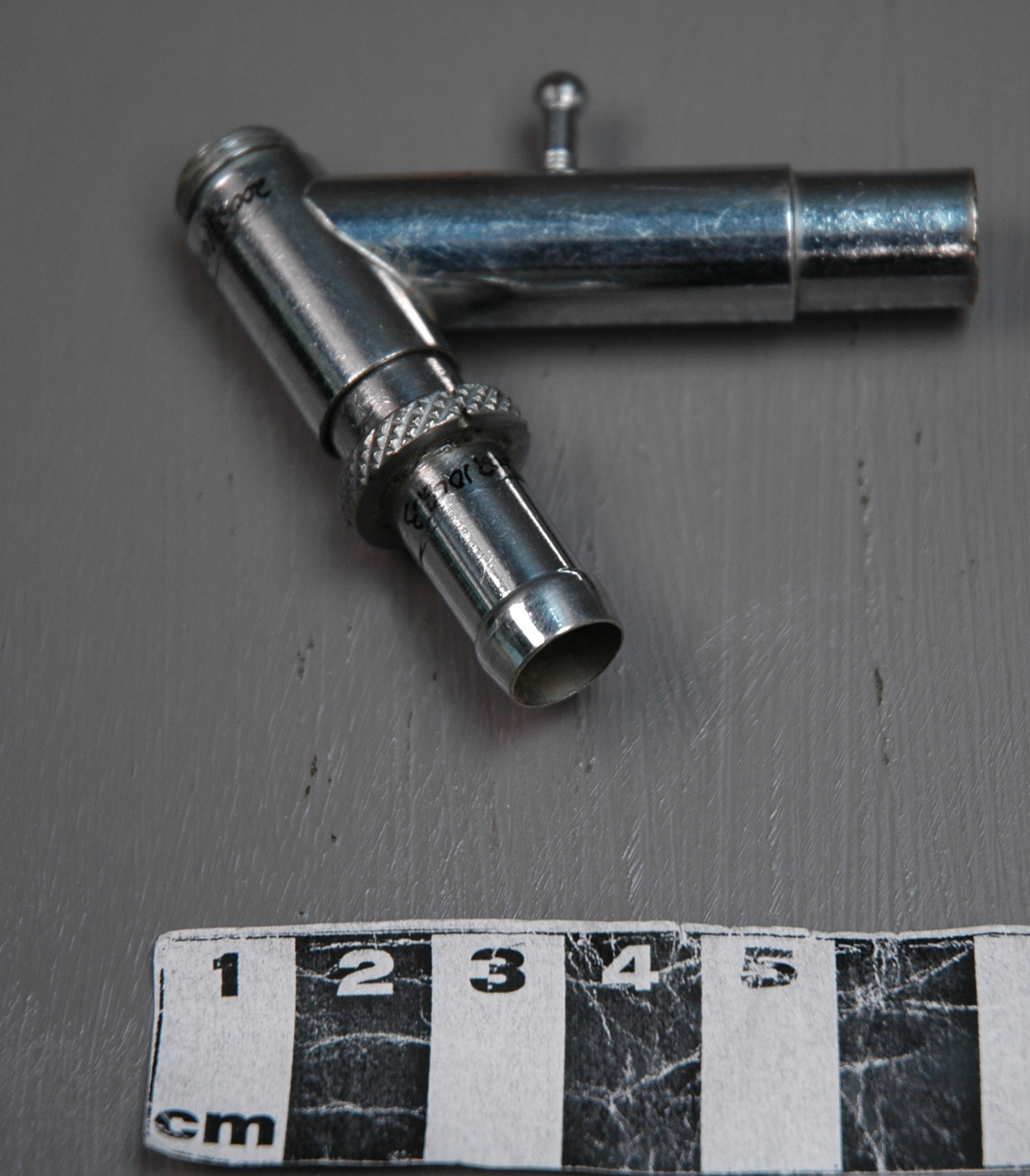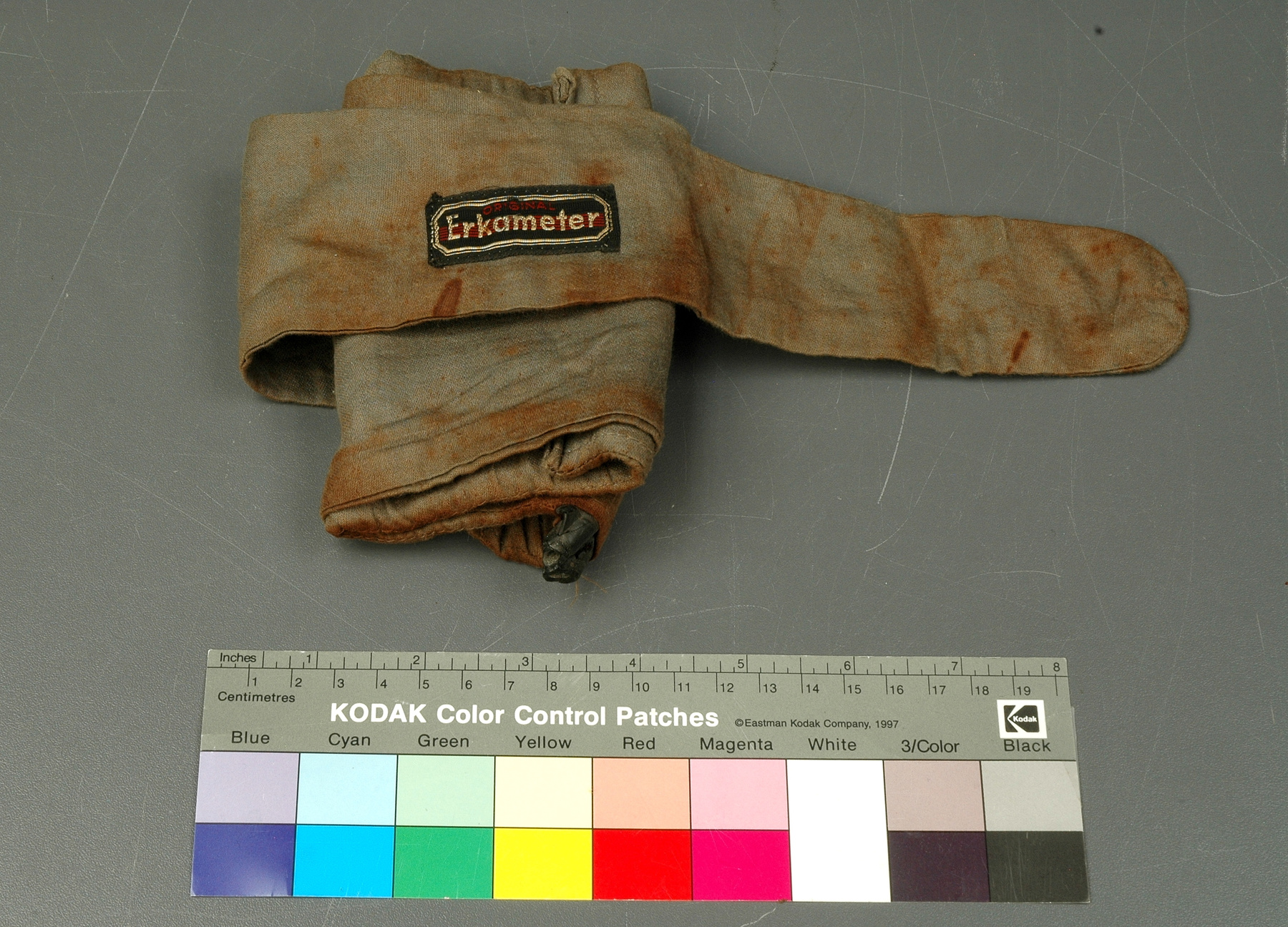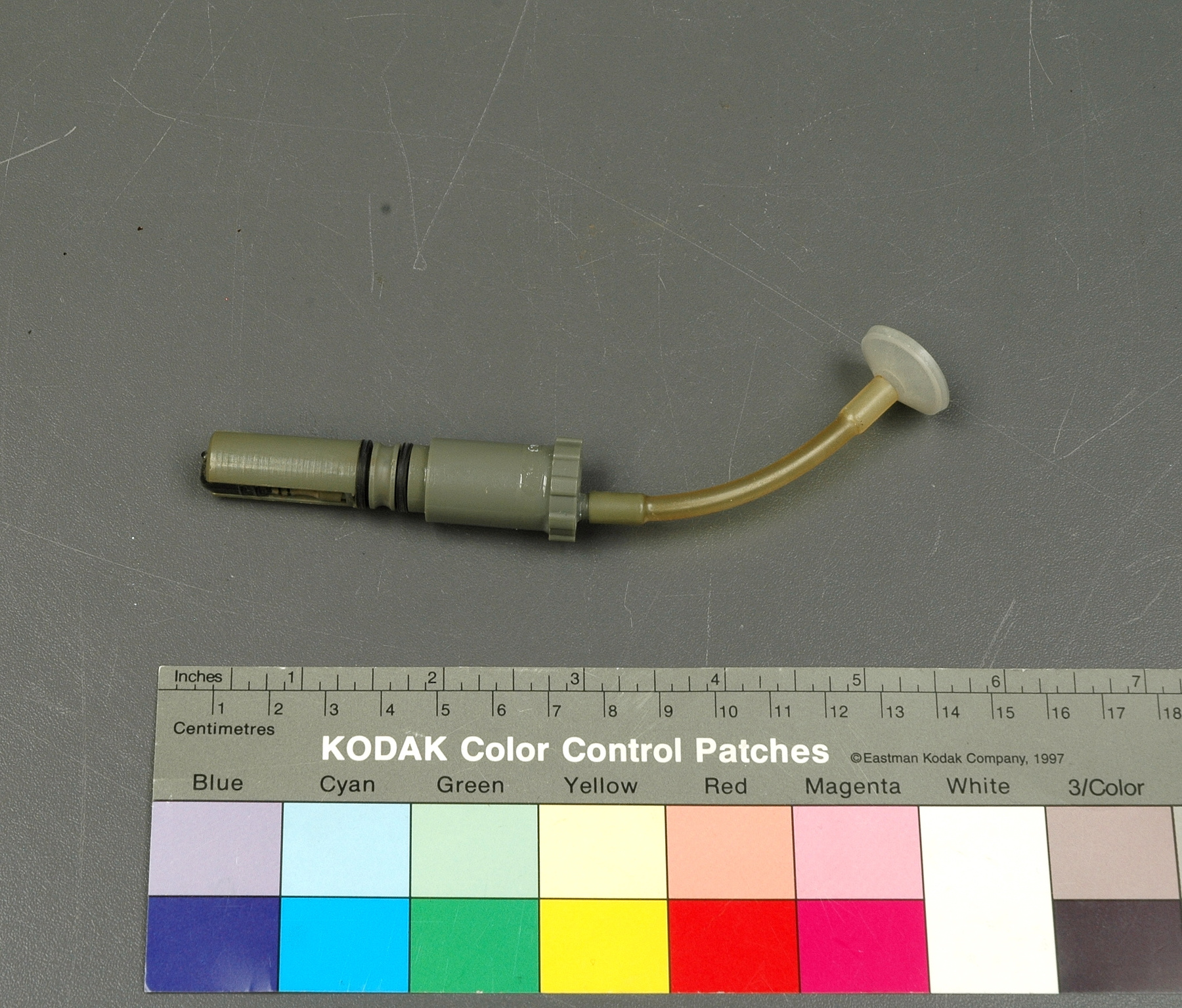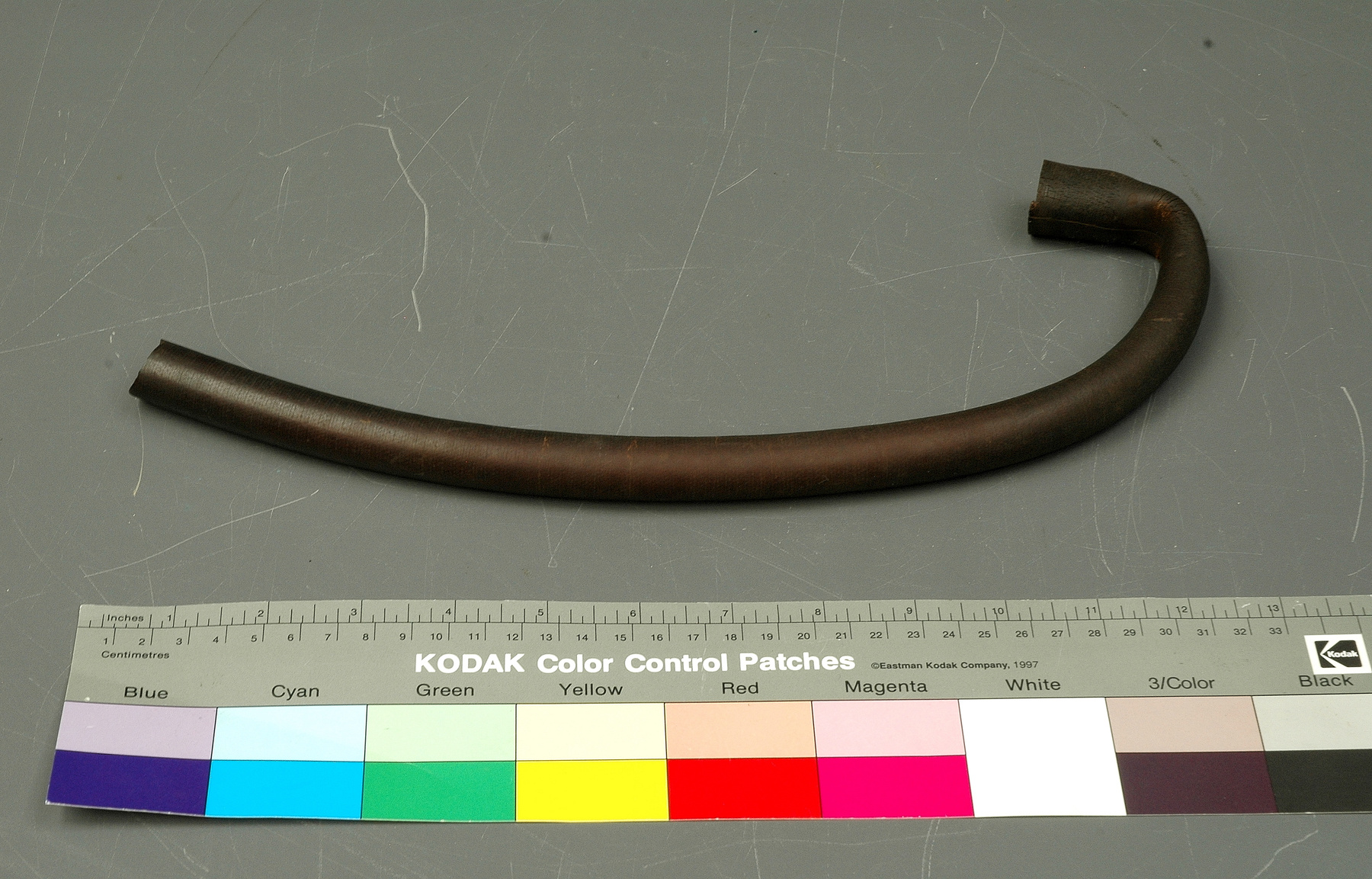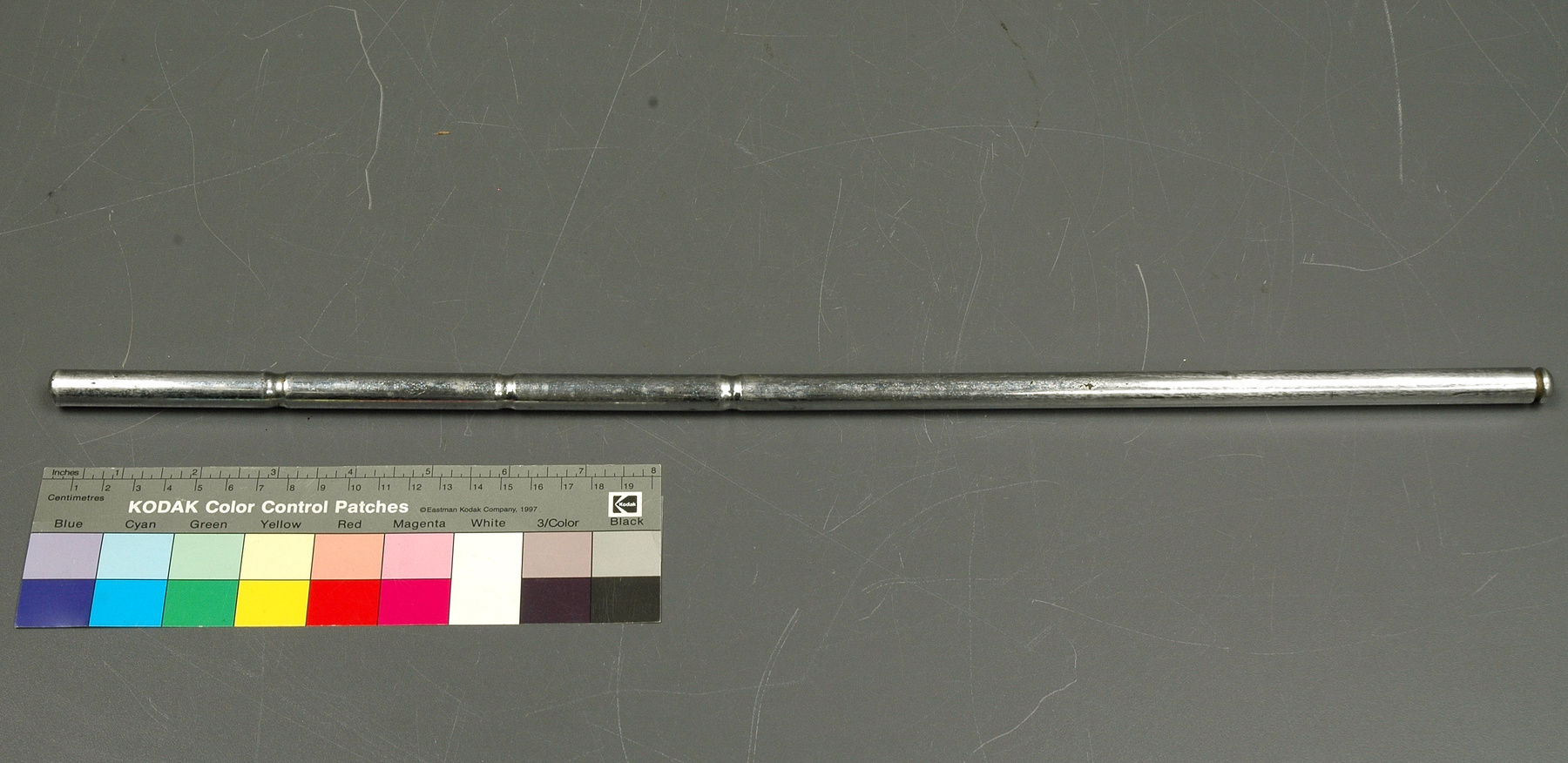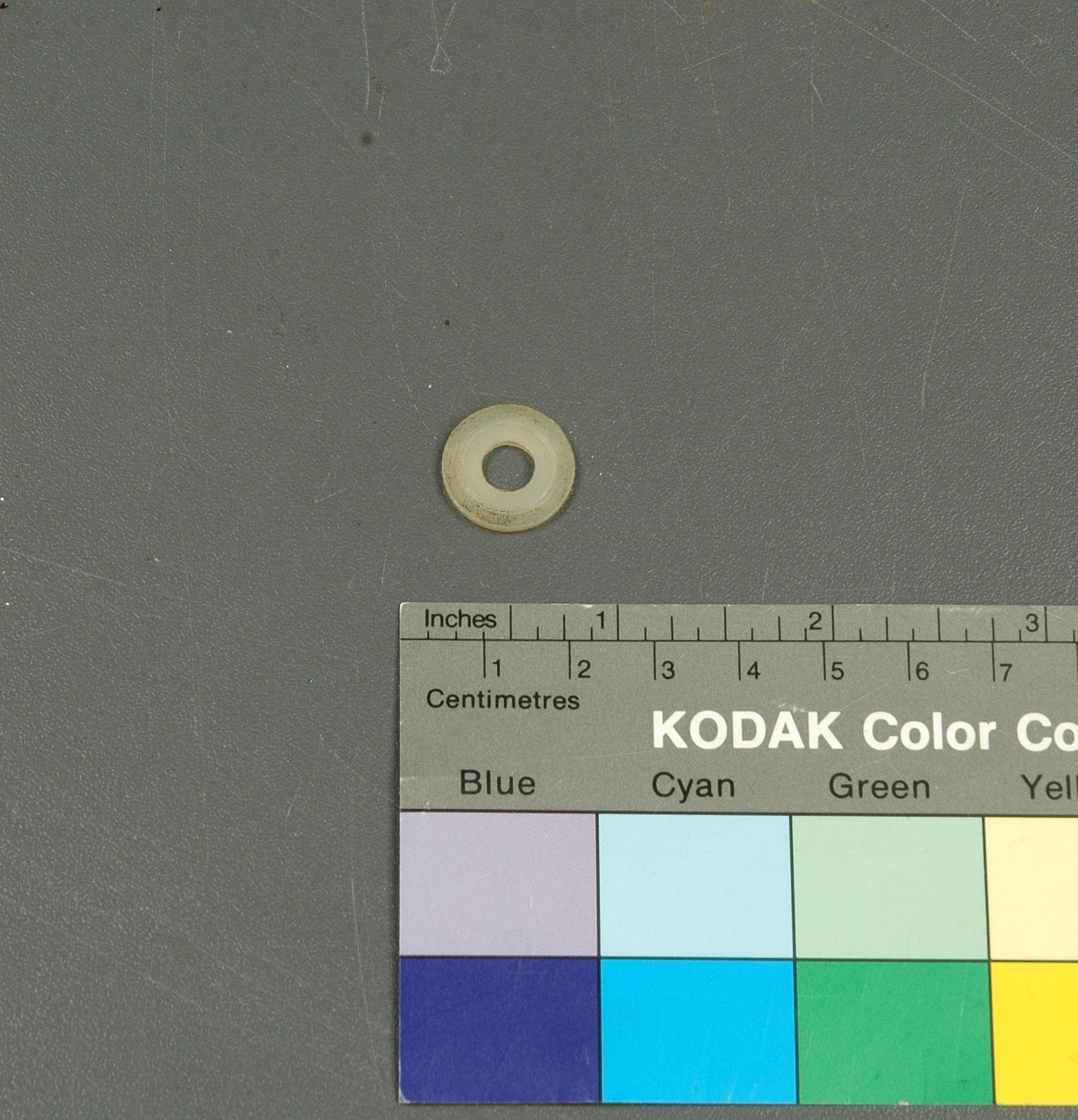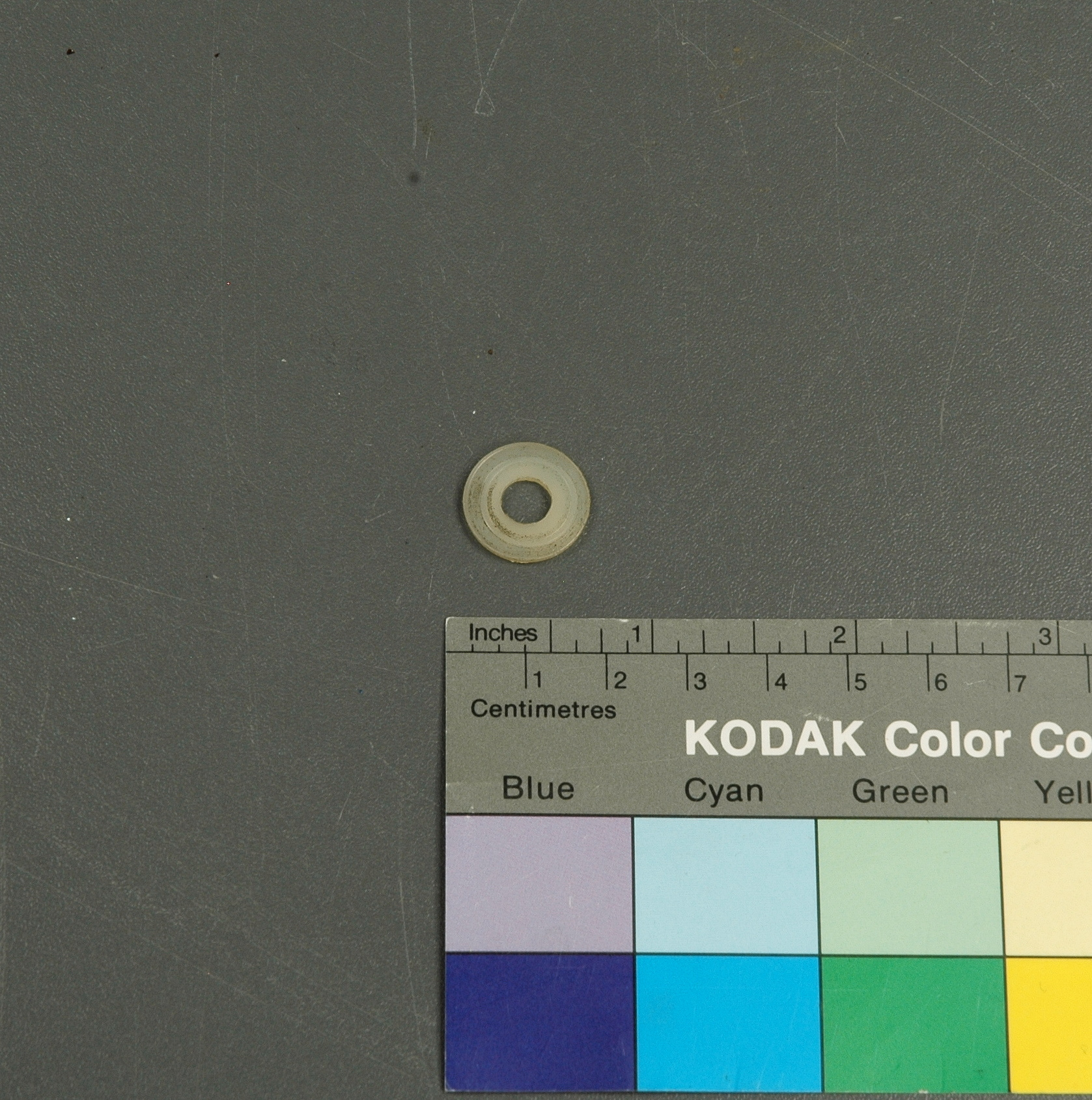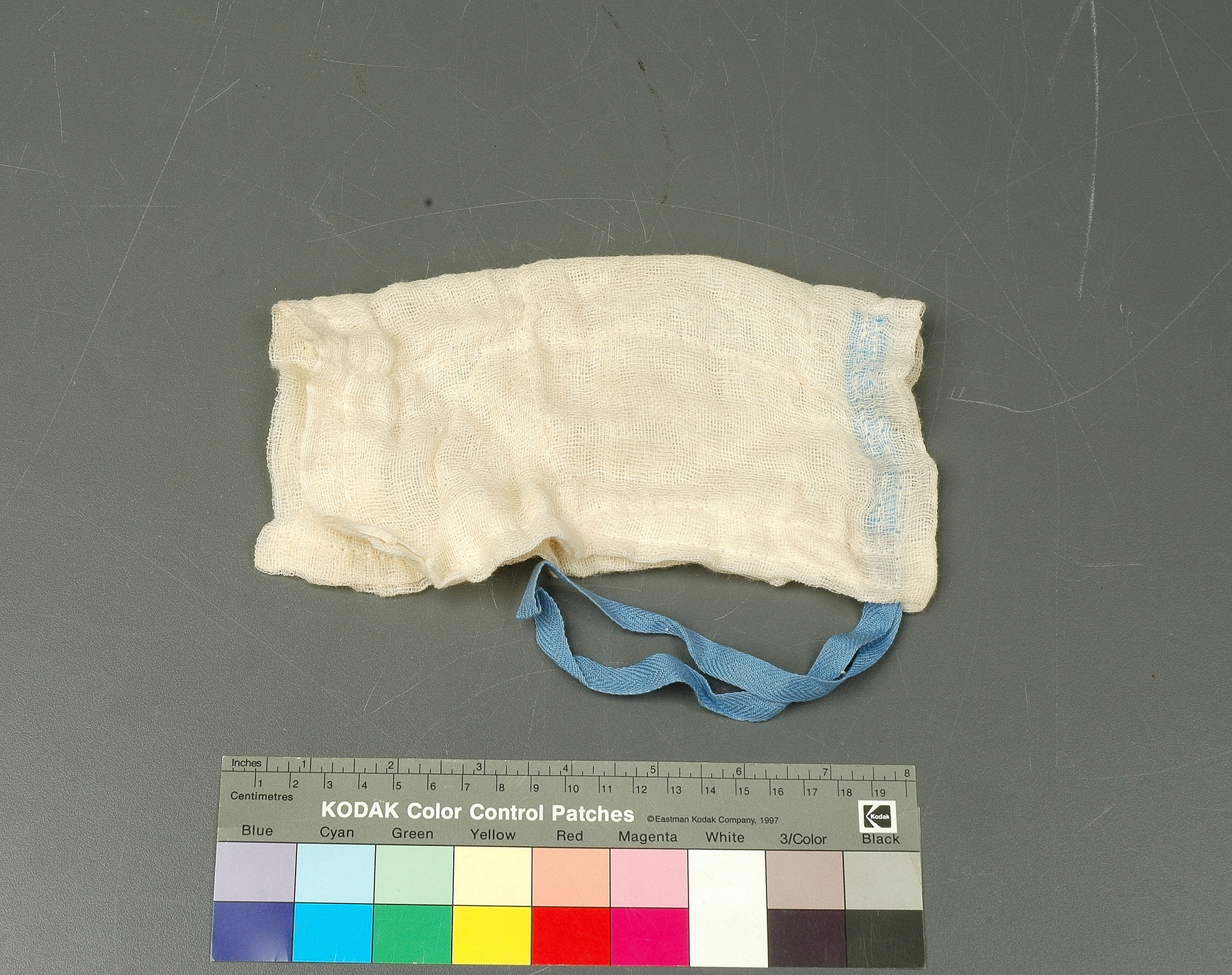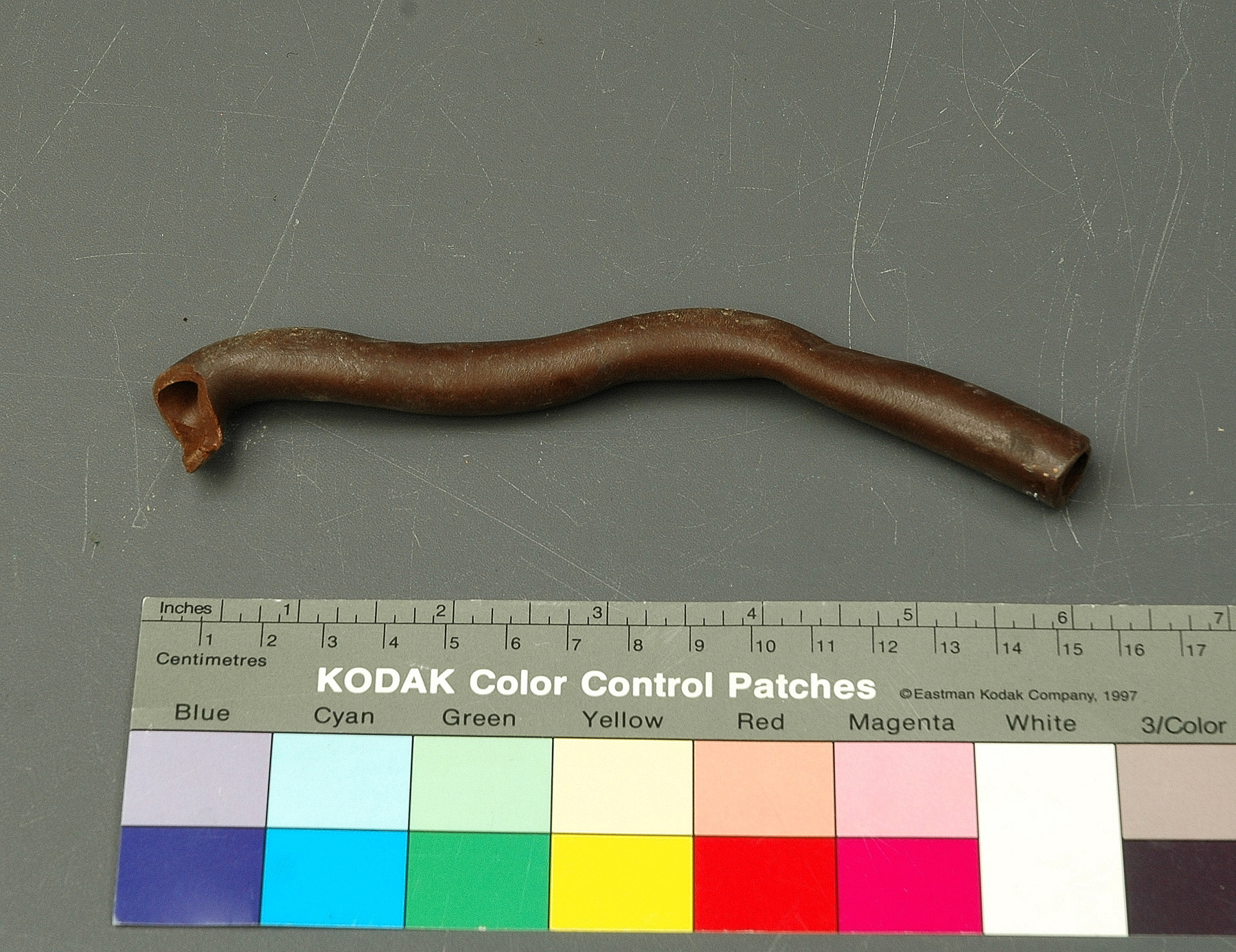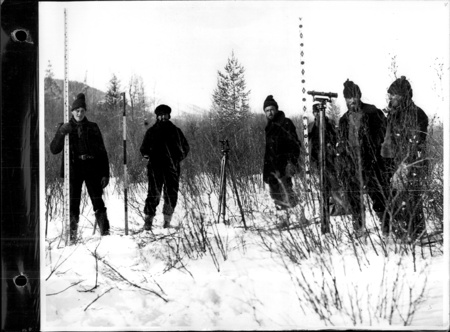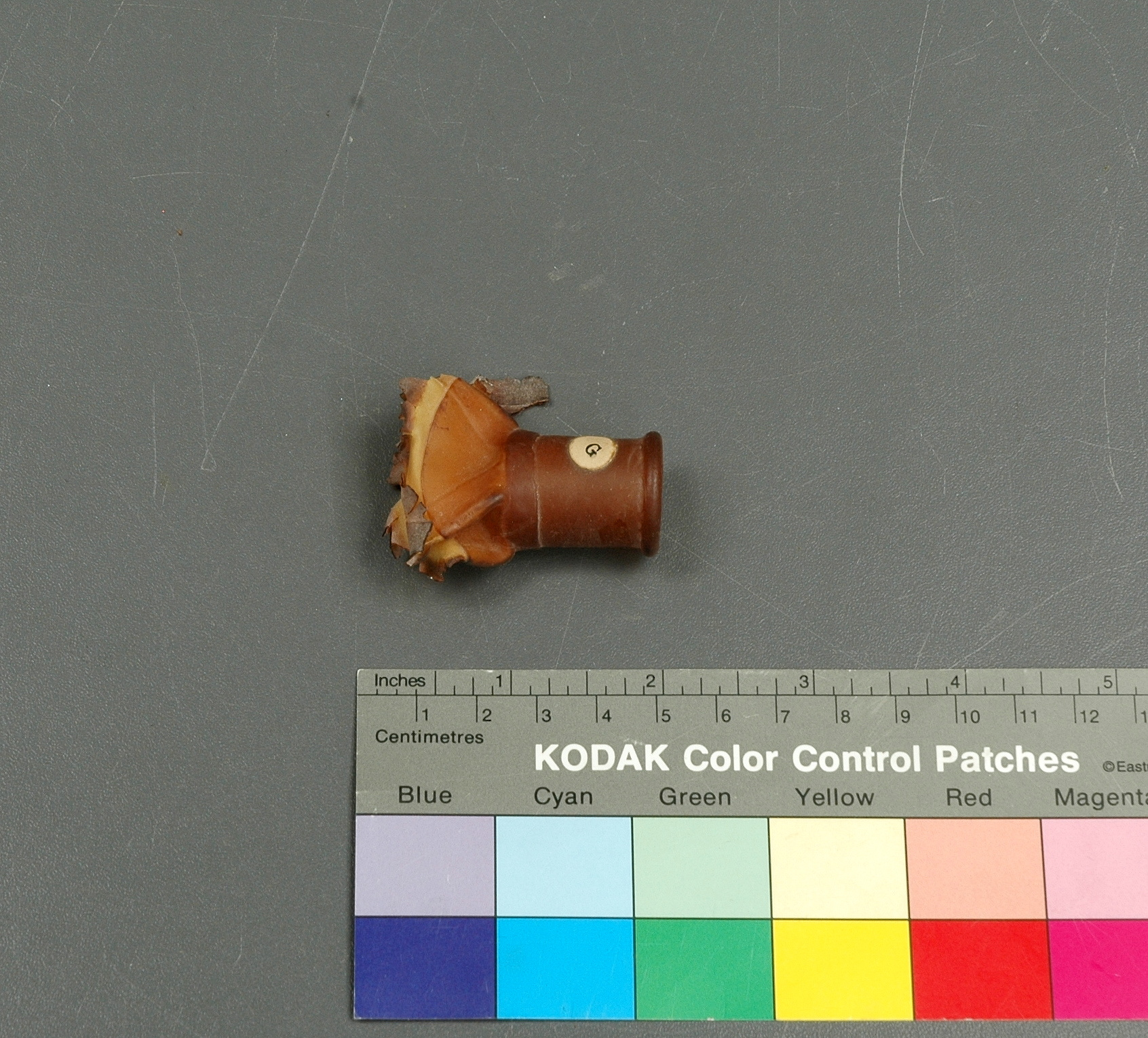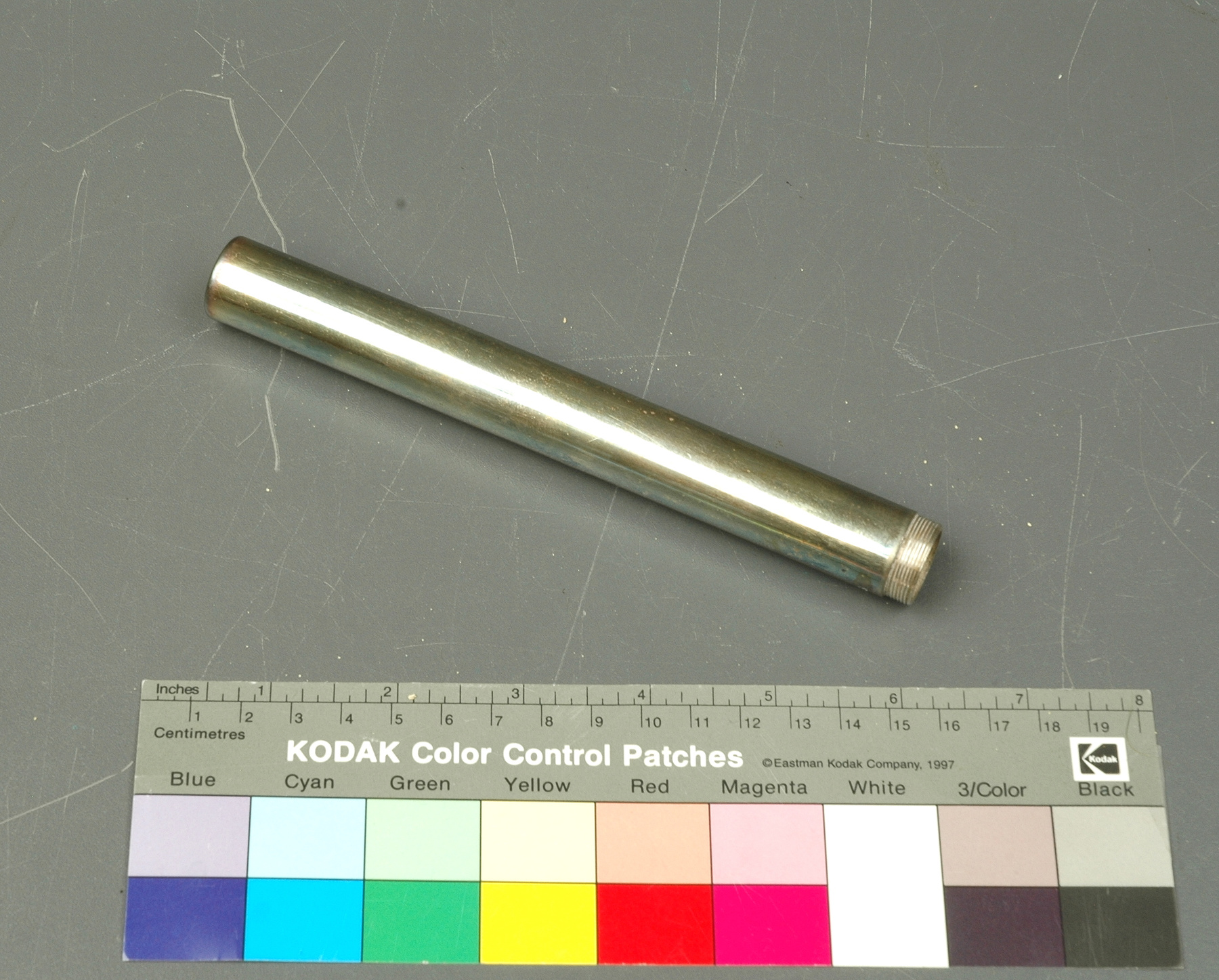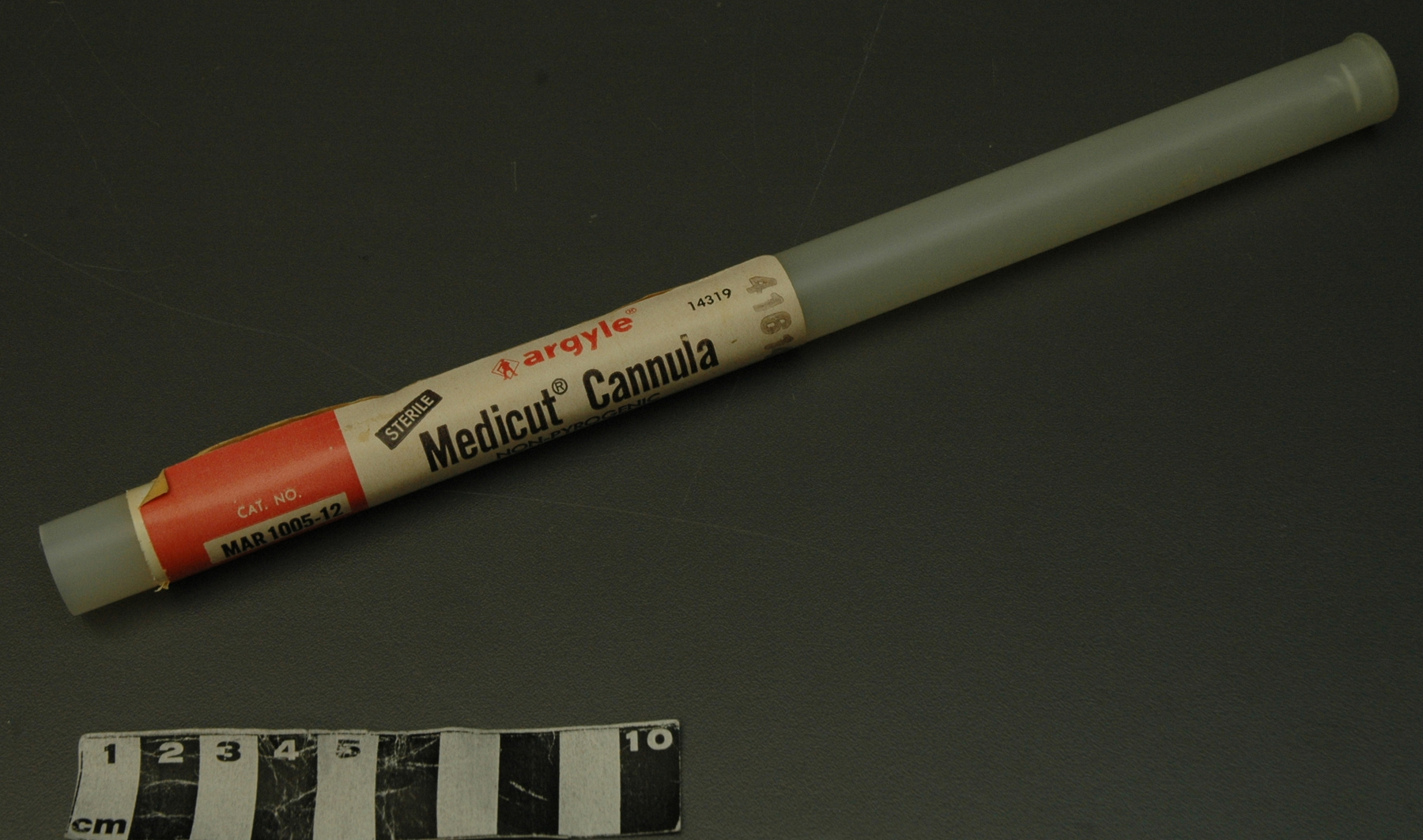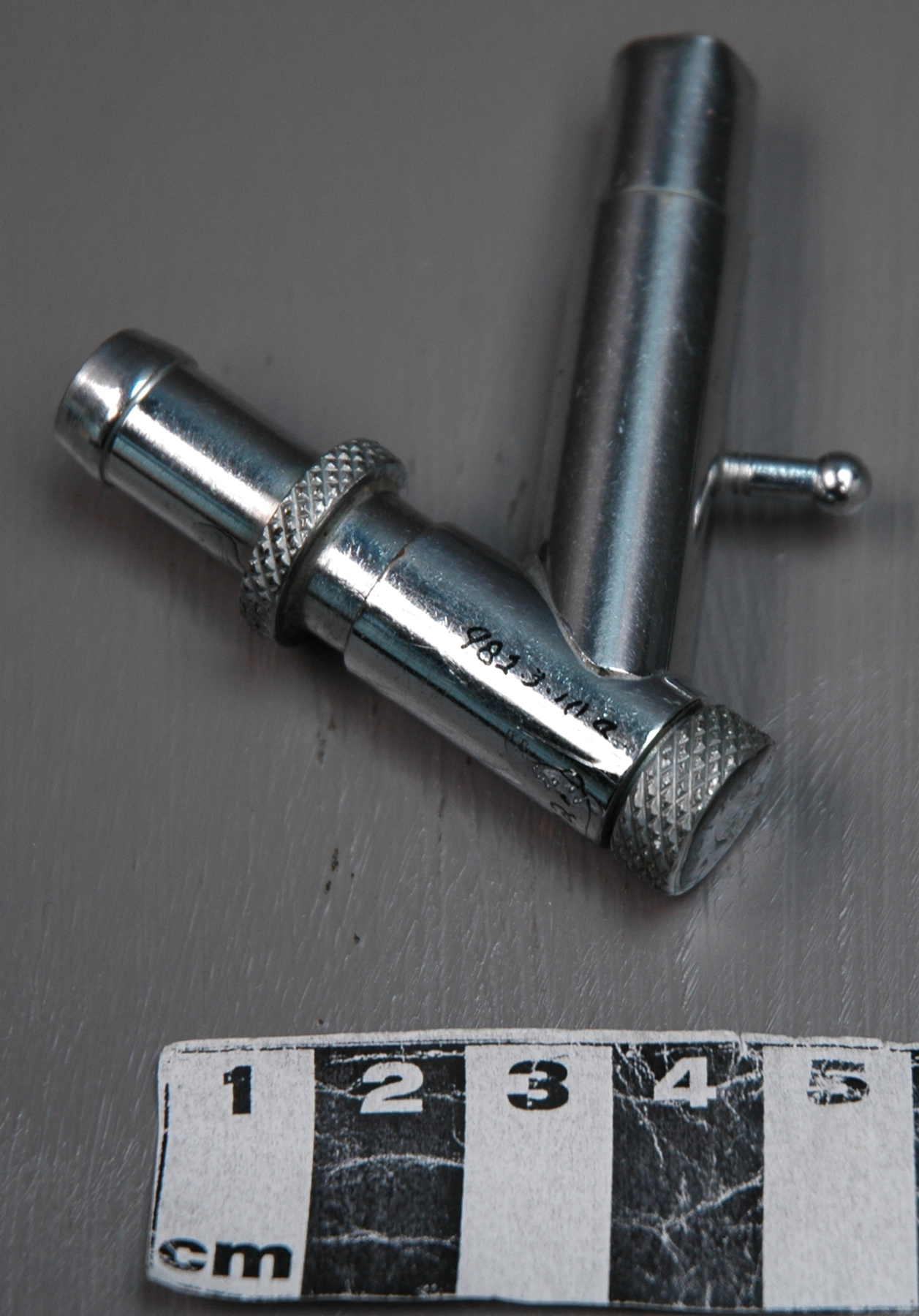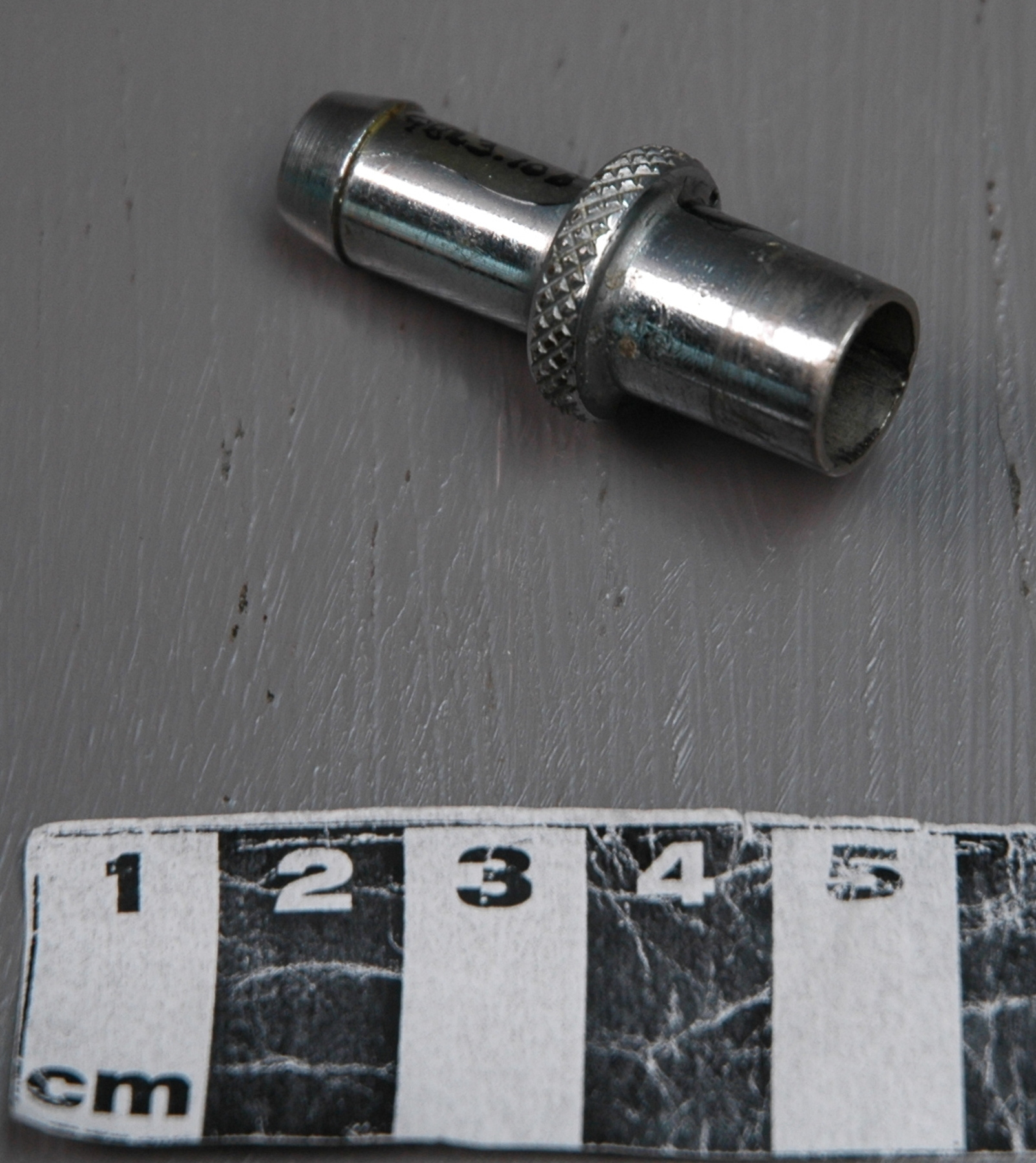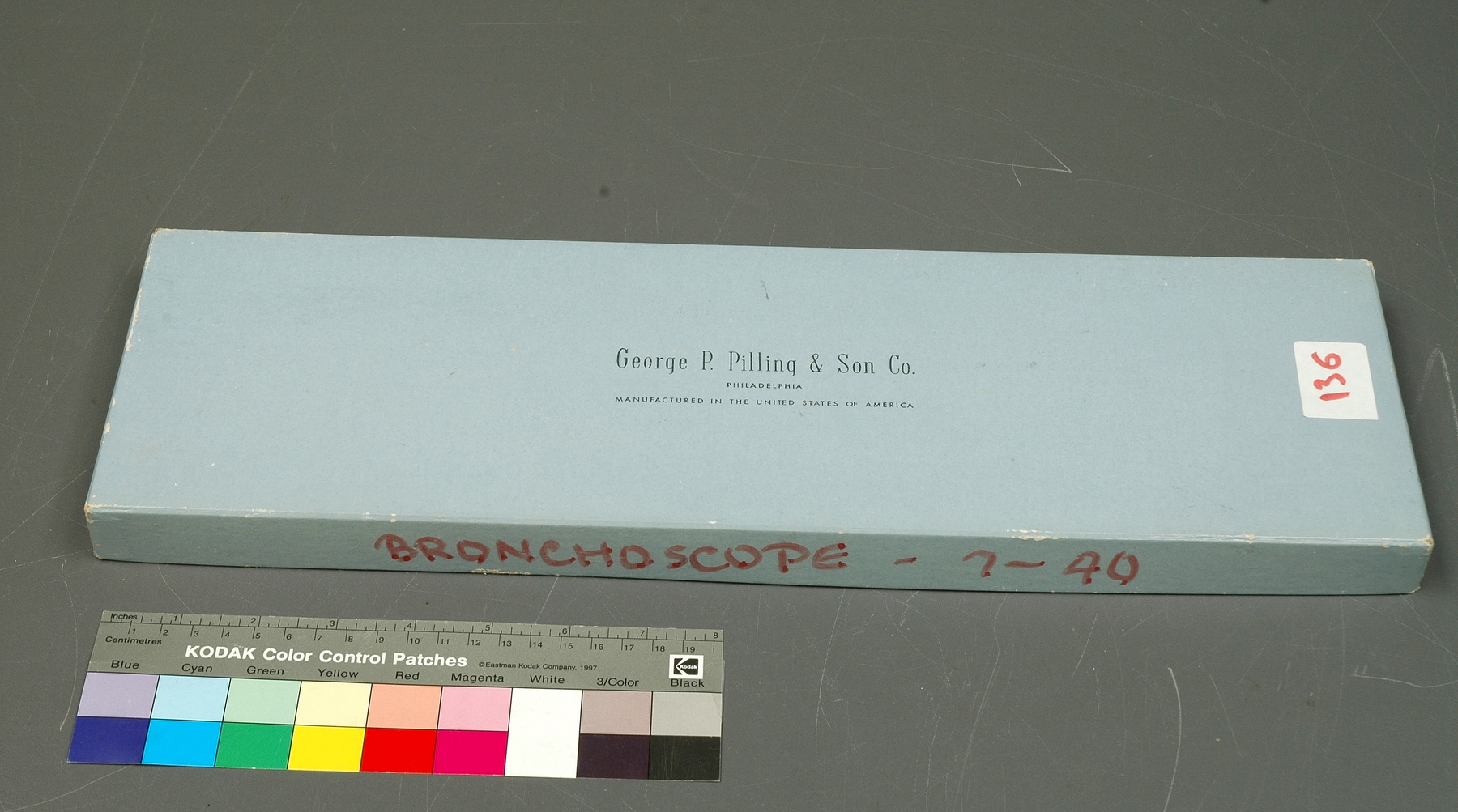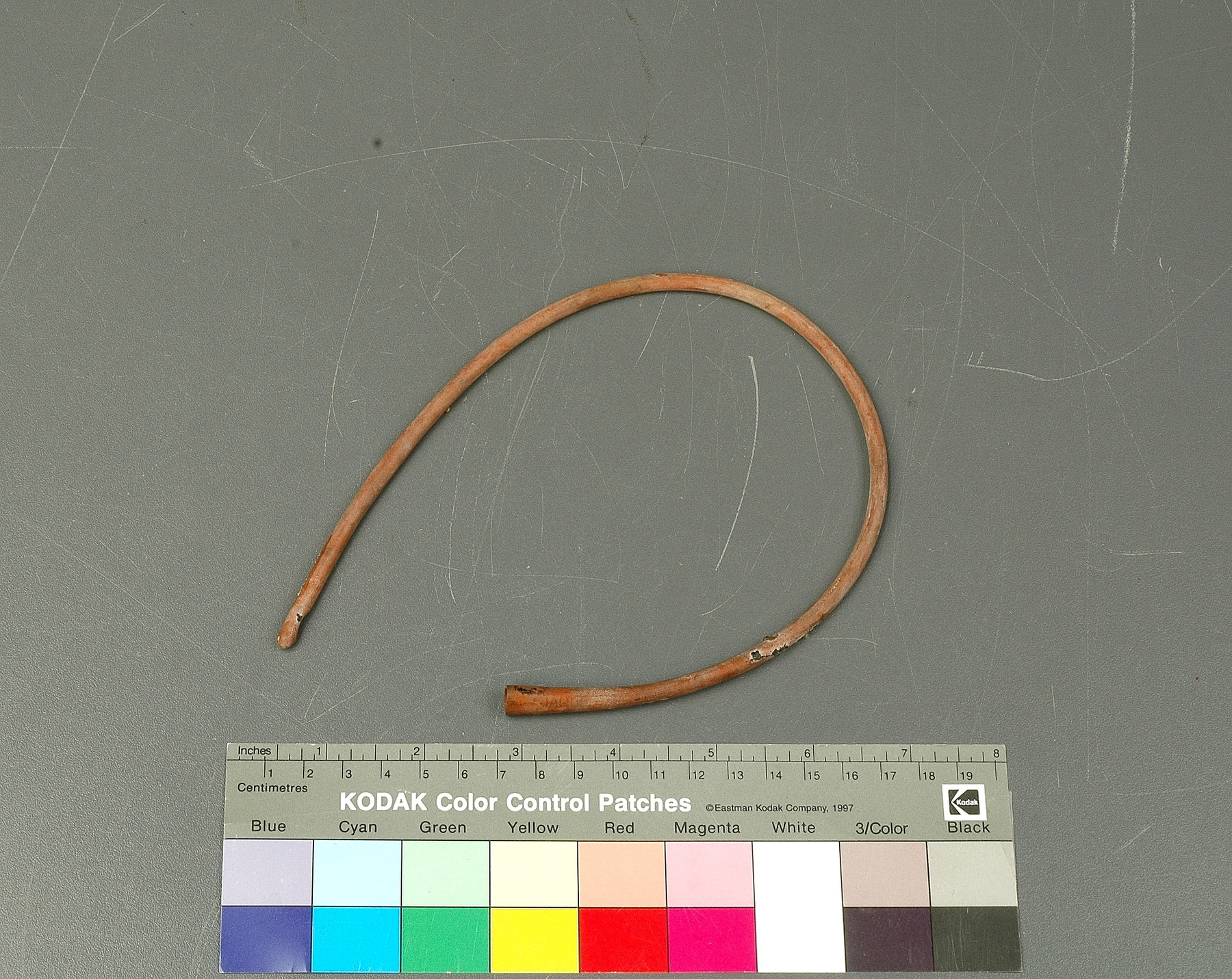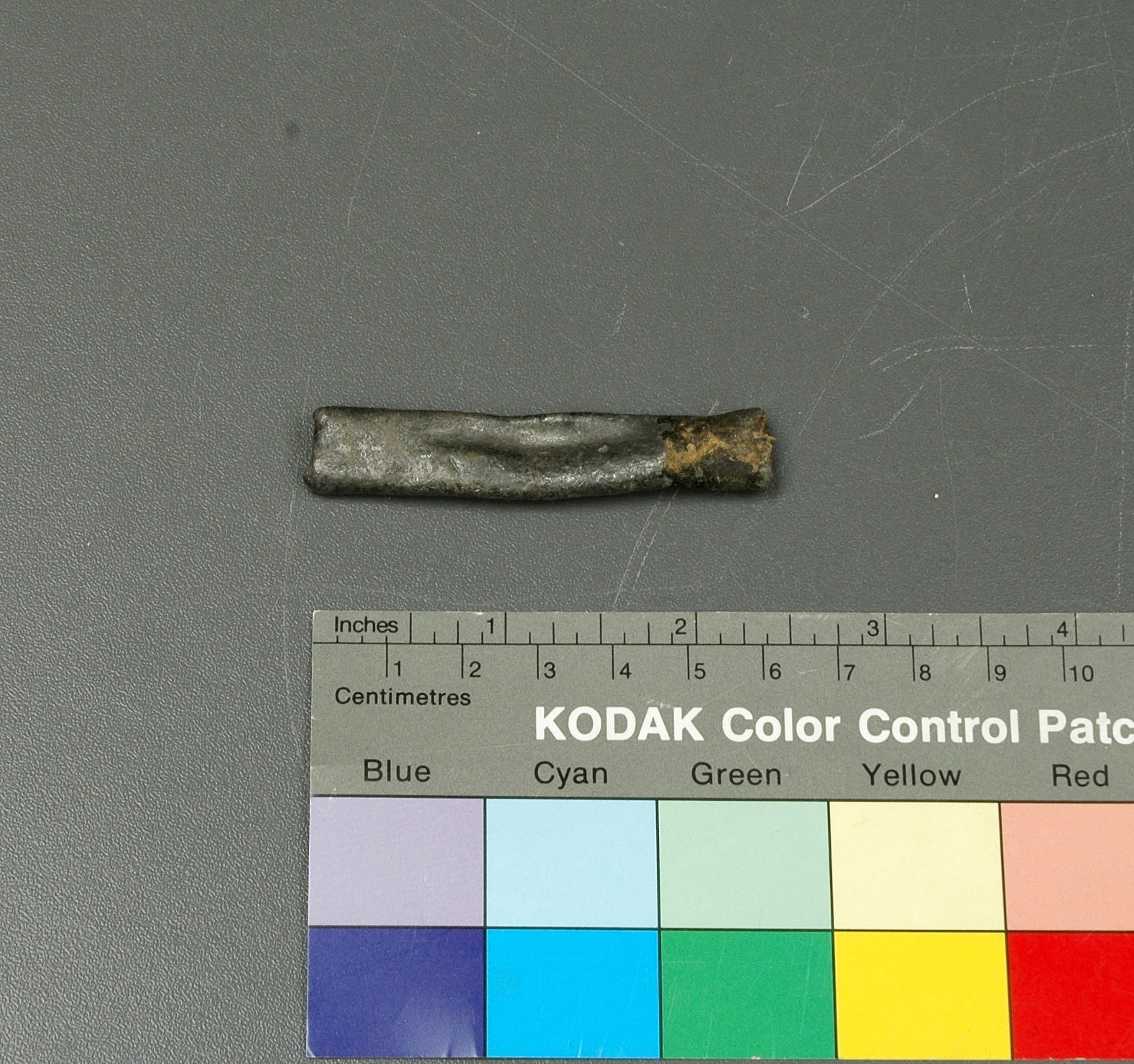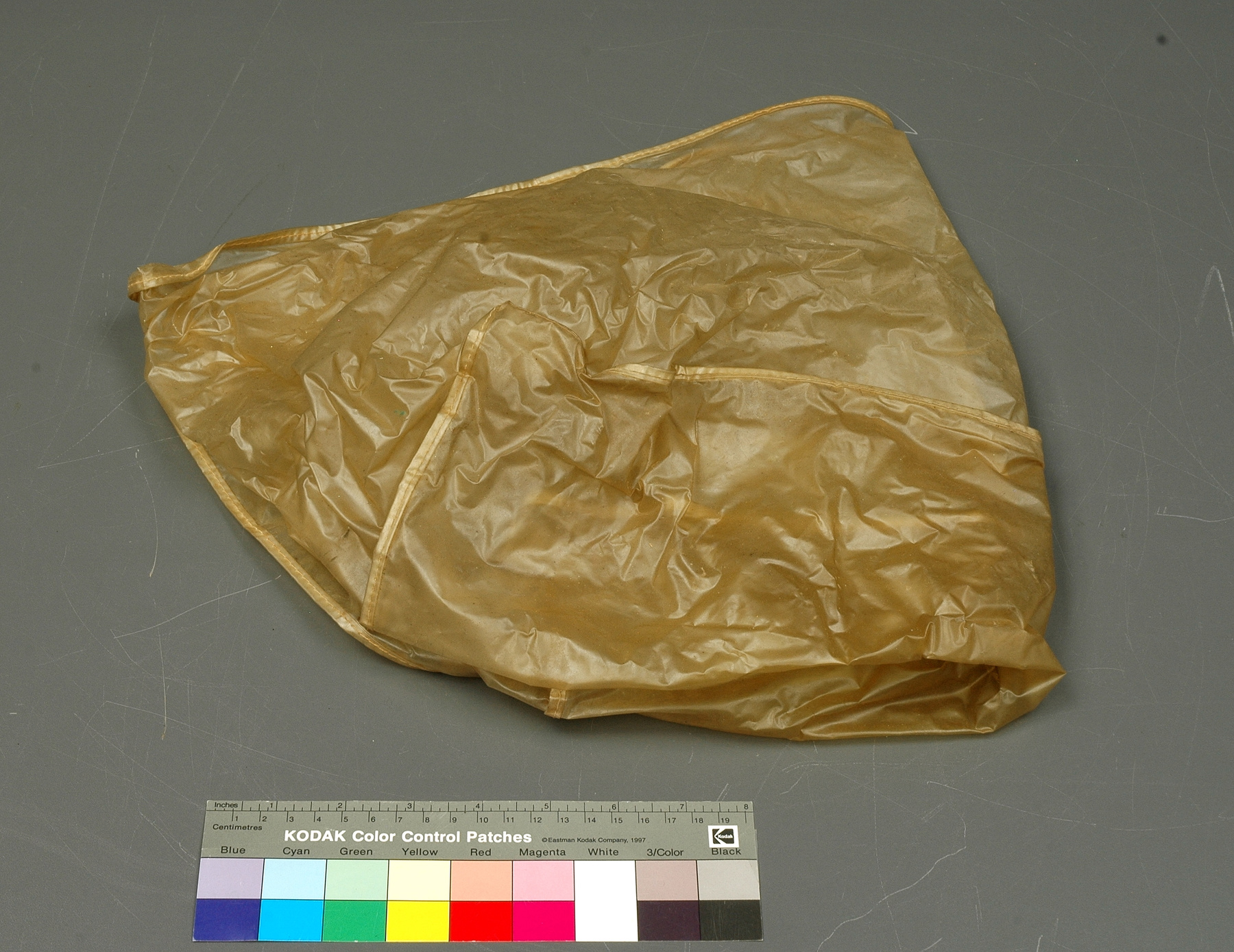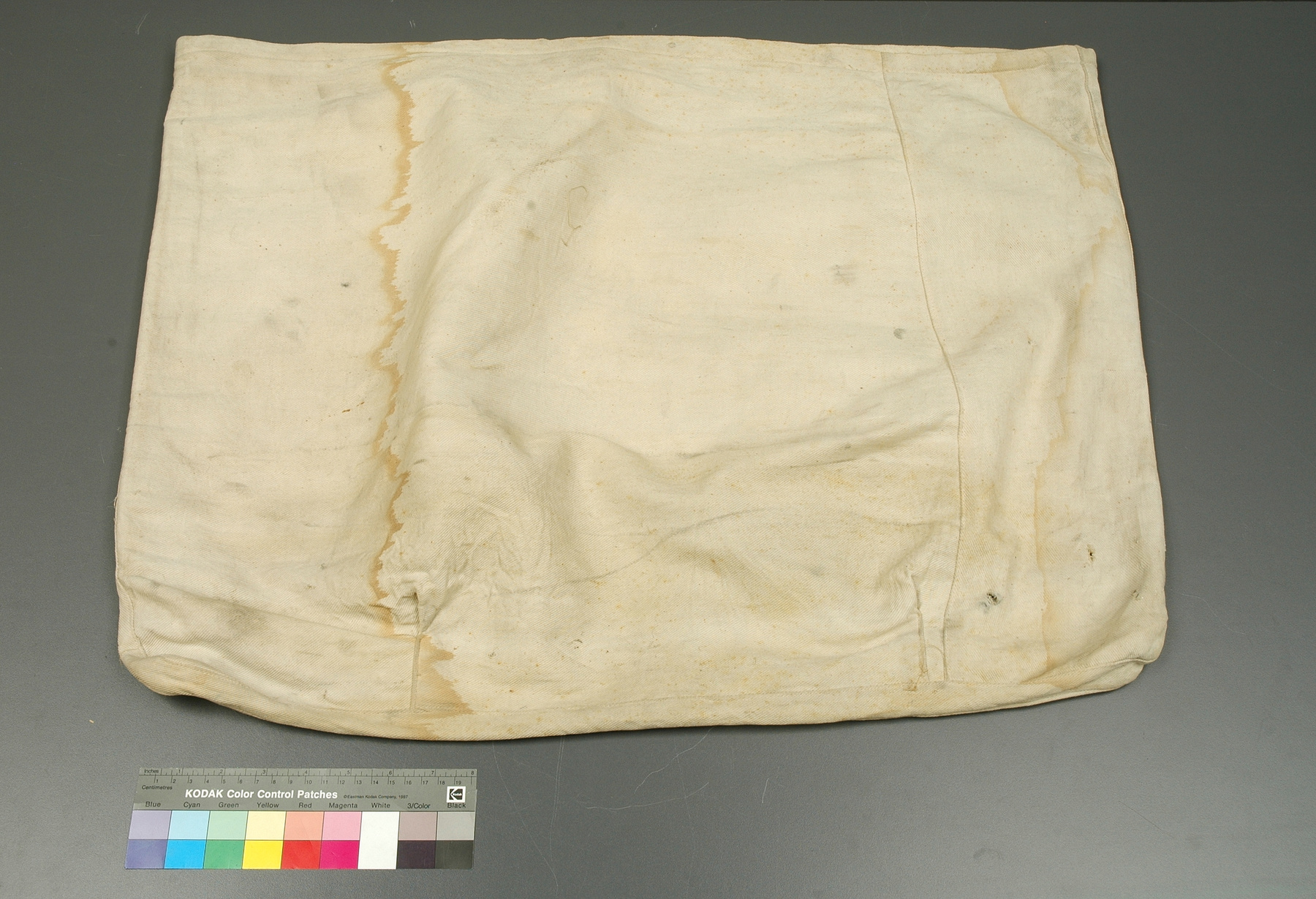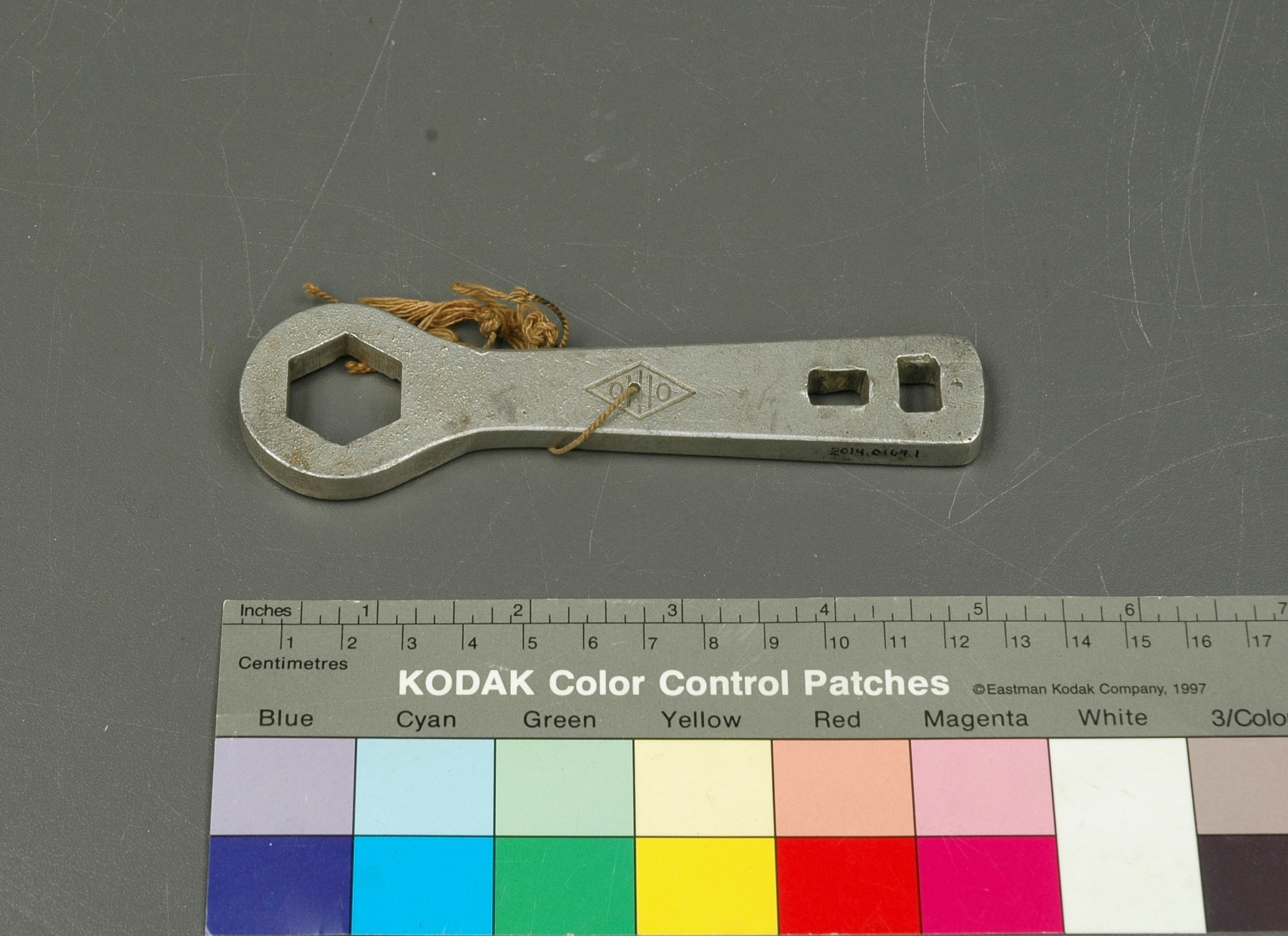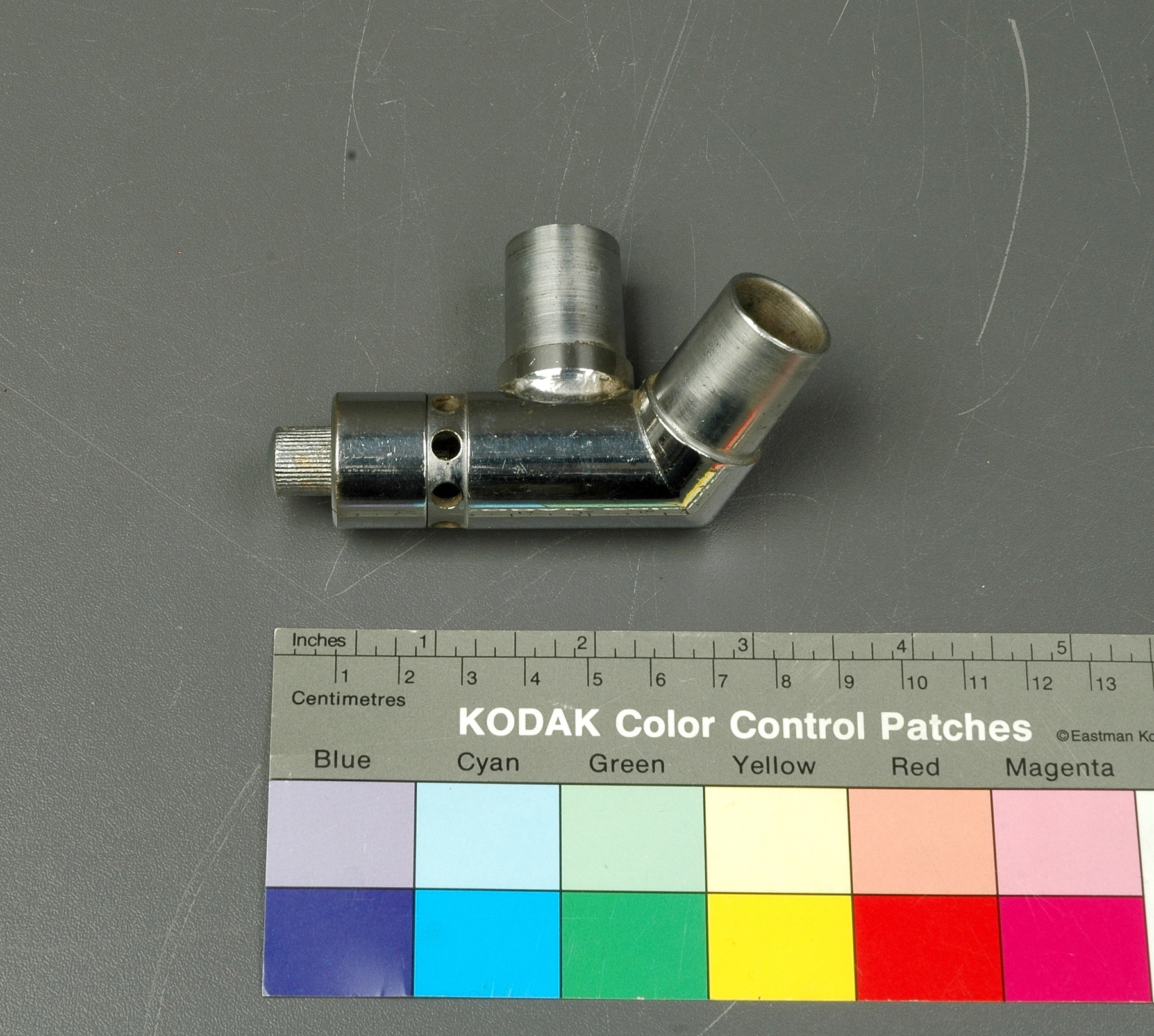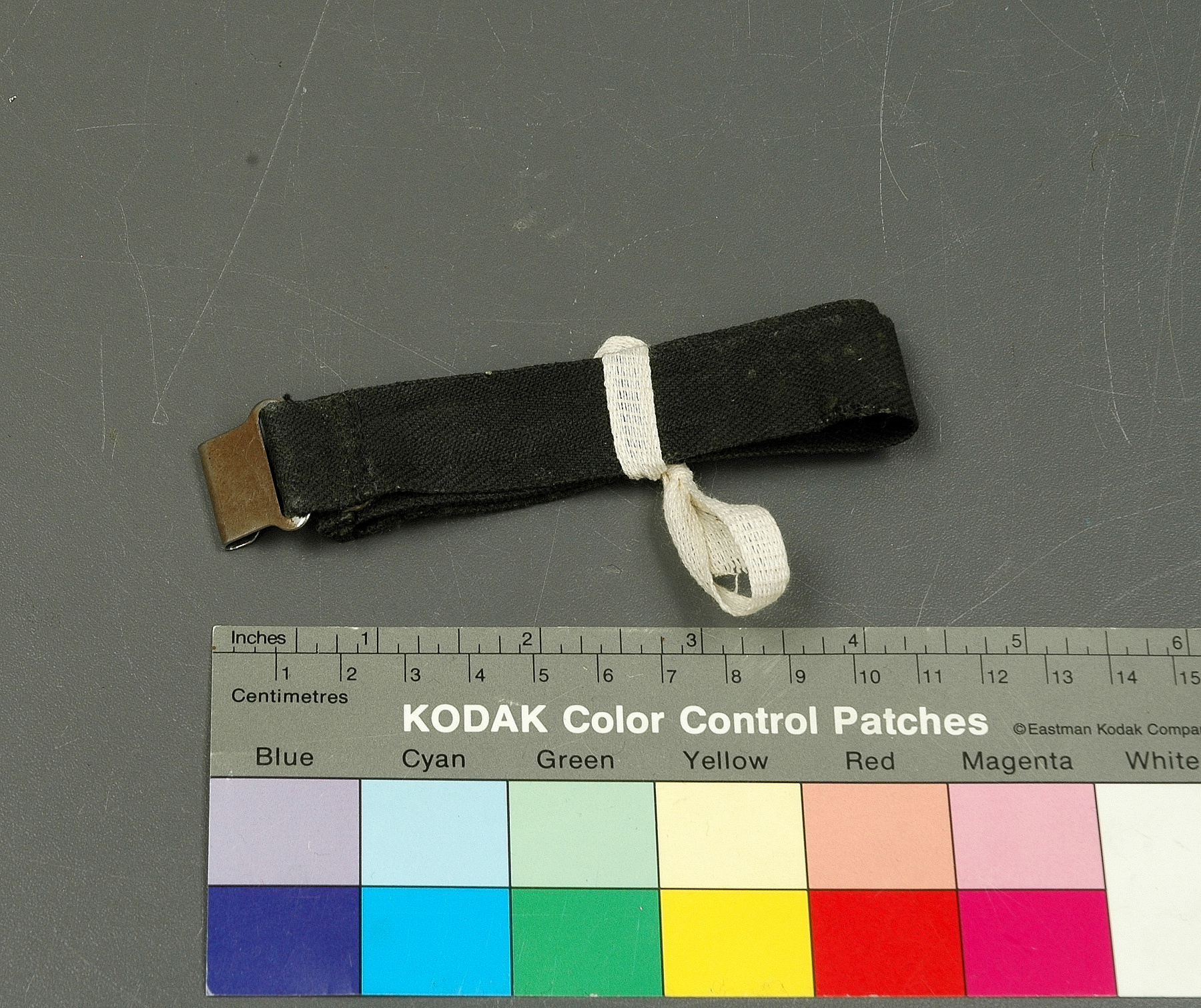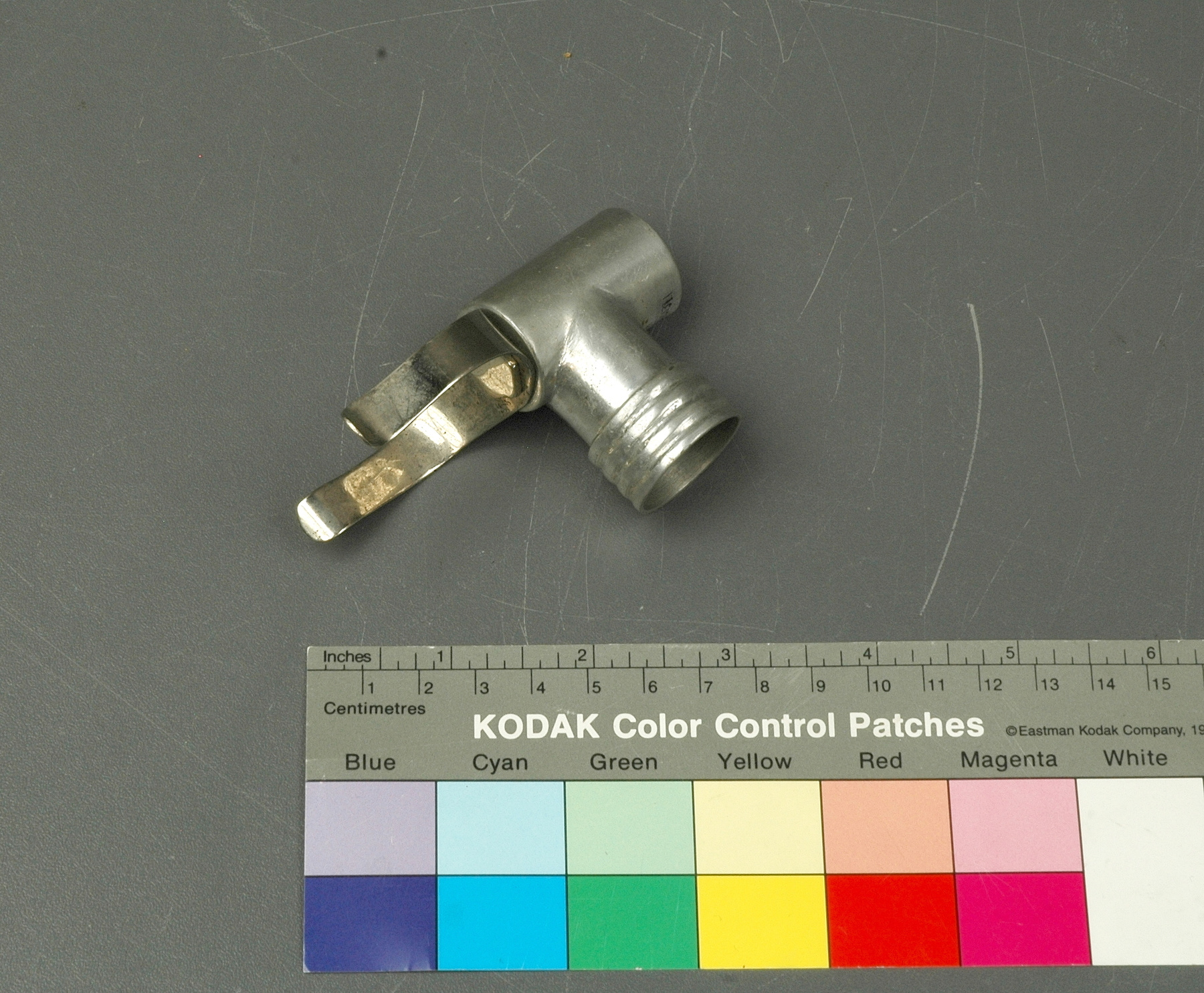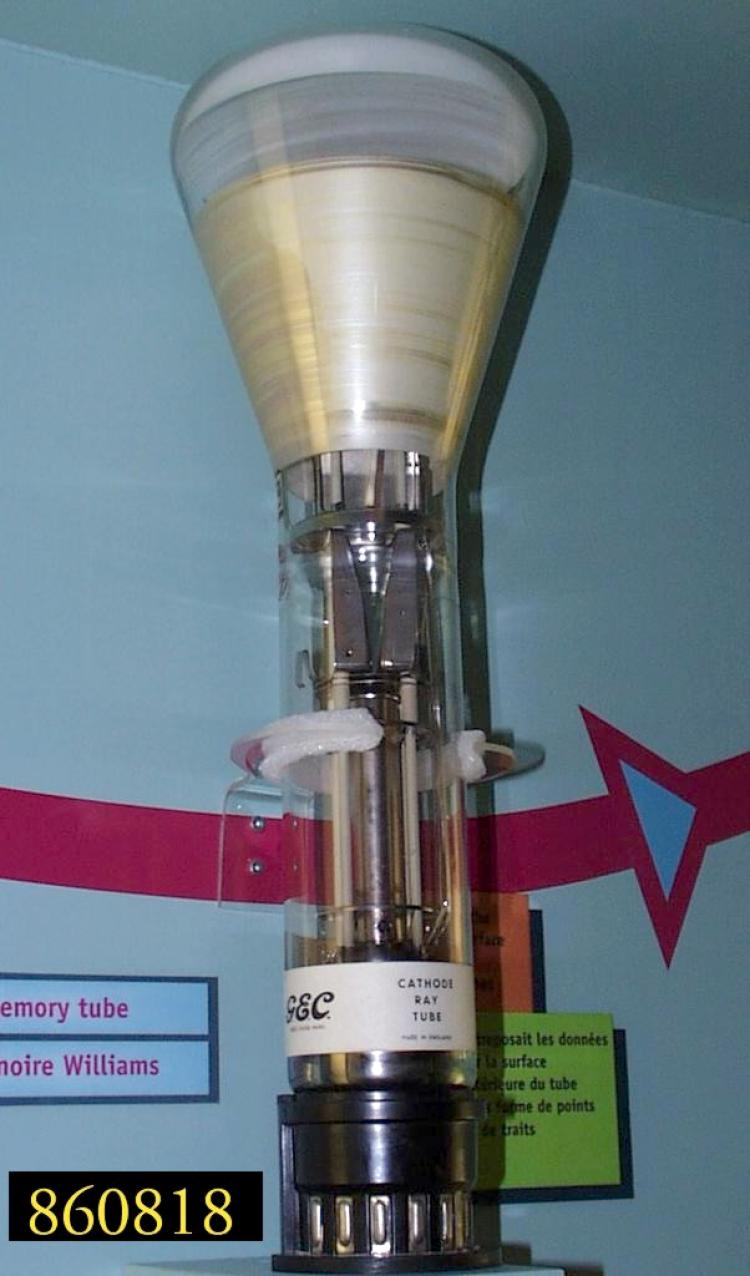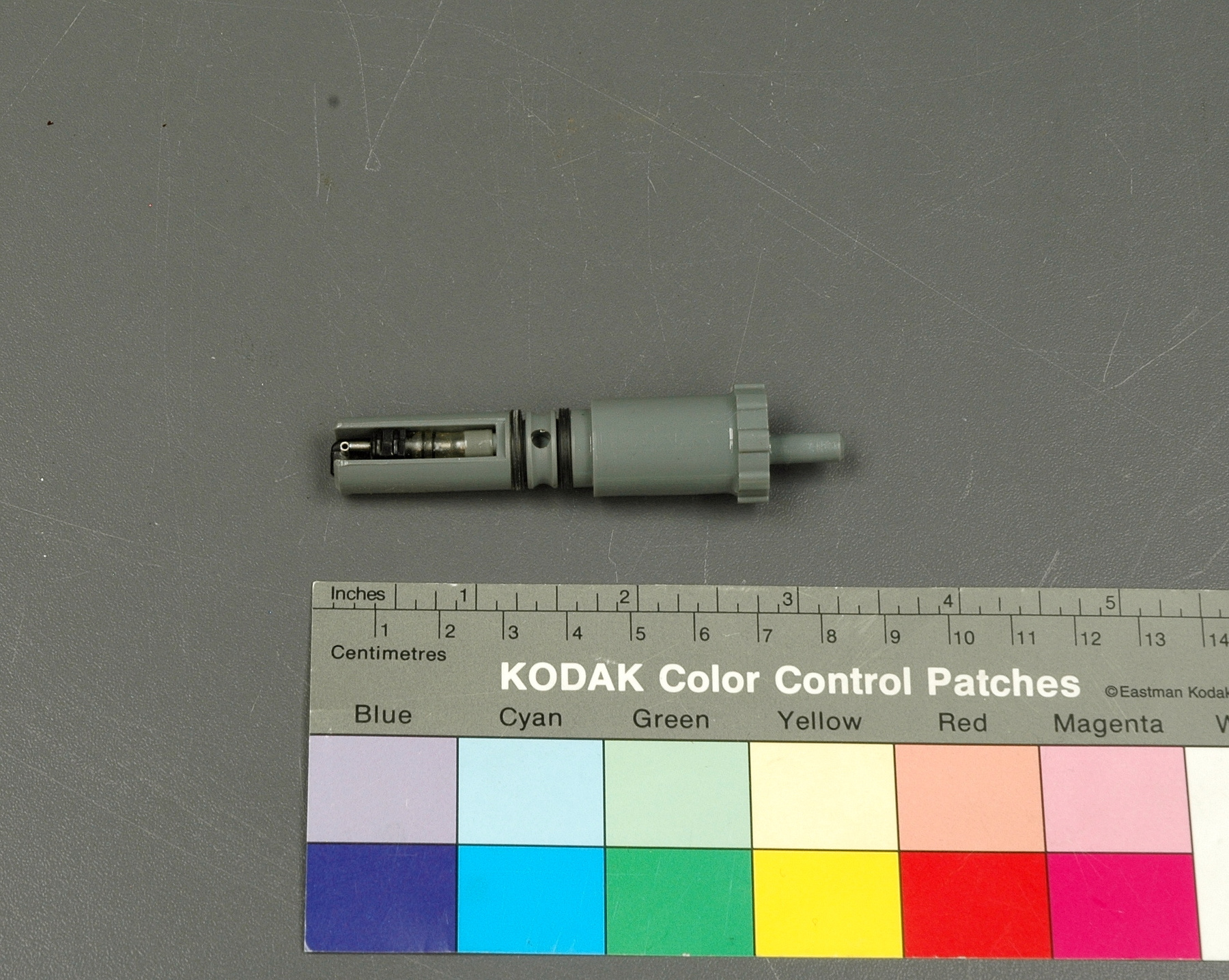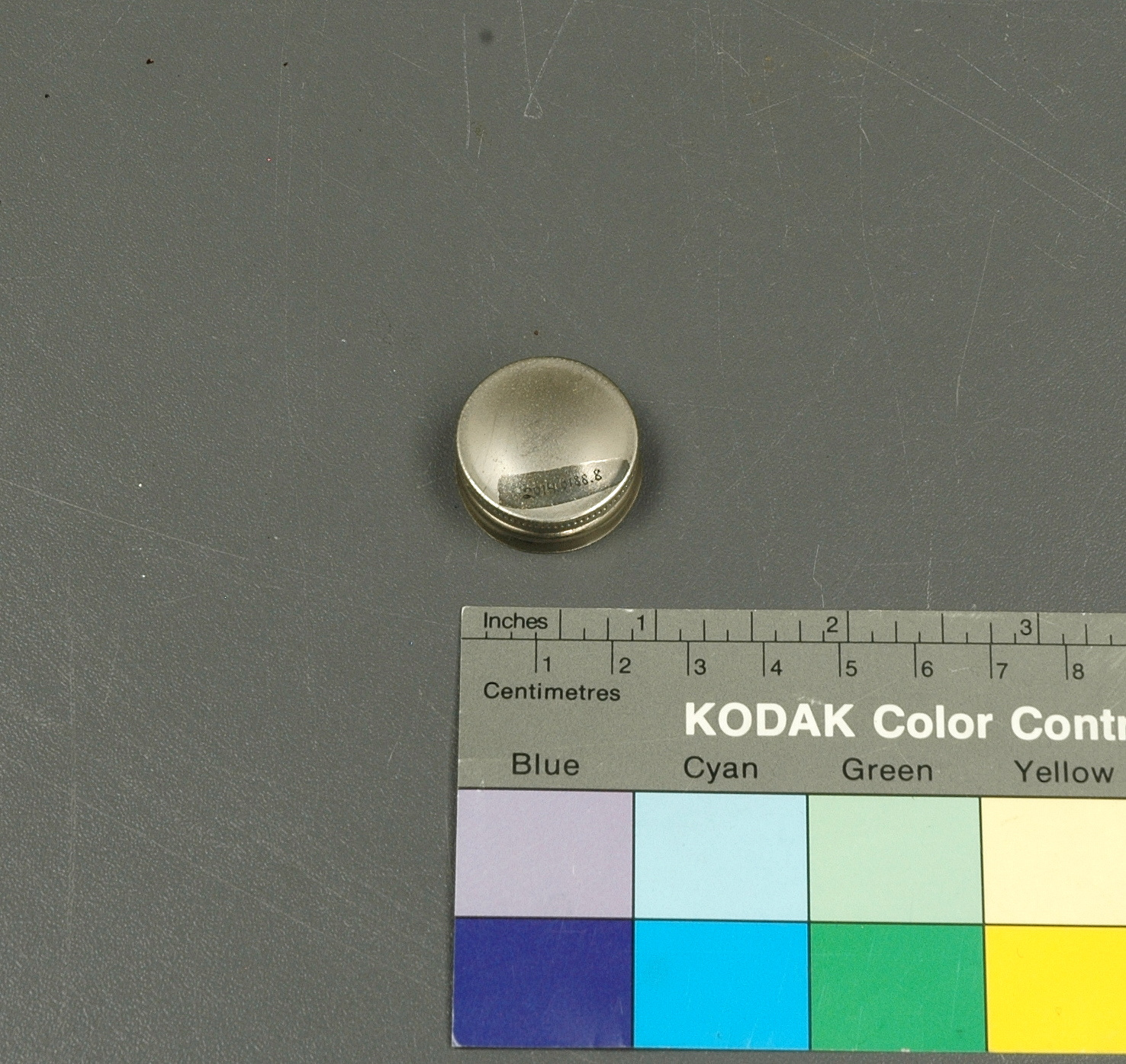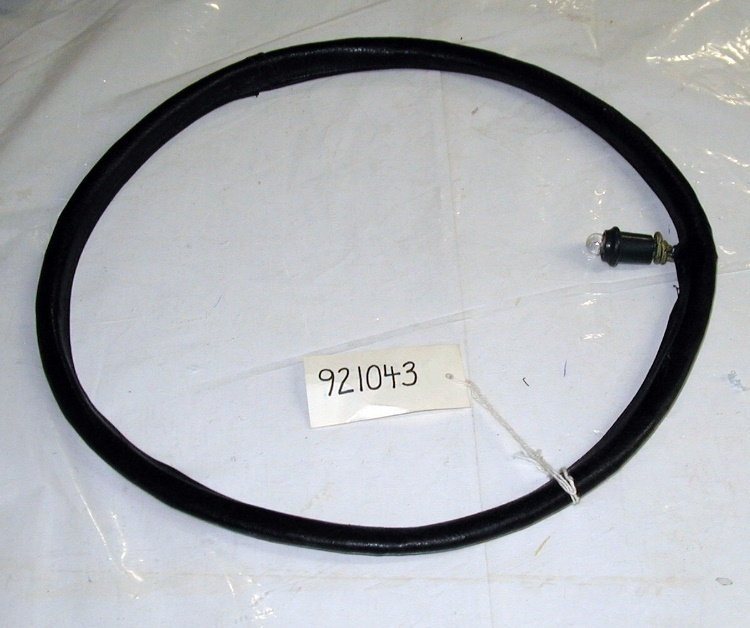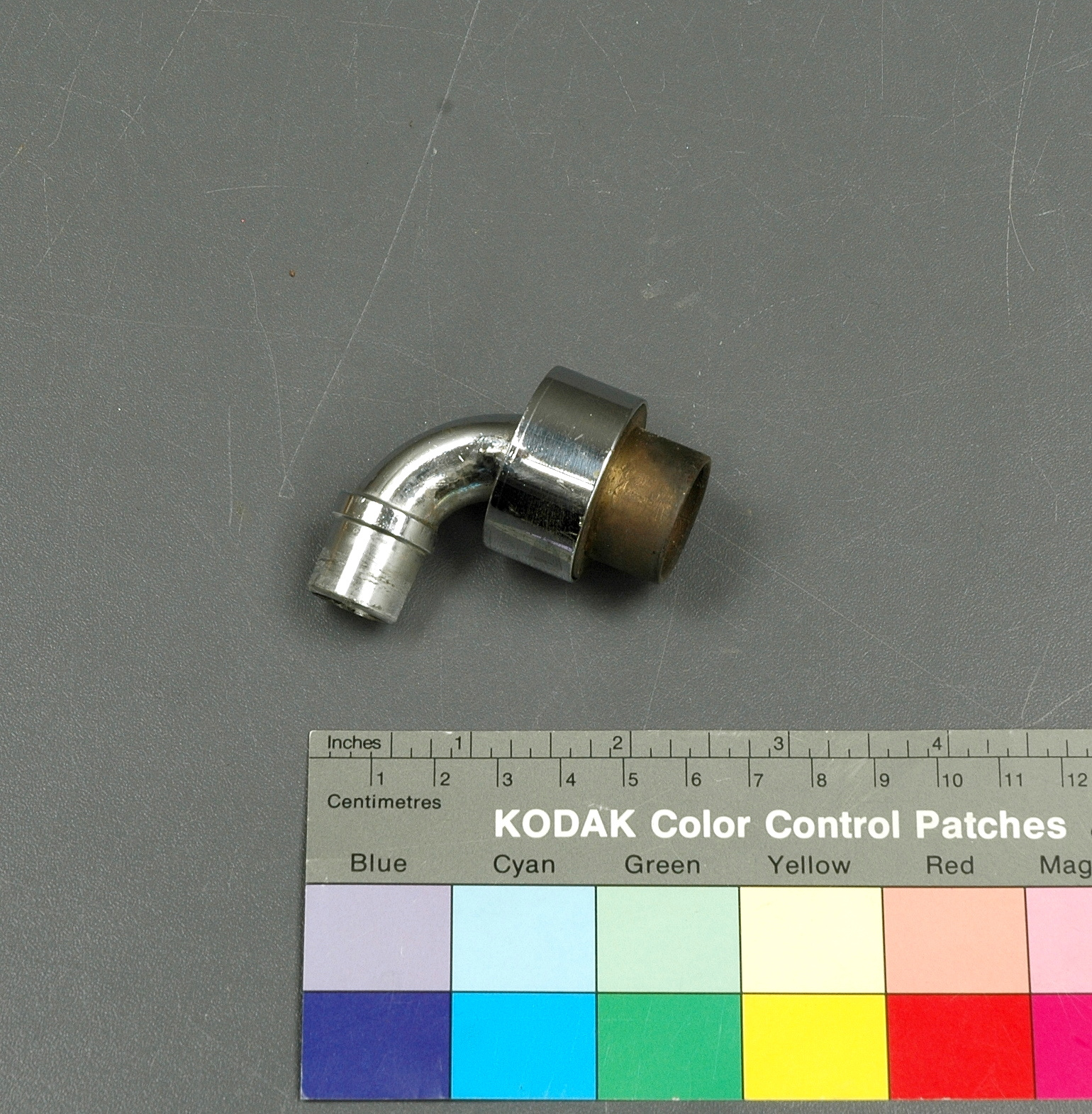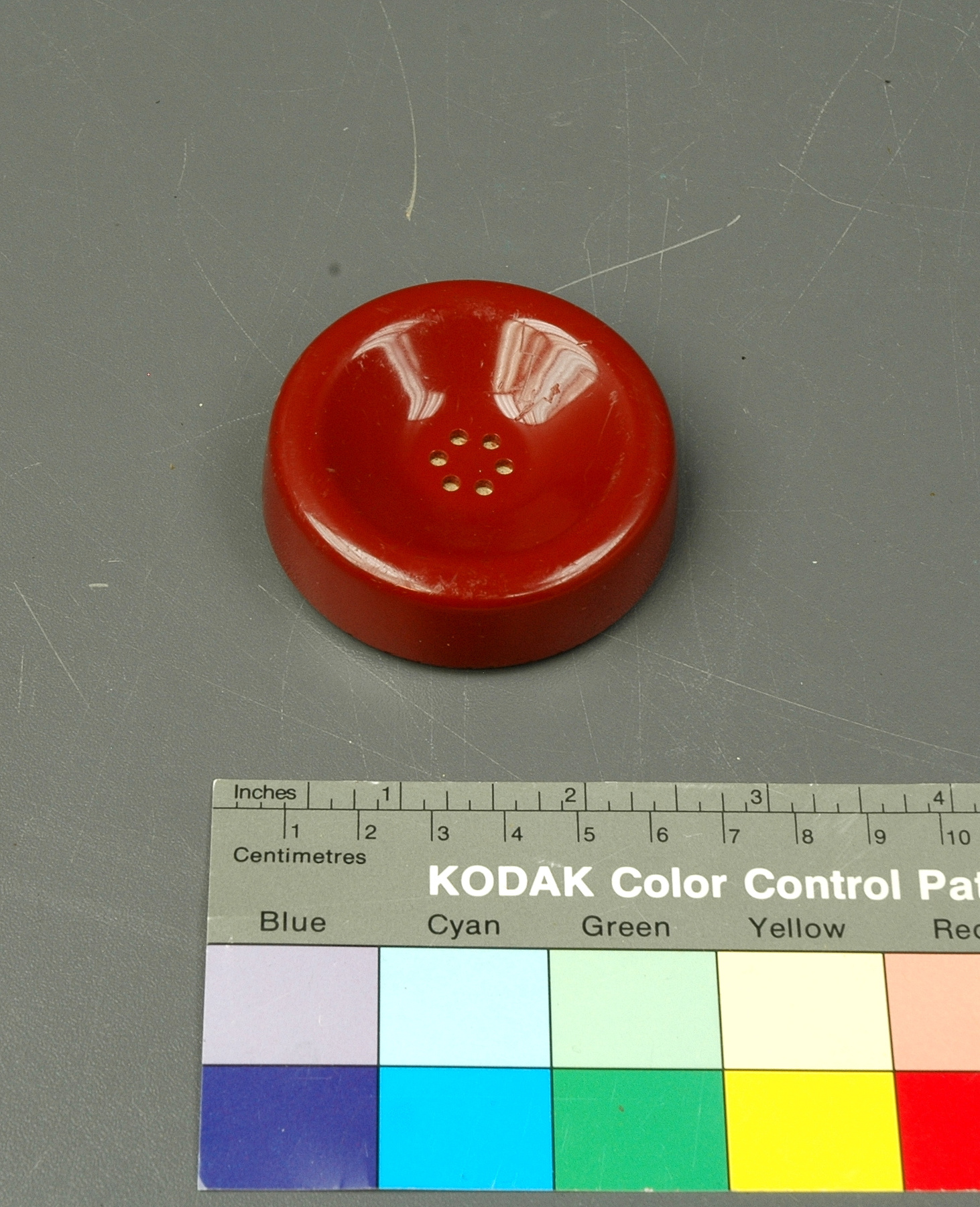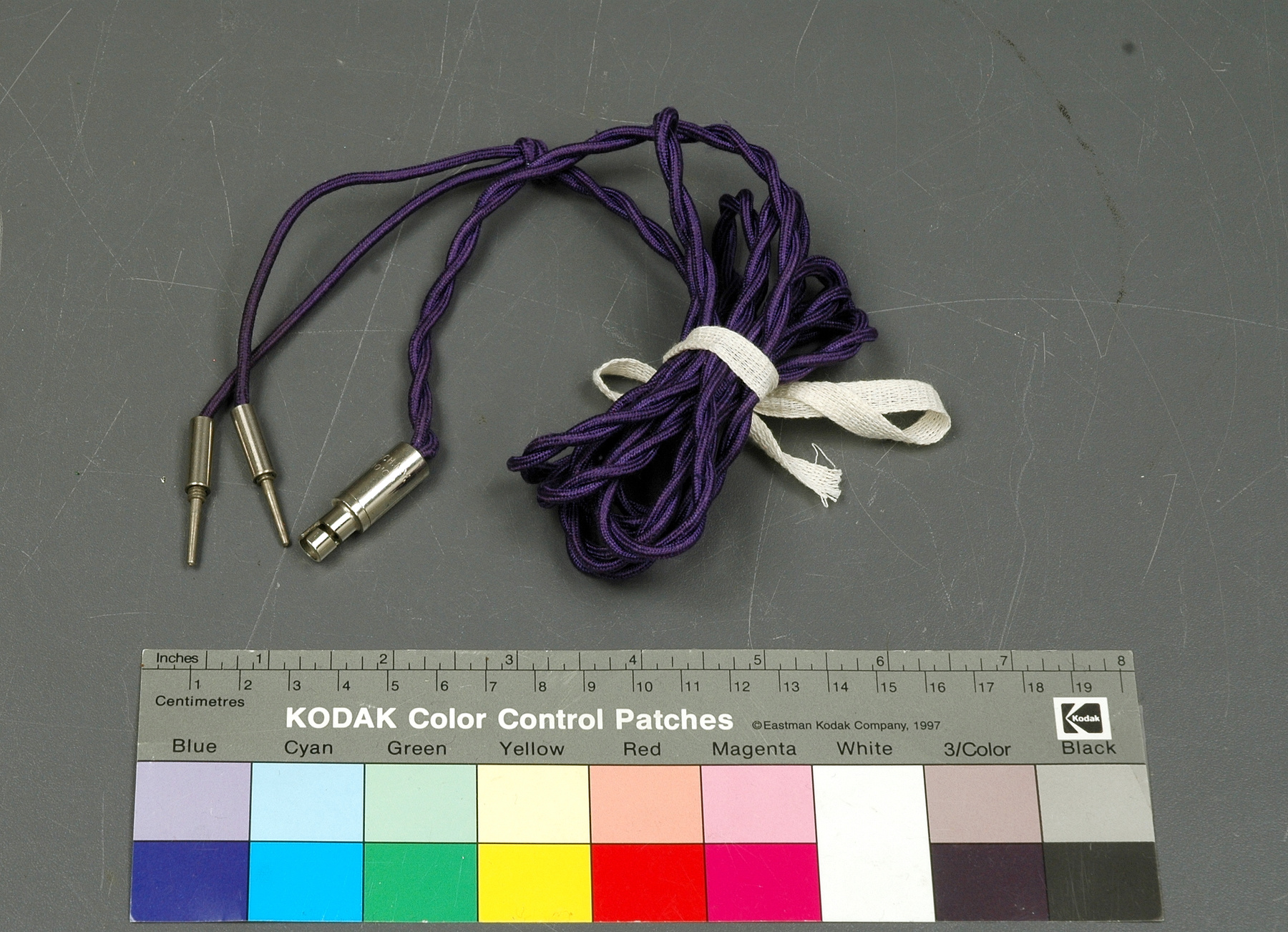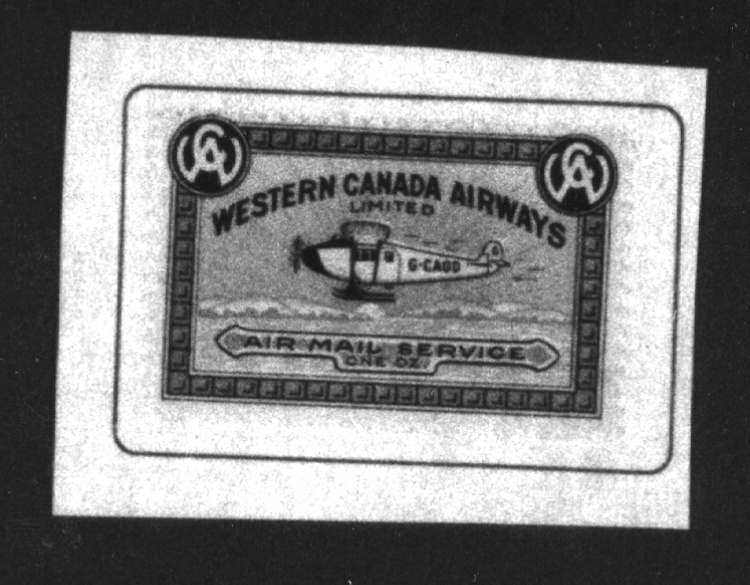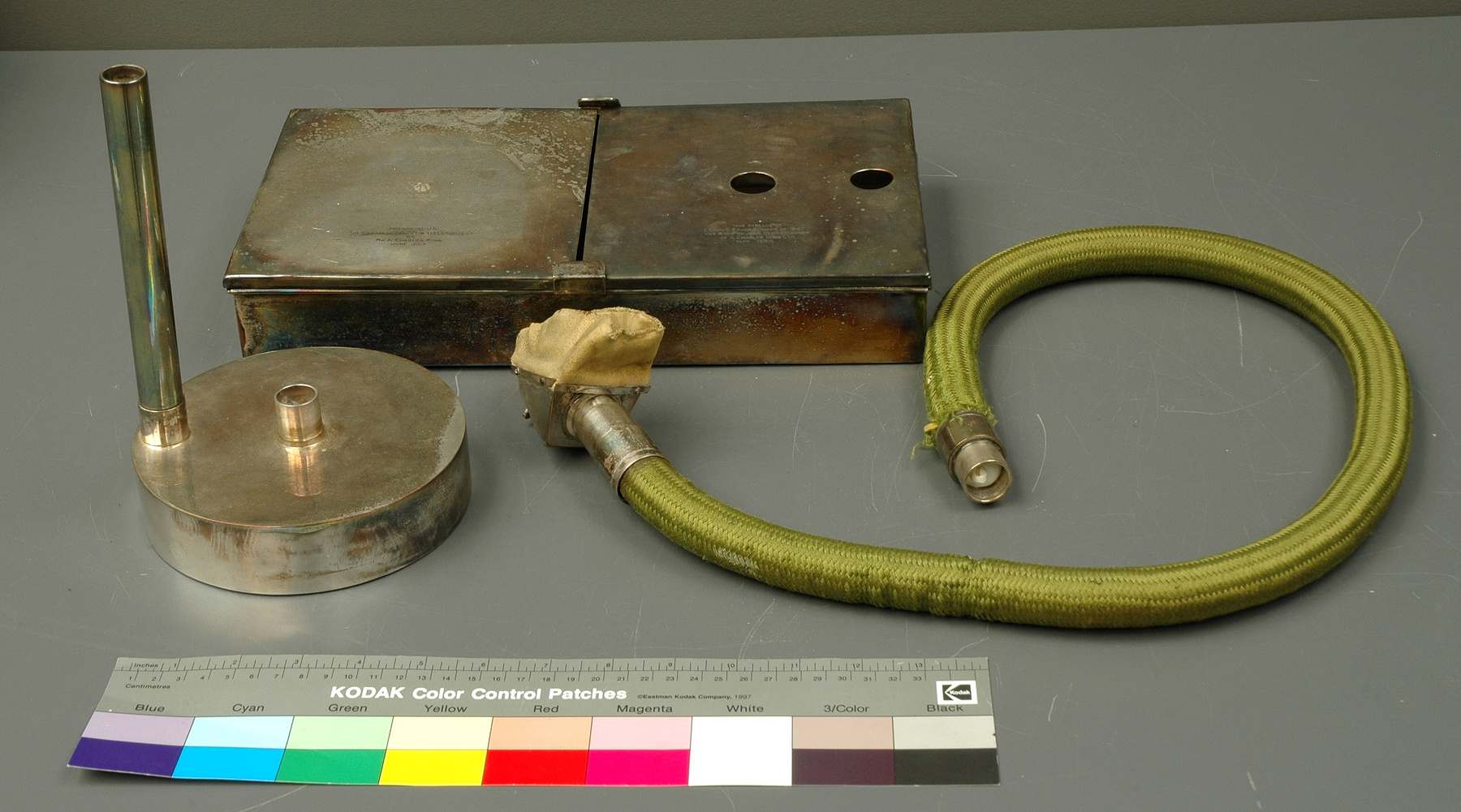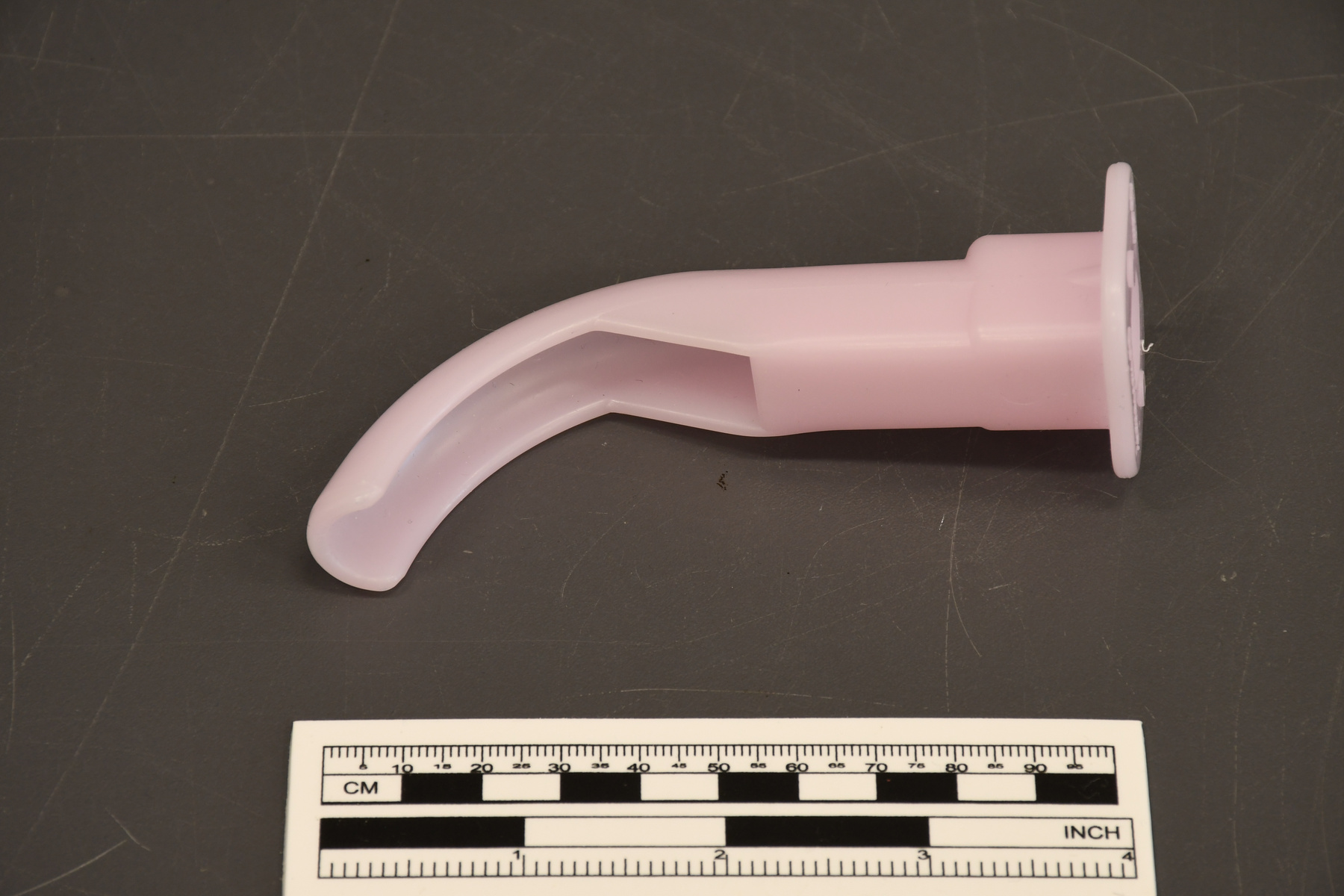Airway, artificial
Use this image
Can I reuse this image without permission? Yes
Object images on the Ingenium Collection’s portal have the following Creative Commons license:
Copyright Ingenium / CC BY-NC-ND (Attribution-NonCommercial 4.0 International (CC BY-NC 4.0)
ATTRIBUTE THIS IMAGE
Ingenium,
2015.0355.002
Permalink:
Ingenium is releasing this image under the Creative Commons licensing framework, and encourages downloading and reuse for non-commercial purposes. Please acknowledge Ingenium and cite the artifact number.
DOWNLOAD IMAGEPURCHASE THIS IMAGE
This image is free for non-commercial use.
For commercial use, please consult our Reproduction Fees and contact us to purchase the image.
- OBJECT TYPE
- Williams
- DATE
- 1982
- ARTIFACT NUMBER
- 2015.0355.002
- MANUFACTURER
- Unknown
- MODEL
- 10 cm
- LOCATION
- Canada
More Information
General Information
- Serial #
- N/A
- Part Number
- 2
- Total Parts
- 2
- AKA
- N/A
- Patents
- N/A
- General Description
- Synthetic airway. Tube en synthétique.
Dimensions
Note: These reflect the general size for storage and are not necessarily representative of the object's true dimensions.
- Length
- 11.3 cm
- Width
- 3.8 cm
- Height
- 3.7 cm
- Thickness
- N/A
- Weight
- N/A
- Diameter
- N/A
- Volume
- N/A
Lexicon
- Group
- Medical Technology
- Category
- Chemicals & medications
- Sub-Category
- N/A
Manufacturer
- AKA
- Unknown
- Country
- Canada
- State/Province
- Unknown
- City
- Unknown
Context
- Country
- Canada
- State/Province
- Alberta
- Period
- Unknown - possibly unused. Inconnu - possiblement pas utilisé
- Canada
-
The Tudor Williams Airway was invented and developed by a member of the anesthetic department at Foothills Medical Centre in Calgary, Alberta, Canada. La voie respiratoire Tudor Williams a été inventée et développée par un membre du service d’anesthésie du Centre médical Foothills à Calgary, en Alberta, au Canada. - Function
-
The Airway Intubator serves two purposes: as an oropharyngeal airway and, should the need arise, an endotracheal tube can be passed through the center of the airway intubator into the trachea without the need for further instrumentation. Le Airway Intubator sert à deux fins : comme une voie aérienne oropharyngée et, si le besoin se présente, un tube endotrachéal peut être passé par le centre de l’intubator des voies aériennes dans la trachée sans avoir besoin d’instruments supplémentaires. - Technical
-
The device differs from a normal airway in that it allows an anesthesiologist to perform tracheal intubation through the device without using a laryngoscopes. In other words, tracheal intubation is carried out 'blindly', that is, without looking in the mouth. Dr Williams also used the device to facilitate intubation using a fibre-optic scope, which would allow visualization of the vocal cords. The endotracheal tube could then be railroaded over the scope and through the airway, down into the trachea. The heavy (pink) plastic tubing would also protect the fragile scope from damage from a patient's teeth. One intrinsic hazard with the device, however, is that it is very difficult to tell the difference between the 10 cm and the 9 cm sizes, unless they are next to each other. If the smaller size was chosen, then that could result in it being impossible for the anesthesiologist to slide the tube over the fibre-optic scope. - Area Notes
-
Unknown
Details
- Markings
- In raised letters on the surface of the airway: "Made/ in/ Canada"/ "10 cm/ Do not reuse."
- Missing
- Appears complete
- Finish
- An artificial airway made from a single piece of pink synthetic. Une voie aérienne artificielle fabriquée à partir d’une seule pièce de synthétique rose.
- Decoration
- N/A
CITE THIS OBJECT
If you choose to share our information about this collection object, please cite:
Unknown Manufacturer, Airway, artificial, after 1982, Artifact no. 2015.0355, Ingenium – Canada’s Museums of Science and Innovation, http://collection.ingeniumcanada.org/en/item/2015.0355.002/
FEEDBACK
Submit a question or comment about this artifact.
More Like This
